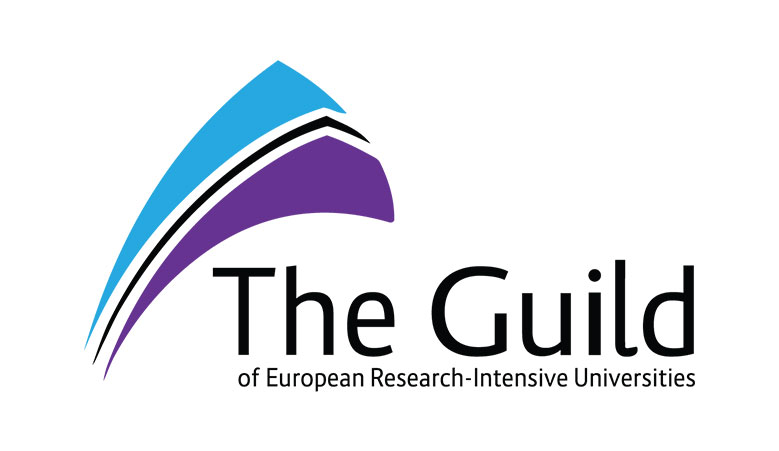Academic personalities from Transylvania
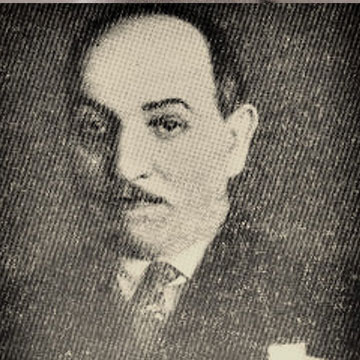
THEODOR ANGHELUȚĂ
Mathematician, professor of Higher Algebra at the University of Cluj between 1923-1947 and 1950-1955, member of the Romanian Academy (since 1948).
THEODOR ANGHELUȚĂ
(born April 28, 1882, Adam, Galați County – died May 30, 1964, Cluj)
Mathematician, professor of Higher Algebra at the University of Cluj between 1923-1947 and 1950-1955, member of the Romanian Academy (since 1948).
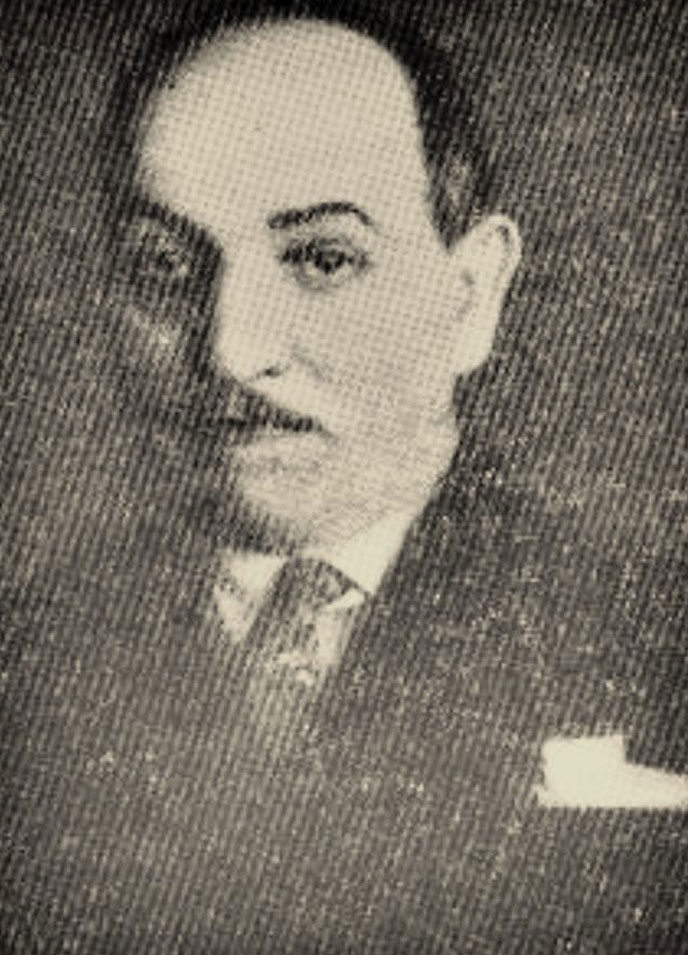
After high school studies in Bârlad, he attended the Faculty of Sciences, the Mathematics section, of the University of Bucharest (1902-1905). Between 1910-1914 he followed specialization studies at the Sorbonne, where he attended, among other things, the courses of professor Émile Picard. In 1922 he earned his Ph.D. degree in Mathematics at the University of Bucharest with the thesis "A general class of trigonometric polynomials and the approximation with which they represent a continuous function" (in Romanian).
In 1914 he became an associate professor at the Faculty of Sciences, the Mathematics section, of the University of Bucharest, and in 1919 – substitute professor at the Chair of Algebra and Number Theory at the same faculty. In 1923 he was employed as a full professor at the Chair of Higher Algebra at the Faculty of Sciences of the University of Cluj, a position he held until 1947, when he retired. During this period, he occasionally assumed the role of substitute professor in the disciplines of mechanics and function theory. In December 1950 he was asked to return as a professor at the Faculty of Mathematics and Physics of the University of Cluj, where he remained until 1955. Between 1955-1962 he was professor of mathematics at the Polytechnic Institute of Cluj.
Administratively, Theodor Angheluță was, as dean, in charge of the Faculty of Sciences in Cluj (1930-1931). During the Second World War, when the Faculty of Sciences of the University of Cluj took refuge in Timișoara, he was again, for a short time, dean (1944).
His research interests included: theory of functions, differential, integral, algebraic and functional equations, which he dealt with in particular, being the founder of a research laboratory on this subject. In the functional calculation, Angheluță came to give directly the functional equation that characterizes polynomials. The equation, now called the "Angheluță equation", was formulated in the article "Sur une équation fonctionnelle caractérisant les polynômes", published in the journal "Mathematica" in 1932. In the field of algebraic equations, Angheluță solved an important problem regarding the modules of their roots, which also preoccupied mathematicians such as Paul Montel and van Vleck. The results of his research were described in the paper "Sur une limite pour les modules des zéros des polynômes", which first appeared in "Bulletin de la Société mathématique de France", 1939. In addition to the original papers of mathematics, published in various journals in the country and abroad, Theodor Angheluță has written numerous didactic works, such as (all in Romanian): Exercises and problems of analysis, Theory of functions and rational mechanics, in collaboration with Tiberiu Popoviciu and Gh. Călugăreanu, with a preface by Paul Montel (1937), Course in rational mechanics (1926), Course in calculus of variations (1927-1928), Course in theory of functions (1938) and several higher algebra courses. His main works were reunited posthumously in the volume "Mathematical work" (1970) (in Romanian).
On June 4, 1948, he became an honorary member of the Romanian Academy (reinstated on May 11, 1994). For his scientific activity, he received the title of Emeritus Scientist (1963).
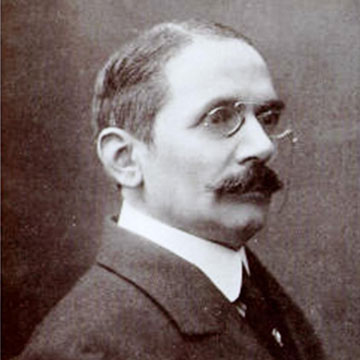
VICTOR BABEȘ
Doctor, university professor, founder of the Romanian school of morphopathology and microbiology, member of the Romanian Academy, triple laureate of the Academy of Sciences of Paris.
VICTOR BABEȘ
(born 28 July 1854 in Vienna – died 19 October 1927 in Bucharest)
Doctor, university professor, founder of the Romanian school of morphopathology and microbiology, member of the Romanian Academy, triple laureate of the Academy of Sciences of Paris.
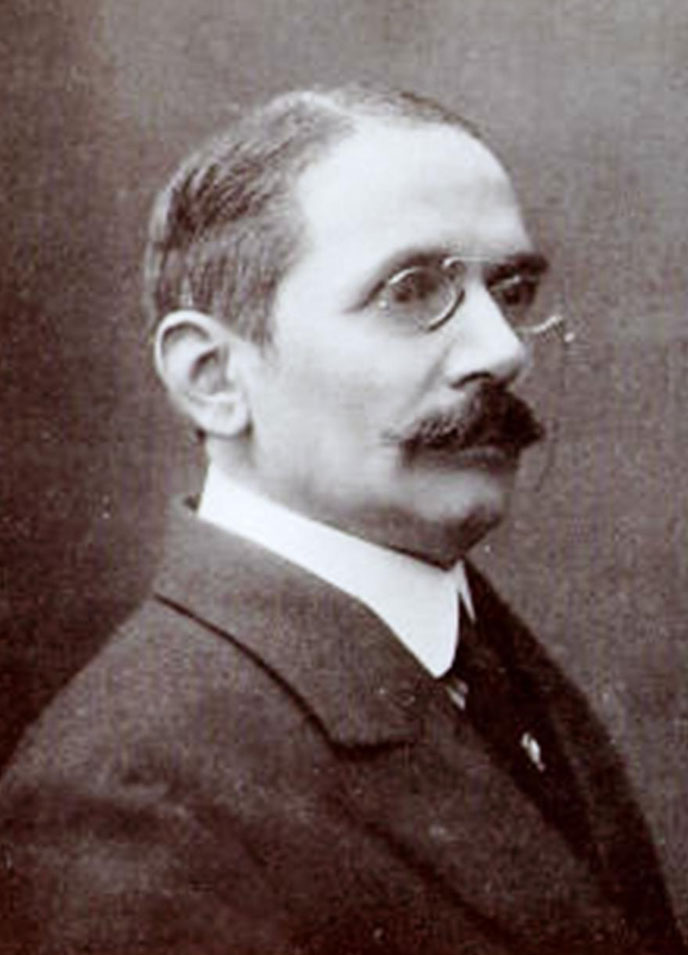
He was the son of Vicențiu Babeș (analytical journalist, jurist, politician). Graduate of the Faculty of Medicine in Budapest and Vienna (1871-1878), with a PhD at the University of Vienna (1878), associate professor in pathological anatomy, Victor Babeş was appointed associate professor of the Faculty of Medicine in Budapest, Department of Histopathology.
In 1887 he started his activity at the Faculty of Medicine in Bucharest, as a professor of the Department of pathology and bacteriology. In Bucharest he founded the Institute of Pathology and Bacteriology, which will be named after him, and the second anti-rabies vaccination center in the world (after the one founded by Louis Pasteur in Paris).
Victor Babeş was invited to Cluj in 1919 to contribute to the study programme of the Romanian Faculty of Medicine here. In the autumn he was appointed professor of pathological anatomy, and on 5 November 1919 he delivered the first festive lecture in Romanian language on a medical topic at the University of Cluj. Between 1919-1920 he was the head of the Department of Pathological Anatomy. He organized pathological anatomy, histology and microbiology courses. He was also head of the Institute of Anatomy, Pathological Histology and Microbiology in Cluj.
Member of the Romanian Academy (1893), correspondent member of the Paris Academy of Medicine, founding member of the Anatomical Society in Bucharest, as well as of other prestigious scientific societies (e.g. the International Committee for Combating Leprosy), Babeş was a triple laureate of the Academy of Sciences in Paris.
Victor Babeş remains a key figure in the history of medicine due to his important discoveries: glanders bacillus, rabies inclusions in the neurons of the Ammon’s horn, Babeş-Ernst metachromatic corpuscles. A forerunner of bacteriology, immunology, with important research on pathological anatomy applied to the study of infectious processes, he prepared serums and vaccines for the prevention of communicable diseases. He introduced rabies vaccination to Romania only three years after its initiation (the “Romanian anti-rabies method”) and he introduced for the first time in the world the antibiogram technique. Victor Babeș was among the first to remark the phenomenon of microbial variation. He has discovered over 50 new germs, including a class of microbes named after him, Babesia. He sought and studied remedies for pellagra, tuberculosis, leprosy, rabies, diphtheria. He was also the creator of the experimental method in Romanian hygiene.
His scientific work comprised more than 1,300 studies, including: Considerations on the Relation of Natural Sciences with Philosophy, 1879; Systematic Treatise of Microbiology (the first bacteriological treaty in the world, developed together with professor André-Victor Cornil, awarded by the French Academy); Bacteria and their role in the anatomy, histology and pathology of infectious diseases, 1885; The Leprosy Bacillus and Histology, 1898; Atlas of pathological histology of the nervous system (together with Gheorghe Marinescu and Paul Blocq), 1892-1903; Diseases of the Romanian Peasant, 1901; Legal Provisions to Combat Infectious Diseases, 1911; Epidemics in Transylvania and their comparison with the epidemics in the other Romanian provinces, 1921; Research on anti-diphtheria serum, 1913; Study on combating cholera, 1914. Victor Babeș founded specialized journals: “Annals of the Institute of Pathology and Bacteriology” (1889), “Medical Romania” (1893), “Archives des sciences médicales” (1895).
In May 1948, following the change of the political regime in Romania and the proclamation of the republic, the “King Ferdinand I” University took the name of “Victor Babeş”.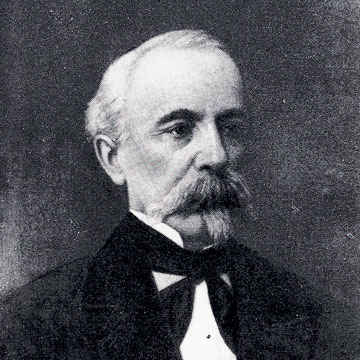
ÁRON BERDE
Professor at the University of Economics in Cluj between 1872-1890, the first rector of the Franz Joseph University of Cluj (1872-1873), member of the Hungarian Academy of Sciences.
ÁRON BERDE
(born 8 March 1819 in Sântionlunca, Covasna county – died 25 January 1892 in Cluj)
Professor at the University of Economics in Cluj between 1872-1890, the first rector of the Franz Joseph University of Cluj (1872-1873), member of the Hungarian Academy of Sciences.
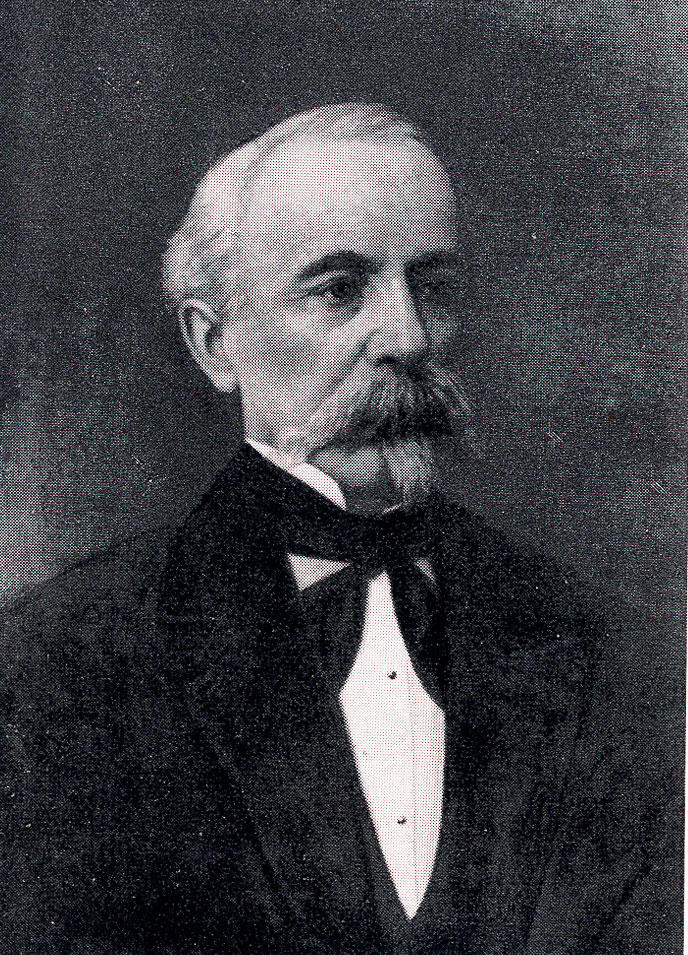
He carried out his primary studies in his native village and then he continued his studies at the Unitarian College in Cristuru Secuiesc and the Unitarian College in Cluj. After graduation from the college he was granted a merit scholarship from the Unitarian Church and he furthered his studies in Germany, in Berlin, Marburg and Heidelberg. He studied natural sciences, but also economics and state science.
In 1844 he returned to Cluj where he became professor of the Unitarian College. For two decades he taught physics, chemistry and mathematics at the Unitarian College. Between 1853-1857 he was the head of the college.In 1847 Áron Berde published the first scientific paper on meteorology in two volumes in Hungarian. In 1858 he was granted the title of correspondent member of the Hungarian Academy of Sciences. In 1849 he published the first Chemistry textbook in Transylvania. After 1860 he gave up natural sciences and devoted himself entirely to economic sciences.
The Royal Academy of Law was founded in Cluj in 1863. Of the six teachers of this educational institution, only Áron Berde was appointed as tenured professor. Between 1869 and 1872 he was the director of the Royal Academy of Law. He taught Political science, Knowledge about the State and Economics. Between 1869 and 1872 he was the head of the Royal Academy of Law.
In October 1867, at the suggestion of Áron Berde, the Academy of Law in Cluj undertook steps for the establishment of a modern university in Cluj. After several years of delays, in the autumn of 1872 the Hungarian Parliament adopted the law establishing the University of Cluj. Among the first professors of the new university we find Áron Berde. Moreover, on 10 November 1872, he was appointed rector of the University of Cluj. He held this position in the 1872-1873 academic year. As a rector, Áron Berde was the one who coordinated the organization of the teaching process in the newly established university and hired the ancillary staff.
At the time of his appointment, Áron Berde was the eldest and only member of the Hungarian Academy of Sciences among the professors of the faculty of Law and State Sciences. In the 1873-1874 academic year he was awarded the title of doctor honoris causa of the University of Cluj. In the 1883-1884 academic year he served as Dean of the Faculty of Law and State Sciences. For 17 years he taught Economics and Finance and special courses such as: Banking System, Stock Exchange Transactions, Railway Policy, State Loan, State Credit, On Socialism and others adapted to the economic problems of the respective time.
His scientific work comprises several volumes and published studies among which: Miért van, hogy a vallás, a helyett, hogy összekötne egymástól elrekeszt with hogy lehetne ezen segíteni? [Why does religion, which should draw people closer together, rather breaks them apart, and how can it be remedied?] in Szent beszédek H. Almáson az unitáriusok zsinati gyűlésén (Sermons at the Synodal Assembly of the Unitarians held in Mereşti) (1845); Légtüneménytan s a két Magyarhon égaljviszonyai s ezek befolyása a növényekre és állatokra [The science of meteorology and the climate of the two Hungaries and its influence on plants and animals], vol. I-II (1847); A vegytan iskolája [School of Chemistry] (1849, 1863); Mit tegyen az erdélyi gazda, hogy jóllétre jusson? [How can the Transylvanian householder achieve welfare] (1859).
Between 1846-1859 he had a remarkable activity as editor and publisher. He was buried in the Berde family's crypt in the Cluj-Napoca Central Cemetery (Hajongard).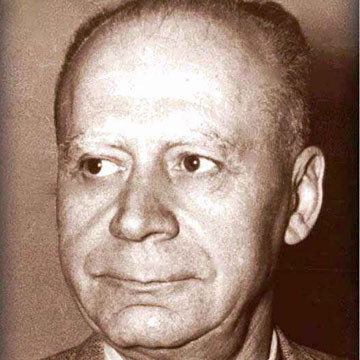
LUCIAN BLAGA
Poet, philosopher, essayist, playwright, translator, journalist and Romanian diplomat. Professor at the Faculty of Philosophy and Letters of the University of Cluj (1938-1948) and a full member of the Romanian Academy (from 1936). His extensive work conveys the figure of one of the most complex personalities of modern Romanian culture.
LUCIAN BLAGA
(born 9 May 1895, Lancrăm, Sibiu county – died 6 May 1961, Cluj)
Poet, philosopher, essayist, playwright, translator, journalist and Romanian diplomat. Professor at the Faculty of Philosophy and Letters of the University of Cluj (1938-1948) and a full member of the Romanian Academy (from 1936). His extensive work conveys the figure of one of the most complex personalities of modern Romanian culture.
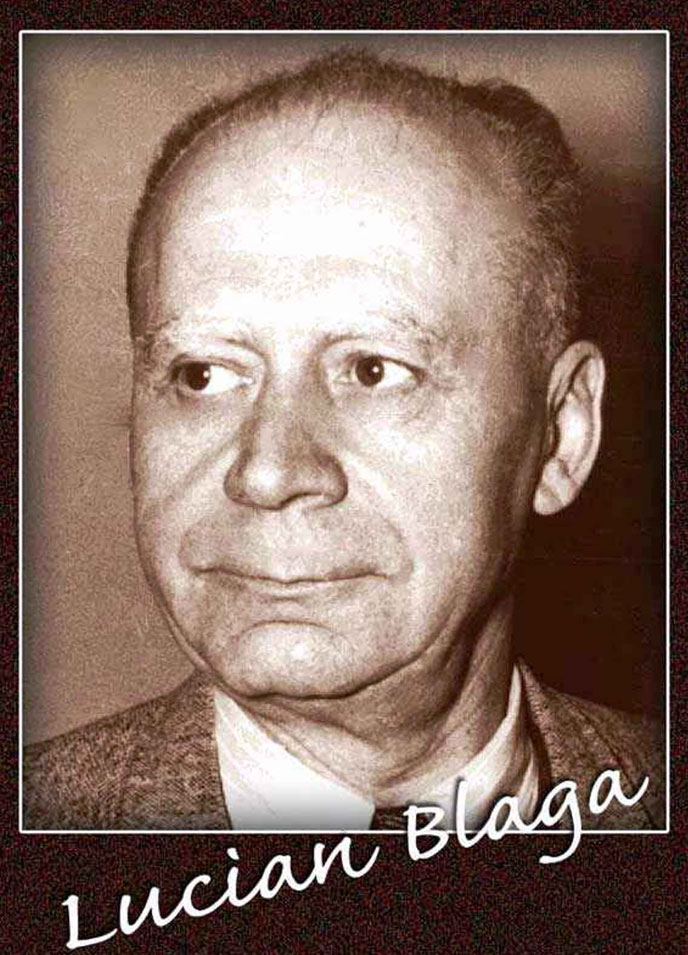
Lucian Blaga attended primary studies in Lancrăm and Sebeş (1901-1905), secondary studies in Brașov (1905-1914) and post-secondary studies in Sibiu (Faculty of Theology, 1914-1917) and Vienna (Faculty of Philosophy), where he obtained in 1920 a PhD in Philosophy with the thesis Kultur und Erkenntnis (Culture and Knowledge).
After graduating post-secondary studies, Blaga committed from the autumn of 1920 until the spring of 1924 to a sustained publishing and literary activity for the Voința and Patria newspapers in Cluj and for the Gândirea and Cultura journals. Between 1924-1926, after he settled in Lugoj, he wrote plays and essays.
From 1926 he embraced a diplomatic career, being the first press corresponding and counsellor to the Romanian consulate in Warsaw (1926), Prague (1927-1928), Berna (1928-1932 / 1937-1938) and Vienna (1932-1937), then Ambassador and Plenipotentiary Minister of Romania in Lisbon (1938-1939). In all these years, Lucian Blaga carried out a fruitful literary activity, writing his most important volumes of poems, alongside theatre plays inspired by national history, and, at the same time, started devising his philosophical system.
Although he had been trying to obtain a teaching position in the Cluj university since 1920, he was only appointed in 1938 as a professor at the Faculty of Philosophy and Letters of the University of Cluj, at the Department of Philosophy of Culture (specially created for him) subsequently renamed the Department of Rural Sociology. Courses were inaugurated on November 17, 1938, with his lecture On Historical Plenitude. In 1941 the Department of Rural Sociology returned to its original name.
Following the Vienna Dictate, Lucian Blaga took refuge to Sibiu (1940-1946), accompanying the University of Cluj. During 1941 he held a series of conferences at the Universities of Vienna and Prague. In Sibiu he became a collaborator of the Luceafărul journal and published the bimonthly journal of philosophy Saeculum (1943-1944).
After returning to Cluj, he held for two years lectures at the Faculty of Letters and Philosophy (1946-1948). In 1948 he was removed from education, and the Department of Philosophy of Culture was abolished.
Consequently, since 1949 he was employed as a researcher at the Institute of History and Philosophy of the P.R.R. Academy from Cluj (1949-1951). After the abolition of the Institute of Philosophy, until 1959, he held the position of chief librarian (since 1954, Deputy Scientific Deputy Scientific Director) at the Library of the Cluj branch of the Academy of the R.P.R. (located in the building of the Central University Library). Between July 1953 and April 1959, he was also employed - part-time - as senior scientific researcher within the team of the Department of Literary History and Folklore of the Cluj branch of the P.R.R. Academy.
Since 1992, the Central University Library was named in his honor.
He made his debut with poems published in the Românul magazine (1910), and then he collaborated with aphorisms, articles and philosophical studies in Adevărul literar şi artistic, Convorbiri literare, Cuget românesc, Gazeta Transilvaniei and other journals.
Starting with 1919, he published a number of volumes of poetry: Poems of Light (1919); Prophet's Footsteps (1921); In the Great Passage (1924); In Praise of Sleep (1929), etc., but also plays: Whirling Waters (1923); Daria (1925); Master-Builder Manole (1927); The Children's Crusade (1930), etc.
He wrote essays and philosophical studies: The Philosophy of Style (1924); The facets of a century (1925); Daimonion (1930) and others; Cycles: The Trilogy of Knowledge (Dogmatic Aeon, Luciferian Knowledge, Transcendental Censorship) (1931-1934); The Trilogy of Culture (Horizon and Style, The Mioritic Space, The Genesis of Metaphor and the Meaning of Culture) (1936-1937); The Trilogy of Values (Science and Creation, Magical Thinking and Religion, Art and Value) (1939-1942); The Cosmological Trilogy (The Divine Differentials, Anthropological Aspects, Historical Being) (1940-1948, published posthumously in 1977).
His work, translated into many languages, includes aphorisms, translations from the works of Goethe and Lessing, and memoirs (The Chronicle and Song of Ages, 1965). He collaborated to: The History of Romanian Philosophy; The Development of Romanian Thought in Transylvania in the 16th and 17th century; The Romanian Thought in Transylvania in the 18th century.
He was a full member of the Romanian Academy (between 28 May 1936 and 1948, and later reinstated on 3 July 1990).
In 1921 he received the “Adamachi” prize for debut, offered by the Romanian Academy. In 1930, he was awarded the “Socec” award for the volume In Praise of Sleep, and in 1935 - the Grand Prize “C. Hamangiu” for the entire dramatic and poetic opera. He was decorated with the Order of the Crown of Romania as commander (1939) and with the Order of the Star of Romania in rank of grand officer (1940).
He was buried in the cemetery of his native village, Lancrăm.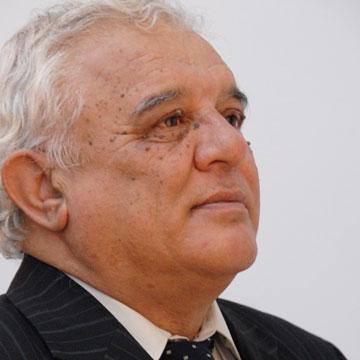
NICOLAE BOCȘAN
Istoric, profesor universitar, rector al Universității Babeș-Bolyai în perioada 2004-2008.
NICOLAE BOCȘAN
(n. 24 septembrie, 1947, Bocșa, jud. Caraș-Severin – d. 19 iunie, 2016, Cluj-Napoca).
Istoric, profesor universitar, rector al Universității Babeș-Bolyai în perioada 2004-2008.
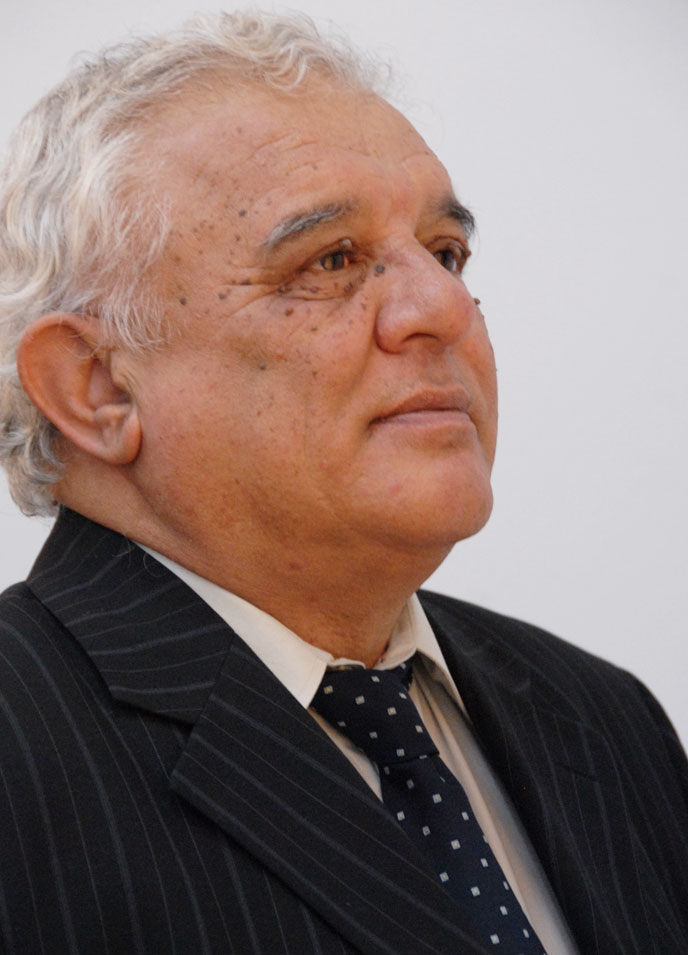
După studiile liceale la Bocșa, a absolvit Facultatea de Istorie-Filosofie, secția istorie, a Universității Babeș-Bolyai în 1970. Nicolae Bocșan a obținut titlul de doctor în istorie cu teza Românii din Banat în epoca Luminilor (1985). A urmat specializări la Varșovia (1986), Bruxelles (1993) și Paris (1999).
Bibliotecar între anii 1970-1977, Nicolae Bocșan a urmat apoi cariera universitară, parcurgând toate treptele acesteia: asistent (1978-1982), lector (1982-1990), conferențiar (1990-1994) și profesor universitar, din 1994, la Facultatea de Istorie și Filosofie. Nicolae Bocșan a susținut cursuri și seminarii de Istoria modernă a României, Relații internaționale în epoca modernă, Istoria bisericii românești în epoca modernă. A întocmit manuale și cursuri universitare: Manual multifuncţional de istorie modernă a României (1998, în colab.); Ţările Române şi Balcanii în secolul al XIX-lea şi începutul secolului XX. Curs universitar (2002).
În cadrul universității clujene, Nicolae Bocșan a asumat diverse funcții administrative. A fost prodecan (1991-1992), apoi decan (1992-1996) al Facultății de Istorie și Filosofie. De asemenea, a fost prorector în două rânduri (1996-2004; 2008-2012) și rector (2004-2008) al Universității Babeș-Bolyai. În 1995 a devenit vicepreședinte al Consiliului Național al Cercetării Științifice din Învățământul Superior. A fost membru al Comisiei de Istoria Relațiilor Internaționale a Comitetului Internațional de Istorie și al Academiei Europene de Științe, Arte și Litere.
Cercetările sale s-au aplecat asupra istoriei moderne a României, a relațiilor internaționale în epoca modernă și asupra istoriei bisericii românești în epoca modernă. A redactat peste 400 de cărți și articole științifice, dintre care menționăm:Independenţa României în opinia belgiană (1980, în colab.); Contribuţii la istoria iluminismului românesc (1986); Memorandul 1892-1894. Ideologie şi acţiune politică românească (1992, în colab.); Ethnie et confession en Transylvanie (du XIIIe au XIXe siècles) (1996, în colab.); Franţa şi Banatul: 1789-1815 (1994, în colab.); Ideea de naţiune la românii din Transilvania şi Banat. (Secolul al XIX-lea) (1997); Revoluţia de la 1848 din Transilvania în memorialistică (2000, în colab.); Biserica Română Unită la Conciliul Ecumenic Vatican I (1869-1870) (2001, în colab.); Episcopul Ioan Vancea. Pastorale şi circulare: 1865-1869 (2003, în colab.); La începuturile Episcopiei Lugojului. Studii şi documente (2003, în colab.); Revoluţia de la 1848 în Munţii Apuseni. Memorialistică (2003, în colab.); Instituţiile Bisericii Ortodoxe Române din Transilvania (1850-1918). Studii (2009, în colab.); Memoriile unui ierarh uitat: Victor Mihályi de Apşa (1841-1918) (2009, în colab.); Die Rumänische Unierte Kirche am Ersten Vatikanischen Konzil (2013, în colab.).
În calitate de editor, profesorul Nicolae Bocşan a întocmit volumele: Biblioteca şi învăţământul, vol. III (1977); Damaschin Bojincă. Scrieri. De la idealul luminării la idealul naţional (1978); Memorialistica revoluţiei de la 1848 în Transilvania (1988, în colab.); Andrei Şaguna. Corespondenţă, vol. I-III (2005-2009, în colab.); Ioan Boroş, Memorialistica (2012, în colab.); Marele Război în memoria bănăţeană (1914-1919), vol. I-III (2012-2015, în colab.). În afara acestora, a coordonat o serie de studii pe teme de o mare diversitate: Cultură şi societate în epoca modernă (1990); Convergenţe europene. Istorie şi societate în epoca modernă (1993); The Austrian Military Border. Its Political and Cultural Impact (1994); Identitate şi alteritate: Studii de imagologie, vol. I-III (1996-2002); Revoluţia de la 1848-1849 în Europa Centrală. Perspectivă istorică şi istoriografică,(2000); Cronologia Europei Centrale (1848-1989) (2001); In memoriam: Mitropolitul Andrei Şaguna. 1873-2003 (2003); Călători români în Occident: secolele XVII-XX (2004); Identităţi confesionale în Europa Central-Orientală (secolele XVII-XXI) (2009); Contribuţii la istoria ecleziastică a Banatului (2011); De asemenea, a colaborat la Bibliografia istorică a României. Bibliografie selectivă, vol. IV-VII, și la Enciclopedia istoriografiei româneşti (1978).
Nicolae Bocșan a fondat și a condus Institutul de istorie ecleziastică și Institutul de studii italo-române. În același timp, a fost referent sau membru în comitetele de redacție ale unor importante reviste științifice cum ar fi: „Studia Universitatis Babeș-Bolyai”, „Transylvanian Review”, „Colloquia”, „Caietele David Prodan”, publicate la Cluj-Napoca, dar și în „Studii de istorie a Banatului” (Timișoara), „Banatica” (Reșița), „Arhiva Someșană”, (Bistrița).
Nicolae Bocșan a primit premiile „Nicolae Bălcescu” (1986) și „G. Barițiu” (1994) din partea Academiei Române. A fost distins cu Medalia „Pro meritis” a Universității din Graz, iar în 2010 Universitatea din Oradea i-a conferit titlul de Doctor Honoris Causa.
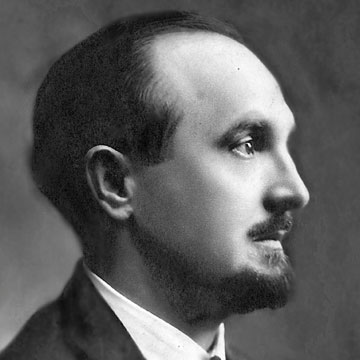
ALEXANDRU BORZA
First professor PhD of Botany at the Romanian University of Cluj (since 1919), founder and director of the Botanical Garden of Cluj, of the Botanical Museum and Systematic Botany Institute, rector (1944-1945) of the University of Cluj, member of the Romanian Academy.
ALEXANDRU BORZA
(born 21 May 1887 in Alba-Iulia – died 3 September 1971 in Cluj-Napoca)
First professor PhD of Botany at the Romanian University of Cluj (since 1919), founder and director of the Botanical Garden of Cluj, of the Botanical Museum and Systematic Botany Institute, rector (1944-1945) of the University of Cluj, member of the Romanian Academy.
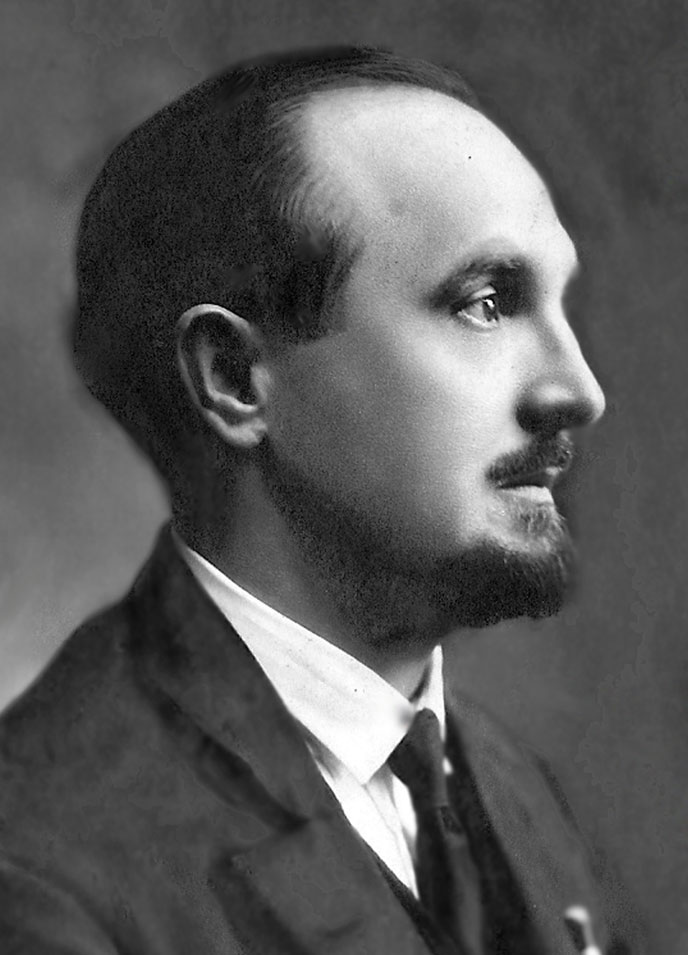
Alexandru Borza attended his high school studies in Alba Iulia, and his university studies in Budapest (he studies initially Theology in Latin, 1904-1908, then the Faculty of Sciences, the Department of Natural Sciences and Geography, 1908-1911). In 1913, he defended his PhD thesis (Studies on the Cerastium genus in the Carpathian and Balkan space) in Budapest, going on to further his studies in Budapest, Breslau (today Wroclaw) and Berlin.
He was a professor of natural sciences at the Blaj High School (1911-1919). After the union of Transylvania with Romania, he was part of the delegation that took over the University of Cluj on behalf of the Romanian state, being one of its founding members. In 1919 he was appointed a systematic botany professor and he was assigned to organize the Systematic Botany Department, the Botanical Museum and the Botanical Garden in Cluj. He also held many administrative functions: vice-dean (1919-1921), and then dean (1935-1938) of the Faculty of Sciences in Cluj, vice-rector, and from 1944 to 1945 rector of the University of Cluj. From 1964 he became a consultant professor at the Faculty of Biology and a member of the Scientific Council of the Biological Research Centre in Cluj.
He introduced modern methods on vegetation research in the Romanian botany, being also the main initiator of protecting nature. He was interested in ethnobotany, palynology, synecology, autecology and geobotany (he published more than 40 papers), and in floristry and taxonomy he described 83 new taxa (20 were named after him) and 17 new plant species. He studied vegetation from different counties of the country and conducted geobotanic studies abroad (Poland, Italy, United States of America, etc.). His reference works are: Vegetation and Flora of Transylvania (1929); Phytosociological studies in the Retezat Mountains (1934); Flowers of the Bucegi. Contributions to knowing the distribution of vascular plants (1944); Floristic Regions of the Romanian Territory (1948); Flora and vegetation of the Sebes Valley (1959); Introduction to the study of the ground cover (1965); The Ethnobotanical Dictionary (1968, in collaboration) and others.
He was also interested in the history of botany, writing biographies of botanists (J. Barth, I. Wolff, M. Péterfi, F. Pax, etc.), as well as papers on the Natural Monuments of Central and Western Transylvania (1924) or the Vegetation of Banat Region during the Romans (1943).
He was the first and only Romanian botanist to study the flora of China. An important part of Borza's work revolves around his museum and journalistic activity. Between 1921 and 1947 he edited the ‘Bulletin of the Botanical Garden and of the Botanical Museum of the University of Cluj’ (the only Romanian magazine dedicated exclusively to botany), “The Bulletin of the Commission for Natural Monuments” (1933-1944) and the herbarium of the Botanical Garden (1921-1947). A botany advocate, he founded and was in charge with publications such as ‘My Garden’, ‘Notes from the Botanical Garden in Cluj’, and others.
He was a member of the Czechoslovak Botanical Society, of the Profauna and Flora Fennica Society in Finland, of the Society of Horticulture in Lyon, of the German Botanical Society, a correspondent member of the Society of Geneva, etc. In 1969 he received the title of ‘Emeritus Scientist’. He was an honorary member of the Romanian Academy (1969) and a post-mortem member (November 13, 1990). In 1968 he received the ‘E. Teodorescu’ Award of the Romanian Academy. He was also awarded the orders of the Crown of Romania and the Star of Romania, as well as that of Commander of the Order of Pope Pius IX.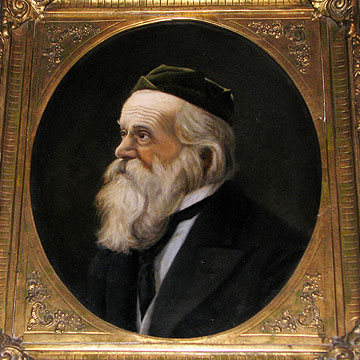
BRASSAI SÁMUEL
Savant polihistor cu activitate științifică în filologie, lingvistică, botanică, matematică, statistică, muzicologie, geografie, istorie, estetică și critică literară. Profesor de gimnaziu, apoi profesor universitar. Decan, prorector și rector al Universității de Științe Francisc Iosif. Membru al Academiei Maghiare de Științe.
BRASSAI SÁMUEL
(n. 15 iulie 1797 sau 13 februarie 1800, Colțești, jud. Alba – d. 24 iulie 1897, Cluj)
Savant polihistor cu activitate științifică în filologie, lingvistică, botanică, matematică, statistică, muzicologie, geografie, istorie, estetică și critică literară. Profesor de gimnaziu, apoi profesor universitar. Decan, prorector și rector al Universității de Științe Francisc Iosif. Membru al Academiei Maghiare de Științe.
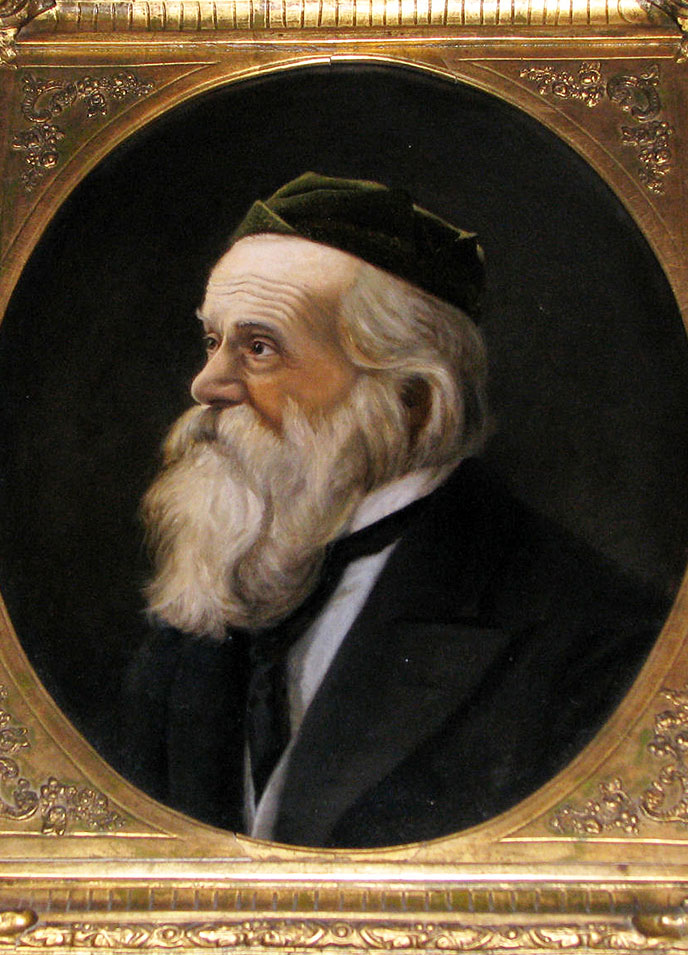
Brassai Sámuel a fost poate cea mai cunoscută personalitate a vieții științifice de la Cluj în secolul al XIX-lea. Era considerat intelectualul complet, care a excelat în mai multe domenii, lăsând opere în fiecare. A fost autor de cărți științifice, de manuale școlare, redactor de reviste, a devenit membru în două secțiuni ale Academiei Maghiare de Științe, în secțiunea științelor naturii (1837) și în cea de filologie (1865), a fost profesor universitar care a predat matematică elementară, dar și limba sanscrită la Universitatea din Cluj, a fost ales decan și rector. O caracterizare succintă, formulată după moartea lui, afirma că Brassai a fost cărturarul a cărui viață a stat sub semnul numărului zece: a vorbit zece limbi, a creat în zece științe și a trăit zece decenii.
S-a născut ori în localitatea Rimetea, unde părintele său era rectorul școlii, ori în localitatea Colțești, unde bunicul său era preot unitarian. Nici data exactă a nașterii sale nu este cunoscută. Sunt vehiculate două date: 15 iulie 1797 și 13 februarie 1800.
Brassai Sámuel și-a început studiile în casa părintească, în anturajul părintelui său, care era cunoscut drept un pedagog desăvârșit, continuând apoi în școlile de la Rimetea, Turda și în Colegiul Unitarian din Cluj. Nu a urmat studii universitare.
Începând cu anul 1818 a fost angajat învățător particular pentru copiii unor familii de nobili, predând discipline de științe ale naturii, limbi străine și muzică. În anul 1833 s-a mutat la Cluj, în calitate de învățător al copiilor familiei Bethlen. De atunci a devenit o personalitate aparte, cunoscută și stimată de comunitatea orășenilor.
În 1837 a fost invitat să devină profesor al Colegiului Unitarian din Cluj. În această școală prestigioasă, cea mai veche din Cluj, a predat istorie, geografie, matematică, științe ale naturii și, din 1845, filosofie. În 1841 a inițiat o reformă a învățământului unitarian, în urma căreia limba maghiară a devenit limba de predare în Colegiul Unitarian, în locul limbii latine. În loc de memorizare, metoda lui pedagogică a fost aceea de a dezvolta intelectul, iar materiile disciplinelor au fost adaptate vârstei și capacității elevilor. A scris nouăsprezece manuale școlare printre care unele de aritmetică, algebră, logică, botanică, de desen, de limbi străine: latină, franceză, germană.
Din 1859 a fost angajat al Societăţii Muzeului Ardelean, în anul 1862 devenind directorul acesteia. A amenajat prima grădină botanică a Clujului.
În 1872 a fost numit profesor și șeful Catedrei de Matematică Elementară a Facultății de Matematică și Științe Naturale de la proaspăt înființata universitate clujeană. În 1875-1876 a fost decan al Facultății de Matematică și Științe Naturale, iar în 1872-1873, respectiv 1880-1881, a deţinut funcţia de prorector. În anul universitar 1879-1880 a fost rectorul universității clujene. A fost pensionat în anul 1884. A murit în 24 iulie 1897 și a fost înmormântat în Cimitirul Central (Hajongard) din Cluj.
În colaborare cu Hugo Meltzl, profesorul Brassai a fondat şi a publicat între anii 1877-1890 revista Összehasonlító Irodalomtörténelmi Lapok (Acta Comparationis Litterarum Universarum), prima revistă de literatură comparată din lume.
Dintre operele sale mai importante amintim: Bevezetés a világ, föld és státusok esmeretére [Introducere în cunoașterea lumii, pământului și a stărilor], Cluj, 1834; Számító Sokrates. Fejbeli számolás kérdésekben. Angol mintára hazai viszonyokhoz alkalmazva [Socrate socotitor. Problemele socotirii în cap. Modelul englez adaptat la condițiile de la noi], Cluj, 1842 – carte care a cunoscut 17 ediții între 1842 și 1891; Bankismeret [Cunoștințe despre bănci], Cluj, 1842; Logika lélektani alapon fejtegetve [Logică explicată în termenii psihologiei], Pesta, 1858; Magyar vagy cigány zene [Muzică ungurească sau ţigănească], Cluj, 1860; Az Akadémia igazsága [Dreptatea Academiei], Cluj, 1862; A magyar mondat [Propoziţia în limba maghiară], Cluj, 1860-1863; A magyar bővített mondat [Fraza în limba maghiară], Pesta, 1870; Számtan a népiskolákban. Az I. és II. osztály tanítója számára. Vezérkönyv és példatár [Aritmetică pentru clasele I și II ale școlilor publice. Manual și culegere de probleme], Cluj, 1872; A neo- és palaeologia ügyében [Pentru neo- și paleologie], Budapesta, 1875; Laelius. Hogyan kell és hogyan nem kell magyarázni az iskolában a latin autorokat?[Laelius. Cum trebuie și cum nu trebuie explicați în școli autorii latini], Cluj, 1874; Logikai tanulmányok [Studii de logică], Budapesta, 1877.
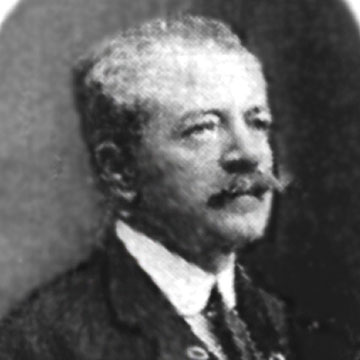
DIMITRIE CĂLUGĂREANU
Physician, naturalist, professor of general physiology, rector of the Romanian University of Cluj, between 1921-1922, corresponding member of the Romanian Academy (from 1920).
DIMITRIE CĂLUGĂREANU
(born 6 October 1868, Pomârla, Botoșani county – died 17 December 1937, Bucharest).
Physician, naturalist, professor of general physiology, rector of the Romanian University of Cluj, between 1921-1922, corresponding member of the Romanian Academy (from 1920).
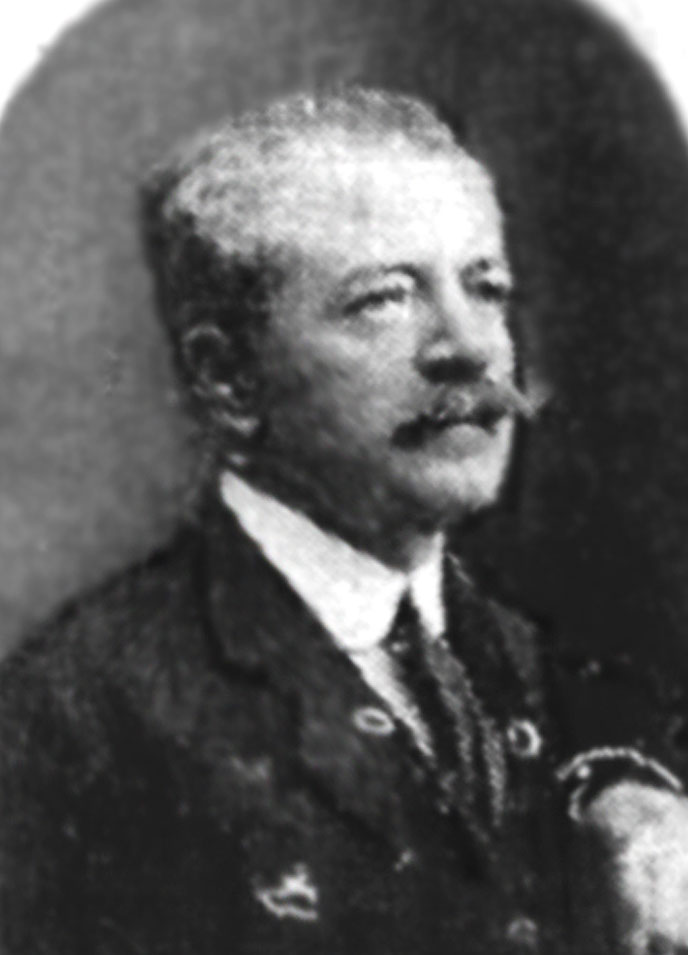
Dimitrie Călugăreanu graduated from the Faculty of Sciences, in the Natural Sciences department (1894) and the Faculty of Medicine (1897) of the University of Iași. Călugăreanu received a scholarship from the Romanian Academy to study at the Institute of Physiology in Berlin (1898) and in Paris. In 1903 the Sorbonne University awarded him the title of Doctor of Natural Sciences for the work Recherches de physiologie expérimentale et de chimie physique sur l'hématolyse.
He started his teaching career as a teaching assistant in the Morphology Laboratory of the University of Iași (1894-1897). Between 1902-1905 he taught at the Higher School of Veterinary Medicine. Later he became associate professor at the Faculty of Sciences in Bucharest, where he held courses in physiological chemistry (1908-1919). After the Great Union, Dimitrie Călugăreanu was employed as a professor of physiology at the Romanian University of Cluj (Faculty of Sciences), whose rector he was in the 1921-1922 academic year. Since 1926 he worked at the Institute of Physiology in Bucharest.
Dimitrie Călugăreanu's research focused on areas such as neurophysiology, hematology, mineral metabolism, respiration, studying the effect of nerve compression, plasmolysis phenomena in the cartilage cell, electrical conductivity of plasma during coagulation, intestinal breathing at Cobitis fossilis, respiration in some species of gastropods, the functional particularities of the silk gland in the silkworm, the action of light on the “Planaria”, etc.
Among his research studies and articles we mention: Expériences sur la suture croisée des nerfs de différentes sortes. Nerf lingual avec le nerfhypoglosse, nerfhypoglosse avec la nerf pneumogastrique (1990, collaboration); Suture croisée des nerfs pneumogastrique et hypoglosse (1900, collaboration); Contribution à l'étude de la compression des nerfs (1901); Salivation très abondante pendant la mastication chez le chien à la suite de la suture croisée des nerfs hypoglosse et lingual (1901); Régénération fonctionelle de la corde du tympan suturée avec le bout central du nerf hypoglosse (1901); Résistance des globules rouges déterminée par la conductibilité électrique (1902, collaboration). Influence de la durée de contact sur la résistence des globules rouges (1902); Expériences sur la perméabilité des globules rouges du chien (1902); Phénomène de plasmolyse observé dans la cellule cartilagineuse (1903); Rezistența globulară (1903); Sur le pouvoir anticoagulant du fluorure de sodium (1904); Sur l'épithélium respiratoire de quelques Gastéropodes pulmonés (1908, collaboration); La conductivité électrique du plasma sanguin et du lait pendant la coagulation (1908); Acțiunea acizilor asupra substanțelor proteice (1912); Études physico-chimiques sur le sang de l'Anodonte et sur la perméabilité des membranes de cet animal (1915); Action de la lumière sur la Planaria gonocephala (1934) etc. Dimitrie Călugăreanu also wrote numerous works of popularization of science: The role of microbes in intestinal digestion (1904); Crisis in Physiology (1932); Hunger and its consequences (1935); Nervous fatigue (1935); What is pain? (1936). He drafted important courses: Course in Physiological Chemistry (1912); Course in animal physiology (1912). In 1918 he founded the magazine Science of All magazine.
Correspondent member of the Romanian Academy (1920), Dimitrie Călugăreanu was awarded the Order of the Crown of Romania as Commander. He received the title of Public Education Officer and Knight of the Legion of Honor of the French Republic.
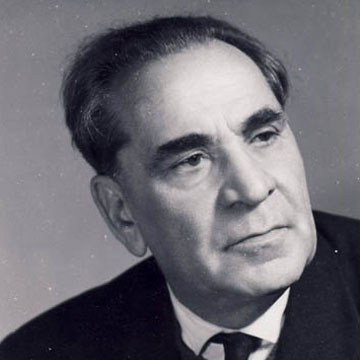
CONSTANTIN DAICOVICIU
Professor of Archeology and Ancient History at the University of Cluj from 1928 to 1968, rector of the “Victor Babeș” University of Cluj (1956-1959) and then of Babeș-Bolyai University (1959-1968), member of the Romanian Academy, laureate of the Herder Award (1968).
CONSTANTIN DAICOVICIU
(born 1 March 1898 in Căvăran, today Constantin Daicoviciu, Caraş Severin county – died 25 May 1973 in Cluj-Napoca)
Professor of Archeology and Ancient History at the University of Cluj from 1928 to 1968, rector of the “Victor Babeș” University of Cluj (1956-1959) and then of Babeș-Bolyai University (1959-1968), member of the Romanian Academy, laureate of the Herder Award (1968).
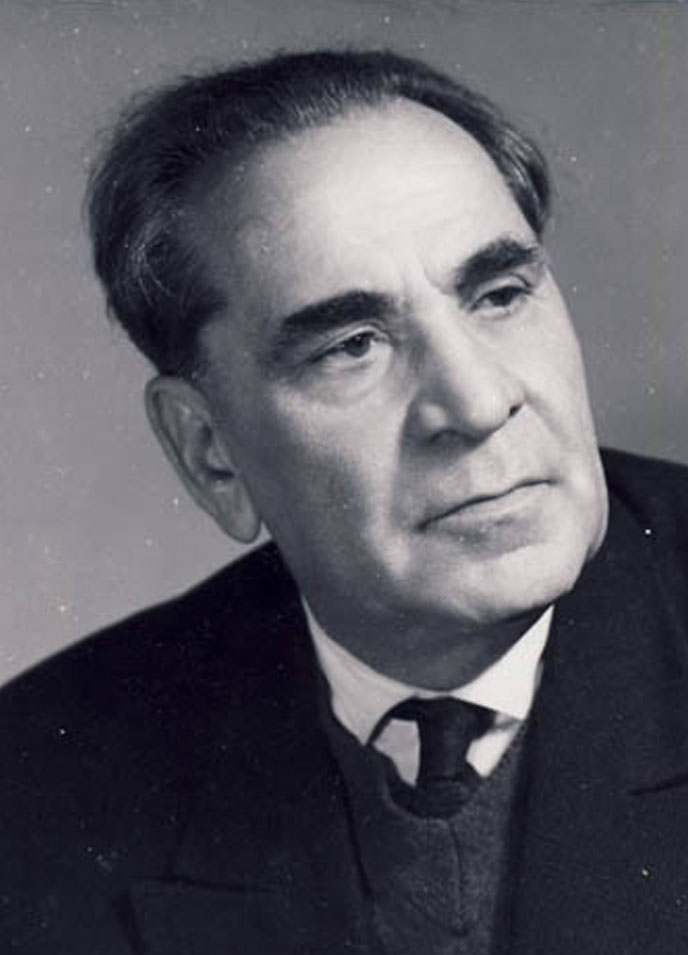
Following primary education in his native town and in Lugoj, Constantin Daicoviciu attended high school between 1909-1916 in Lugoj and Caransebes. From 1916 he was enrolled in the Austro-Hungarian army, being sent to fight on the Italian front. At the end of World War I he enrolled at the University of Cluj, but in the spring of 1919 he was drafted again and joined the 83rd Infantry Regiment of Cluj, as a second lieutenant, working as an interpreter. This time he was sent to the front on the Tisza. Between 1920-1924 he attended the courses of the Faculty of Letters and Philosophy, specializing in classical philology, Byzantine studies and history-archaeology. Later, Constantin Daicoviciu received a scholarship from the Romanian School in Rome (1925-1927).
In 1928 he became assistant lecturer at the Department of Ancient History at the University of Cluj and then associate professor (in 1932), then tenured professor of archaeology, antiquities and epigraphy (from 1938). In 1930 he defended his PhD in Historical Sciences and in 1932 he obtained his PhD degree in Ancient History and Archaeology.
Constantin Daicoviciu held many administrative positions at the University of Cluj. During the difficult years of World War II, when the University of Cluj took refuge to Sibiu, he was dean of the Faculty of Letters and Philosophy (October 1940 - May 1941) and then vice-dean (December 1941 - July 1942 ). For many years he was head of the department of ancient history and archeology, as well as director of the Institute of Classical Studies of the University of Cluj. Between 1956 and 1959 Constantin Daicoviciu was rector of the ‘Victor Babeș’ Romanian University of Cluj, and between 1959 and 1968 he became rector of the Babeş-Bolyai University.
Constantin Daicoviciu led other important academic and cultural institutions of Cluj. He was one of the founders of the National Museum of Transylvanian History in Cluj, where he held the position of director for a decade (1963-1973). Between May 1949 - May 1973 Daicoviciu also held the position of director of the Institute of History and Archeology of Cluj, a scientific structure subordinated to the Romanian Academy. Between 1920-1941 he was secretary of the Historical Monuments Commission for the Transylvanian sector. It is worth mentioning some of the political positions held by professor Daicoviciu: Undersecretary of State at the Ministry of Labour and Social Insurance (December 1946 - December 1947), Secretary of State for the Ministry of Education (March 1948 - March 1949), member of the Great National Assembly, Member of the State Council (since 1961).
Constantin Daicoviciu had an outstanding scientific activity. At the beginning of his career he was interested in the presence of the Romans in Dacia, carrying out archaeological campaigns at Ulpia Traiana Sarmizegetusa (between 1924-1936), the Porolissum Castrum and the castrum from Micia (Veţel). From 1942 Constantin Daicoviciu led the archaeological sites of the Dacian fortresses in the Orăştie Mountains (Blidaru, Costeşti, Sarmizegetusa Regia, Piatra Roşie, etc.), where important discoveries were made.
Constantin Daicoviciu has written over 200 books, chapters, studies and articles, archaeological reports. Among his works: Genuine monuments from Dacia (1931); Sarmizegetusa (Ulpia Traiana) (1939); The Dacian settlements in the Orăştie Mountains (1951); Dacica. Studies and articles on the ancient history of the Romanian lands (1971); The issue of continuity in Dacia. Some historical and archaeological observations and explanations, etc.
The value of his archaeological and historical activity on the antiquity was acknowledged in various ways. Thus, in 1948, Constantin Daicoviciu was elected as a correspondent member of the Romanian Academy, becoming a member in 1955. Between 1959-1963 he was also the president of the Department of Historical Sciences of the Romanian Academy. In 1932 he received the Romanian Academy Award, in 1950 he was awarded the State Prize of Romania, and in 1968 he was awarded the Herder Prize. Constantin Daicoviciu has also been a member of several academies, institutes, associations and bodies dedicated to ancient archeology and history in France, Austria, Germany, Italy, etc.
He was buried in the Cluj-Napoca Central Cemetery (Hajongard).
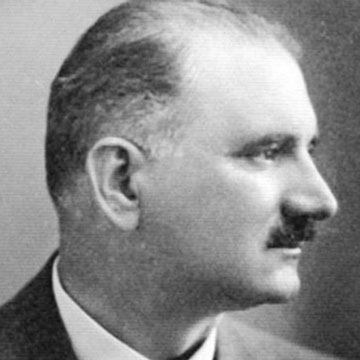
SILVIU DRAGOMIR
Historian, theologian, politician, professor at the Faculty of Letters and Philosophy of the University of Cluj (1919-1947), member of the Romanian Academy.
SILVIU DRAGOMIR
(born 13 March 1888 in Gurasada, Hunedoara County – died 23 February 1962 in Bucharest)
Historian, theologian, politician, professor at the Faculty of Letters and Philosophy of the University of Cluj (1919-1947), member of the Romanian Academy.
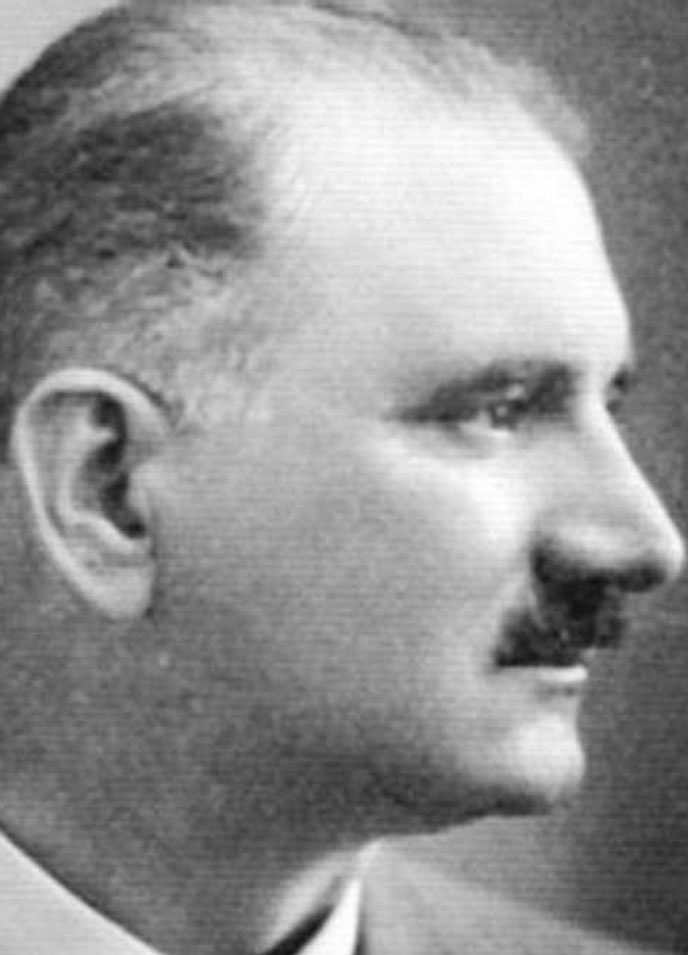
Graduate of the Romanian High School in Blaj (1903) and of the Serbian High School in Novisad (1905), Silviu Dragomir attended Faculty of Theology in Cernăuţi.
He began his career as a teacher of church history at the Andreian Seminary in Sibiu (1911-1919), then he became a professor of the history of the peoples of South-Eastern Europe at the Faculty of Letters and Philosophy of the University of Cluj (1919-1947). In the 1925-1926 academic year he was dean of this faculty, and in the following year (1926-1927) he was vice-dean.
During the interwar period, Silviu Dragomir coordinated the Seminary of South Eastern European Studies in Cluj. In 1934 he created the “Revue de Transylvanie” journal, which he managed for many years.
Professor Dragomir held numerous important administrative positions, such as: Secretary of the Great National Assembly in Alba Iulia on 1 December 1918; Minister of State for Minorities (1939-1940), Royal Counselor (1939-1940). Following World War II, Silviu Dragomir was accused by the Communist authorities of having supported the student protest movement in Cluj (May-June 1946). He was soon retired from the university, and then arrested and tried in the trial of the Agricultural Bank in Cluj (as a member of the Board of Directors). Sentenced to prison, he was imprisoned at Caransebeș (1949-1950), and later transferred to the Sighet penitentiary, where he remained in detention until 1955. After being released he worked as an external assistant, and later as a permanent scientific researcher at the Institute of History and Archeology of Cluj, where he also directed for a period of time the personnel of modern history (1957-1962).Acknowledged historian of South-Eastern Europe, of the Romanian Revolution of 1848 in Transylvania, of the social and religious phenomenon of the 18th century, Silviu Dragomir has published numerous works, among which: The Correspondence of Bishop Gherasim Adamovici, Sibiu (1911); Church relations of the Romanians in Transylvania with Russia in the 18th century (1914); History of the religious liberation of the Romanians in Transylvania in the 18th century (1920, 1930); The Vlachs of Serbia in the 12th-15th century (1922); Vlachs and Morlachs. Study in the History of the Balkan Romanian Character (1924); The Origin of Aromanian Colonies in Istria (1924); New documents on the relations of Wallachia with Sibiu in the 15th-16th century (1926-1927); The Ethnical Minorities in Transylvania (1927); The old churches of Zarand and their builders of the 14th-15th centuries (1929); History of the Religious liberation of the Romanians in Transylvania in the 18th century, 2 vol. (1929-1930, 2002); La Transylvanie roumaine et ses minorités ethniques (1934); La Hongrie et le problème de la Transylvanie (1934); Les Roumains de Transylvanie à la veille du mouvement de résurrection nationale (1938); La Transylvanie avant et après l'arbitrage de Vienne (1943); Vingt-cinq ans après la réunion de la Transylvanie à la Roumanie (1943); La patrie primitive des Roumains et les frontières historiques (1944); Le Banat roumain. Esquisses historiques (1944); La politique religieuse des Habsbourg et les interventions russes au XVIIIe siècle (1944); Studies and documents on the Revolution of the Romanians in Transylvania during 1848-1849, vol. I-III, V (1944-1946); The Vlachs in the Northern Balkan Peninsula in the Middle Ages (1959); Romanians from Transylvania and the Union with the Church of Rome (1959, 1990); Studies on the History of the Romanian Revolution of 1848 (1989); Medieval History Studies (1998).
Silviu Dragomir was also the author of the monographs Avram Iancu (1924, 1998); Ioan Buteanu, prefect of Zarand in 1848-1849 (1928); Nicolae Bălcescu in Ardeal (1930); Dr. Ioan Mihu: Selections of My Political, Cultural, Economic Thoughts (1938); Andrei Şaguna et Joseph Rajacic (1943).
Silviu Dragomir became a correspondent member of the Romanian Academy in 1916, being elected member in 1928. Among his awards and distinctions: Grand Officer of the Order of the Crown of Romania, Grand Officer of the Order of “Ferdinand I”, the “Năsturel” award of the Romanian Academy.
Between 1945 and 1948 he was president of the Historical Section of the Academy. Removed by Communists from this prestigious institution, he was reinstated post-mortem, becoming once again a member of the Romanian Academy in 1990.
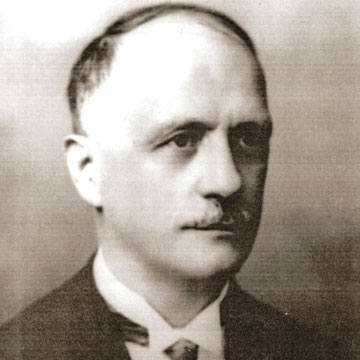
NICOLAE DRĂGANU
Professor of Romanian language and literature at the University of Cluj (1919-1939), rector of the University of Cluj (1931-1932), member of the Romanian Academy. A man of great culture and erudition, concerned with the study of philology, lexicology, onomastics, syntax and history of literature.
NICOLAE DRĂGANU
(born 18 February 1884 in Zagra, Bistriţa-Năsăud county – died 17 December 1939 in Cluj-Napoca)
Professor of Romanian language and literature at the University of Cluj (1919-1939), rector of the University of Cluj (1931-1932), member of the Romanian Academy. A man of great culture and erudition, concerned with the study of philology, lexicology, onomastics, syntax and history of literature.
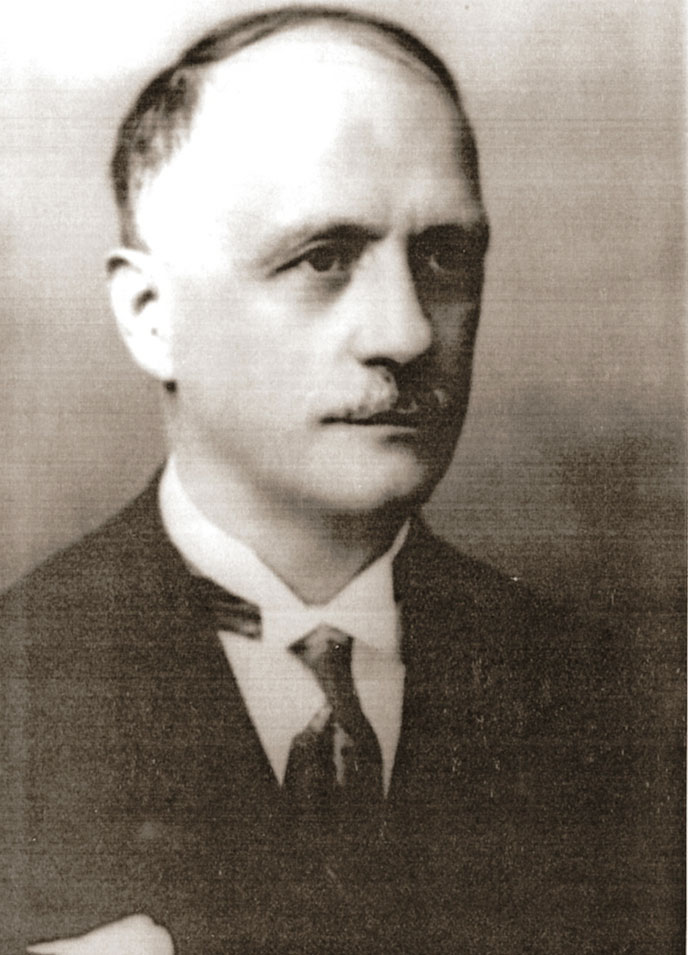
Nicolae Drăganu a urmat Liceul Grăniceresc din Năsăud (1894-1902) şi ulterior s-a înscris la Nicolae Drăganu attended the high school in Năsăud (1894-1902) and then enrolled at the Faculty of Classical Philology of the University of Budapest (1902-1906), where in 1906 he defended his doctorate with a thesis on The Composition of Romanian Words. Beginning with the 1906 school year, he taught Greek, Latin and Romanian at Năsăud High School. In 1916 he was appointed associate professor at the Faculty of Letters of the Hungarian University of Cluj. After the union of Transylvania with Romania, he was part of the delegation that took over the University of Cluj on behalf of the Romanian state. He was chairman of the commission for the examination of candidates for secondary teacher positions in Cluj (1919-1924).
In 1919 he became tenured professor of Romanian language and literature at the Faculty of Letters and Philosophy in Cluj, a position he held until his death. He was also involved in the activity of the Museum of Romanian Language, where he participated in the elaboration of the Dictionary of the Romanian Language, contributing, in particular, to establishing the etymology of regional and archaic words. He also held many administrative positions in the university: he was vice-rector during the 1919-1920 academic year, rector during the 1931-1932 academic year, dean of the Faculty of Letters and Philosophy (1923-1924, 1932-1937).
He was head of the literary section of the Transylvanian Association for Romanian Literature and the Culture of the Romanian People (ASTRA) and of the Romanian Society of Linguistics. From 4 June 1923 he became a correspondent member of the Romanian Academy, and on 20 May 1939 he was elected as a tenured member.From very early on he started collaborating with Hungarian journals (“Nyelvtudomány” - Budapest) and Romanian journals (“Transylvania”, “The Yearbook of the Institute of National History in Cluj”, “Dacoromania”, “Someşan Archive”, etc.) where he published relevant studies on toponym, hydronym and onomastic content (From our old toponymy, The oldest Rakoczy book, Toponymy and history, etc.), but also regarding old Romanian literature (Two old manuscripts, Teodorescu Codices and Martian Codices, etc.). Interested in the history of the Năsăud border town, from where he came from, he wrote some studies and books about these places, the most important of which were: The history of the Năsăud schools written on the occasion of the 50th anniversary (1863-1913) of the founding gymnasium in Năsăud (1913, in collaboration with Virgil Şotropa) and the Monograph of the ‘Aurora’ Society of Năsăud (1873-1923) (1924). The reputed linguist was also concerned with syntax, an area which benefited from little research until then: The History of Syntax (1945); Syntax elements of the Romanian language (1945), and with toponymy: From our old toponymy (1920); Toponymy and History (1928); Romanians from the 9th-14th centuries based on toponymity and onomastics (1933), etc.
He was decorated with the Order of the Crown of Romania in the rank of Grand Officer and Commander, he was granted the National Order of the Star of Romania in the rank of Commander, he was awarded the Order of Ferdinand I in the grade of Officer, the Gold Cross of Merit (Poland), and others. Between 1933-1938 he also served as mayor of Cluj. His son, Tudor Drăganu, was also a renowned lawyer and a professor at the Faculty of Law of the University of Cluj.
Nicolae Drăganu was buried in the Cluj-Napoca Central Cemetery (Hajongard)
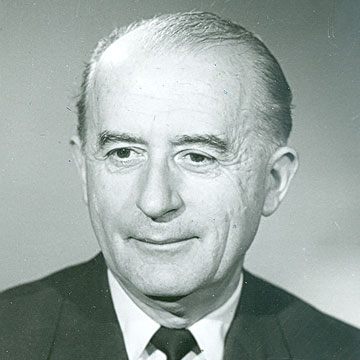
TUDOR DRĂGANU
Jurist, profesor universitar de drept constituţional la Universitatea din Cluj între 1937-1997, membru de onoare al Academiei Române (din 21 iulie 2003).
TUDOR DRĂGANU
(n. 2 decembrie 1912, Năsăud, jud. Bistriţa-Năsăud – d. 22 august 2010, Cluj-Napoca)
Jurist, profesor universitar de drept constituţional la Universitatea din Cluj între 1937-1997, membru de onoare al Academiei Române (din 21 iulie 2003).
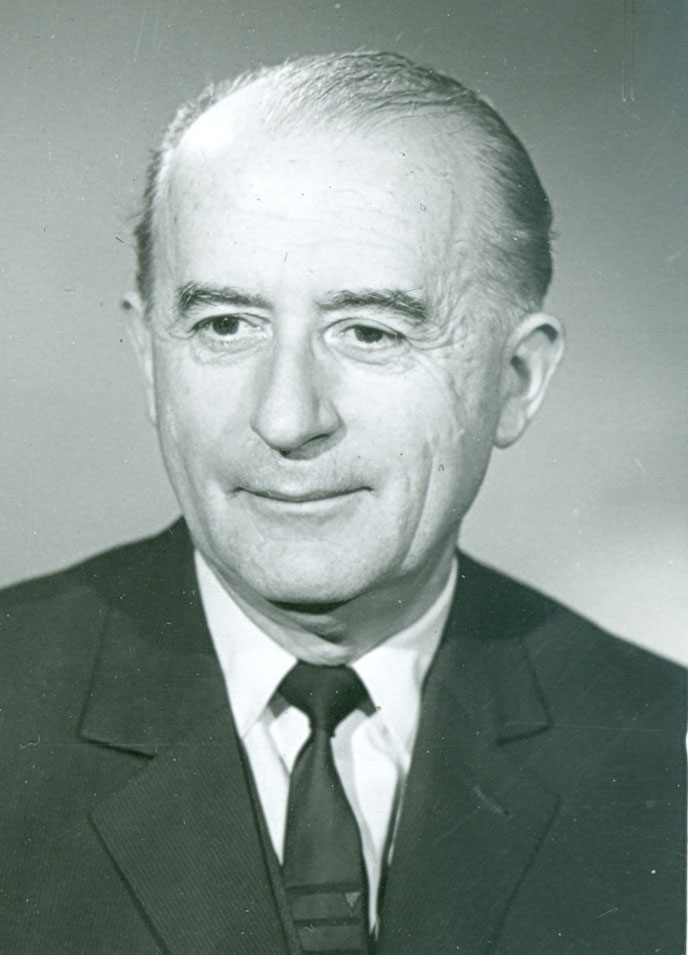
A fost fiul cunoscutului lingvist şi profesor al universităţii clujene, Nicolae Drăganu. Tudor Drăganu a urmat cursurile liceale la liceul ,,George Bariţiu” din Cluj, iar apoi s-a înscris la Facultatea de Drept, obţinându-şi doctoratul în 1934.
Şi-a început cariera universitară în 1937, parcurgând pe rând toate treptele academice: asistent (1937-1941), conferenţiar (1941-1946), profesor (1946-1997). În perioada 1966-1997 a fost şeful Catedrei de drept constituţional a Universităţii Babeş-Bolyai, remarcându-se ca un specialist de renume în domeniile dreptului constituţional, al dreptului administrativ şi al dreptului transporturilor. În îndelungata sa activitate didactică a mai predat la Facultatea de Ştiinţe Politice şi Administrative a Universităţii Babeş-Bolyai (1993-1996), la Facultatea de Drept a Universităţii „Vasile Goldiş" din Arad (1991-1993), la Facultatea de Drept a Universităţii ,,Petru Maior” din Târgu Mureş, la Universitatea Ecologică ,,Dimitrie Cantemir” din Iaşi, la Universitatea ,,Dimitrie Cantemir” din Bucureşti (unde a şi condus pentru o perioadă Catedra de drept public). De asemenea, în anii ’70 s-a numărat printre puţinii specialişti români chemaţi să ţină cursuri şi seminarii la Universitatea Paris I Panthéon Sorbonne din Franţa.
Profesorul Tudor Drăganu a redactat peste 130 de lucrări ştiinţifice, dintre care unele cu mare caracter de originalitate. Printre titlurile sale amintim: La doctrine juridique de la couronne hongroise (1944); Actele de drept administrativ (1959) – volum premiat de Ministerul Învăţământului în calitate de cea dintâi monografie cu privire la actele administrative româneşti; Formele de activitate ale organelor statului socialist român (1965); Drept constituţional (1972) – volum distins cu premiul ,,Simion Bărnuţiu” al Academiei Române; Supremaţia legii (1982); ,,Începuturile şi dezvoltarea regimului parlamentar în România până în 1916” (1991); „Introducere în teoria şi practica statului de drept”(1992); „Drept constituţional şi instituţii politice – tratat elementar” (1998); „Tratat de teorie şi practică parlamentară”(2001).
A fost membru al Institutului Internaţional de ŞtiinţeAdministrative din Bruxelles (1980); membru de onoare al Institutului Român de ŞtiinţeAdministrative; preşedinte şi vicepreşedinte al unor comisii ale Uniunii Interparlamentare,între anii 1967-1980. Dintre distincţiile care i-au încununat cariera academică profesorului Tudor Drăganu se cuvin menţionate: titlul de Doctor Honoris Causa al Universităţii ,,Lucian Blaga” din Sibiu şi al Universităţii din Oradea (1998), al Universităţii de Vest din Timişoara (2002), al Universităţii ,,Petru Maior” din Târgu-Mureş (2007), diploma de onoare a Universităţii Babeş-Bolyai pentru contribuţii excepţionale la dezvoltarea prestigiului academic (2002), medalia de merit şi premiul de excelenţă al Uniunii Juriştilor din România (1997). Tudor Drăganu a primit de asemenea titlul de cetăţean de onoare al municipiilor Cluj-Napoca (1998) şi Năsăud (2005), precum şi al oraşului Maracaibo din Venezuela.
A fost înmormântat în Cimitirul Central din Cluj (Hajongard).
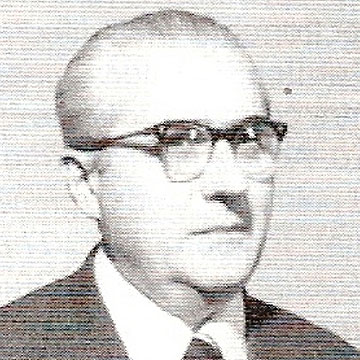
VLADIMIR HANGA
Jurist, profesor universitar de drept roman şi istoria dreptului la Universitatea Babeş-Bolyai între 1949-1986, prorector al Universităţii Babeş-Bolyai în perioada 1973-1976.
VLADIMIR HANGA
(n. 21 octombrie 1920, Cucova, jud. Bacău – d. 16 iunie 2013, Arad)
Jurist, profesor universitar de drept roman şi istoria dreptului la Universitatea Babeş-Bolyai între 1949-1986, prorector al Universităţii Babeş-Bolyai în perioada 1973-1976.
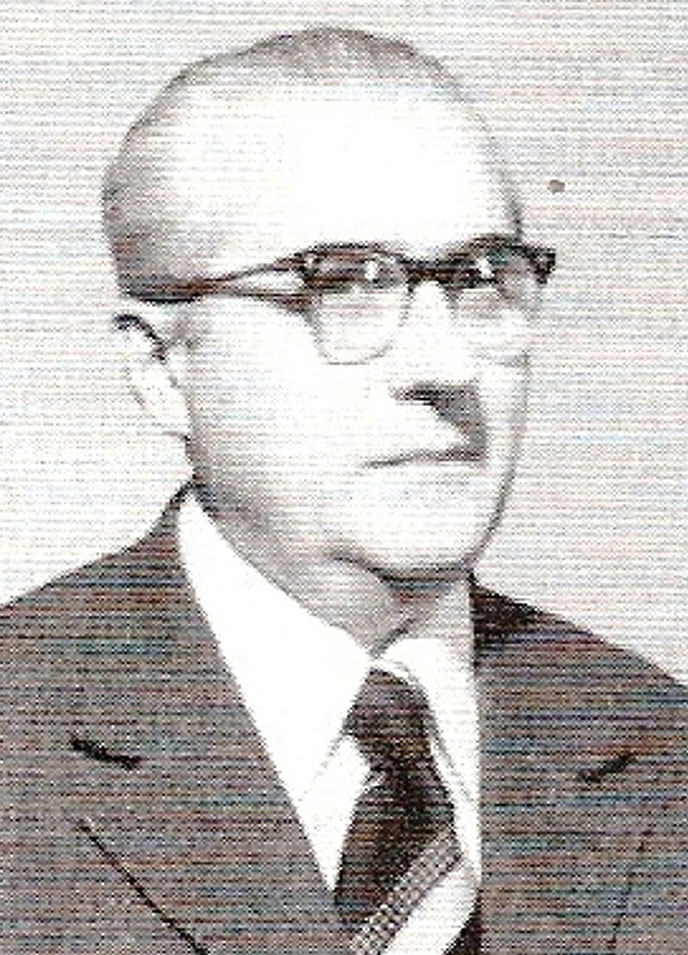
După studii liceale la liceul „Regele Ferdinand I” din Bacău, pe care le-a absolvit ca şef de promoţie, Vladimir Hanga a urmat cursurile Facultăţii de Drept a Universităţii Bucureşti. A obţinut diploma de licenţă (cu menţiunea Magna cum Laude) în 1942, iar în 1947 şi-a susţinut teza de doctorat în drept, urmată în 1949 de un al doilea doctorat în știinţe politico-economice.
Şi-a început cariera didactică în calitate de asistent şi lector universitar la Facultatea de Drept din Bucureşti, lucrând pentru o perioadă şi ca traducător la Institutul de Studii Clasice. Din 1949 a intrat în colectivul Facultăţii de Drept a Universităţii ,,Victor Babeş” de la Cluj, fiind titularizat la Catedra de Drept roman, unde a fost conferenţiar şi apoi profesor până la pensionarea sa, în 1986. În 1962 a obţinut titlul de doctor docent în ştiinţe.
Strălucit clasicist, specialist remarcabil al istoriei dreptului şi al dreptului roman, a fost apreciat de colegi şi de studenţi pentru erudiţie, umor şi pentru talentul său oratoric şi pedagogic. Profesorul Hanga a deţinut şi numeroase funcţii administrative: decan al Facultăţii de Drept clujene între 1968-1973, prorector al Universităţii ,,Babeş-Bolyai” (1973-1976), decan fondator al Facultăţii de Ştiinţe Juridice a Universităţii de Vest ,,Vasile Goldiş” din Arad (1990). Competenţa sa profesională a fost recunoscută şi în plan internaţional, unde Vladimir Hanga a fost expert ONU pentru drepturilor omului (1977-1984) şi apoi membru al Curţii Permanente de Arbitraj de la Viena (1984-1989). De asemenea, a fost profesor invitat la numeroase universităţi străine, precum: Paris, Strasbourg, Geneva, Heidelberg, Frankfurt am Main, Viena, Oxford, Leiden etc.
Activitatea sa a fost distinsă în 1984 cu premiul „Simion Bărnuţiu” al Academiei Române. De asemenea, profesorul Hanga a fost membru al multor societăţi profesionale prestigioase, precum: Société Jean Bodin; Société d'histoire du droit; Société Fernand de Visscher etc. Universitatea de Vest din Timişoara şi Universitatea ,,Vasile Goldiş” din Arad s-au numărat printre instituţiile care i-au decernat titlul de Doctor Honoris Causa.
A publicat, în calitate de autor principal sau de coautor, lucrări de referinţă în domeniul dreptului, dar şi al istoriei, dintre care amintim: Crestomaţie pentru studiul istoriei statului şi dreptului Republicii Populare Române (1955); Cetatea celor şapte coline – începuturile Romei: patricienii şi plebeii (1957); Caius Iulius Cesar (1967); Alexandru cel Mare (1971); Drept privat roman (1971 şi 1995); Mari legiuitori ai lumii: Hammurapi, Iustinian, Napoleon (1977 şi 1994); Les institutions du droit coutumier roumain (1988); Études d’histoire du droit (1996); Calculatoarele în serviciul dreptului (1996); Dreptul şi tehnica judiciară: încercare de sinteză (2000);Dimensiuni ale culturii şi practicii juridice (2003) etc. Vladimir Hanga s-a preocupat şi de acurateţea terminologiei juridice folosite de specialiştii români, fiind implicat în elaborarea multor dicţionare şi crestomaţii: Mic dicţionar juridic (2005); Adagii juridice latineşti (2007); Dicţionar juridic poliglot: român-englez-francez-german-italian (2008); Limba latină pentru jurişti (2008) etc. De asemenea, profesorul Hanga a contribuit, alături de alţi specialişti, la traducerea şi editarea volumelor de documente medievale din Transilvania, publicate de către Academia Română, precum şi la tipărirea, în ediţie bilingvă româno-latină, a lucrării Iustiniani institutiones = Instituţiile lui Iustinian (2002).
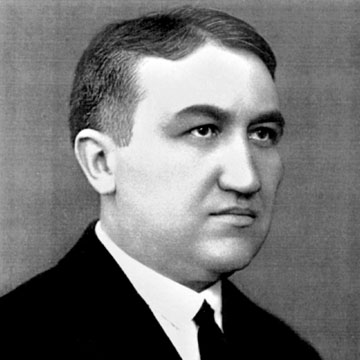
IULIU HAȚIEGANU
Physician, the first Clinical Professor of Medicine and the first Dean of the Faculty of Medicine in Cluj, founder of the School of Internal Medicine in Cluj, Rector of the ‘King Ferdinand I’ University of Cluj (1930-1931, 1941-1944), member of the Romanian Academy.
IULIU HAȚIEGANU
(born 14 April 1885 in Dârja, Cluj county – died 4 September 1959 in Cluj-Napoca)
Physician, the first Clinical Professor of Medicine and the first Dean of the Faculty of Medicine in Cluj, founder of the School of Internal Medicine in Cluj, Rector of the ‘King Ferdinand I’ University of Cluj (1930-1931, 1941-1944), member of the Romanian Academy.
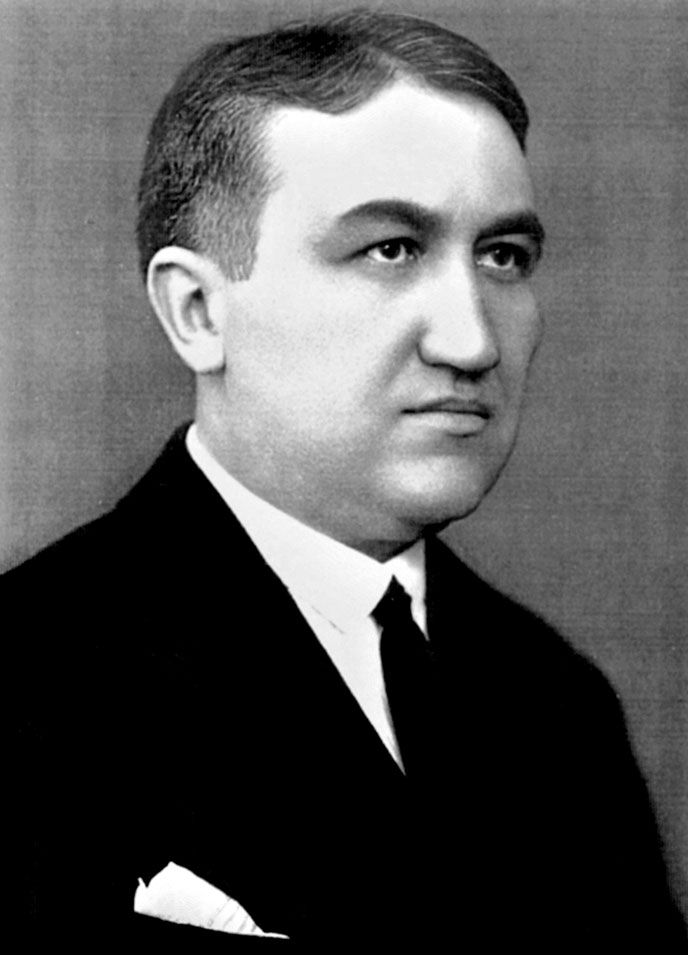
Son of Ioan Haţieganu (Greek-Catholic archpriest of Cojocna) and brother of Emil Haţieganu (lawyer and politician). He graduated from the Faculty of Medicine at the Franz Joseph University in Cluj, receiving his doctoral title in 1910.
Iuliu Haţieganu was an assistant at the Medical Clinic in Cluj (1909). During World War I he was the head of the internal medicine department of the Military Hospital in Cluj. He attended the Great National Assembly in Alba-Iulia, and in 1919 he was appointed by the Governing Council to establish the Romanian Faculty of Medicine in Cluj. In November 1919 he held the first lecture in Romanian, laying the foundations of the medical education in Cluj.
Iuliu Haţieganu was the first clinical professor of medicine and the first dean of the Romanian Faculty of Medicine in Cluj. He had two rector mandates at the ‘King Ferdinand I’ University: the first between 1930-1931, and the second during the years of the university's refuge in Sibiu (1941-1944).
He was a member of the Romanian Academy (1955), but also a member of various organizations: Société d'études scientifiques sur tuberculose, the Medical Society of Paris Hospitals, Central Committee of the League Against Tuberculosis.
He was head of Medical Clinic I (1919-1948) and of Medical Clinic III (1953-1959), head of the Cluj Division of Astra, president of the Biopolitical and Medical Astra (1917), president of the Medical Society for Physical Education in Cluj, director of the Upper Normal School of Cluj (1939), General Supervisor of the ‘Country Guard’ for Transylvania and Banat, Minister of Transylvania (April-July 1931).
Also called ‘Hippocrates of the Romanians,’ ‘Patriarch of Transylvanian Medicine,’ Haţieganu researched into the diseases of the digestive system, and visceral syphilis. In 1914 he wrote a relevant study on glycosuria. He introduced new methods of diagnosis for research into liver, duodenum and pancreas function and conceived an original classification of kidney disease. Together with Ion Goia, Iuliu Haţieganu developed the theory of the pathological pattern of peasants and workers. He also introduced the medical polyclinic education and organized physical education in the rural areas (establishing the ‘Carpathian Hawks’ physical education association). Between 1930-1932, putting together his own resources and funds raised from ASTRA, he set up a sports park designed especially for young people and students. Located on the bank of river Somes, this park is currently called ‘Iuliu Haţieganu’ Sports Park.
In 1920 Iuliu Haţieganu contributed decisively to the first issue of the ‘Medical Cluj’ Romanian medical journal. Among the many papers and studies, we mention: On Epidemic Encephalitis (1920); Tuberculosis infection and its social prophylaxis (1926); Medical Visceral Syphilis (1926); Academic Hygiene (1932); The Danger of Tuberculosis in the University (in collaboration with professor Leon Daniello, 1926); Basic Semiotics and Medical Pathology (in collaboration with professor Ioan Goia, in three volumes and four editions, 1934-1937); News of Medical Pathology (1948).
He was buried in the Cluj-Napoca Central Cemetery (Hajongard).Since 1993 the University of Medicine and Pharmacy of Cluj, which separated in 1948 from the ‘King Ferdinand I’ University of Cluj, bears the name of doctor Iuliu Hațieganu.
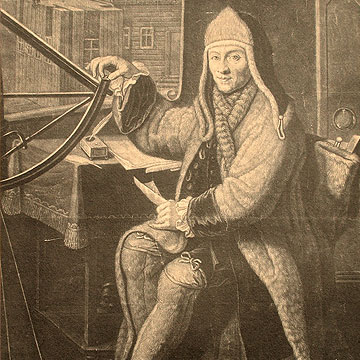
MAXIMILIAN HELL, SJ
Member of the Jesuit Order, priest, internationally renowned astronomer, mathematician, physicist, university professor, member of several academic societies.
MAXIMILIAN HELL, SJ
(born 13/15 May 1720 in Banská Štiavnica (today in Slovakia) – died 14 April 1792 in Viena)
Member of the Jesuit Order, priest, internationally renowned astronomer, mathematician, physicist, university professor, member of several academic societies.
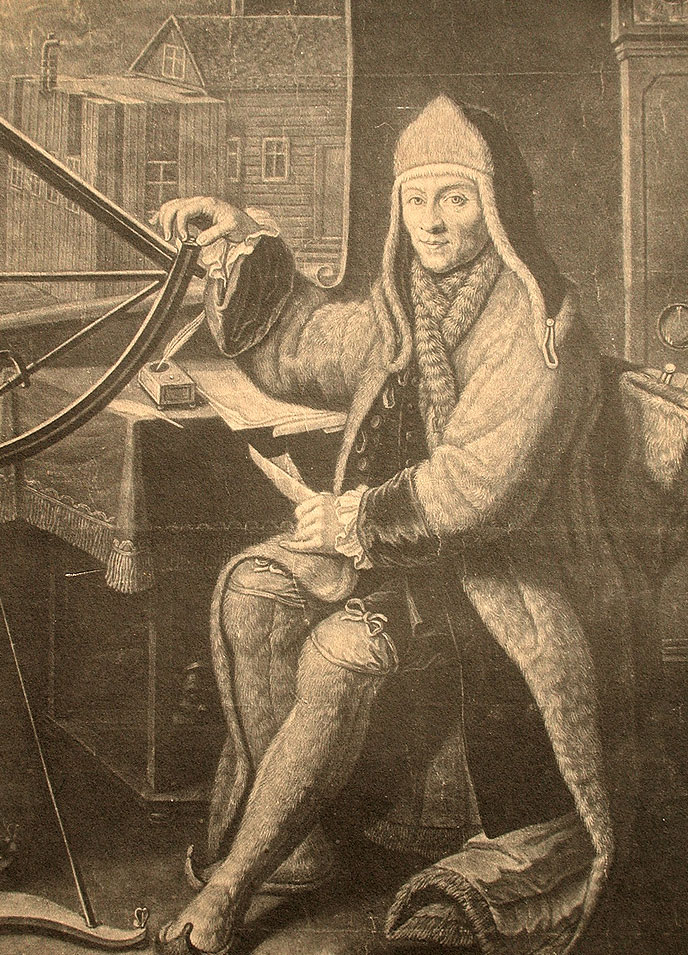
Maximilian Hell (in his youth he spelled his name Höll) was born in the mining town Banská Štiavnica (today in Slovakia), in a large family, being the 22nd child of his parents. Besides German, his mother tongue, he spoke Latin, Hungarian and Slavic languages (Czech and Slovak).
In 1738, at the age of 18, he entered the Jesuit Order and pursued humanistic studies at the Jesuit College in Banská Bystrica, then in Trenčín. From 1740 he studied at the University of Vienna. Here he turned his attention to the natural sciences and especially to astronomy, being taught by the famous scholars Joseph Franz and Erasmus Fröhlich.
From 1746 he was appointed professor of the Jesuit College in Levoča, where he taught Latin and ancient Greek, history, geography and arithmetic. In 1748 he returned to Vienna to complete his theology studies. Besides pursuing his studies in Vienna he taught mathematics and knowledge required for future mining engineers.
In 1751 he was ordained as a priest and he started teaching at the Jesuit College in Trnava, where he took part in the building of the astronomical observatory.
In 1752 he was invited to join the Department of Mathematics of the Jesuit College in Cluj. That very year the college added new buildings necessary for teaching, including an astronomical observatory, which was to be the fourth in the active territory of the Jesuit Order in the Austrian province, after those in Vienna, Graz and Trnava. In Cluj, Maximilian Hell supervised the building and equipping of the observatory. He was also interested in physics, studying, among other things, the interaction between electricity and magnets. In Cluj, he delivered sermons in German and Slavic, providing pastoral care for the military personnel in the city. In the three years he spent in Cluj, besides the astronomical observatory, Maximilian Hell was particularly noted in the field of mathematics. He delivered lectures in mathematics and wrote the coursebooks Varia compendia praxes que operationum arithmeticarum and Elementa mathematica naturalis philosophiae ancillantia. Both books were published at the Claudiopolitan Academy Printing House in 1755, before Hell left Cluj. The volumes were part of a programme initiated by the Jesuits for reforming the education, more specifically in a project aiming to provide students with textbooks. Both books have been re-edited several times.
In 1755 Empress Maria Theresa named Maximilian Hell the head of the astronomical observatory in Vienna. In 1769, at the invitation of Christian VI, the King of Denmark, Hell made a trip on the island of Vardø to observe the transit of the planet Venus. Based on the measurements made on this occasion, the scientist managed to calculate with remarkable accuracy the distance between the Earth and the Sun. Maximilian Hell was elected a member of several academic societies, including the Academy of Sciences in Stockholm, Copenhagen, Paris, Bologna, Göttingen, and Trondheim.
He died in Vienna on 18 April 1792 and was buried in the town Maria Enzersdorf (Austria).
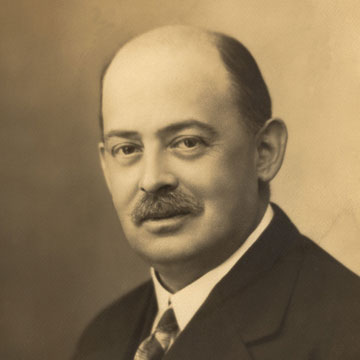
RENÉ JEANNEL
Zoolog, entomolog, speolog şi explorator francez, membru corespondent al Academiei Române, profesor de biologie la Universitatea din Cluj între 1920-1931.
RENÉ JEANNEL
(n. 23 martie 1879, Paris, Franța – d. 20 februarie 1965, Paris, Franţa)
Zoolog, entomolog, speolog şi explorator francez, membru corespondent al Academiei Române, profesor de biologie la Universitatea din Cluj între 1920-1931.
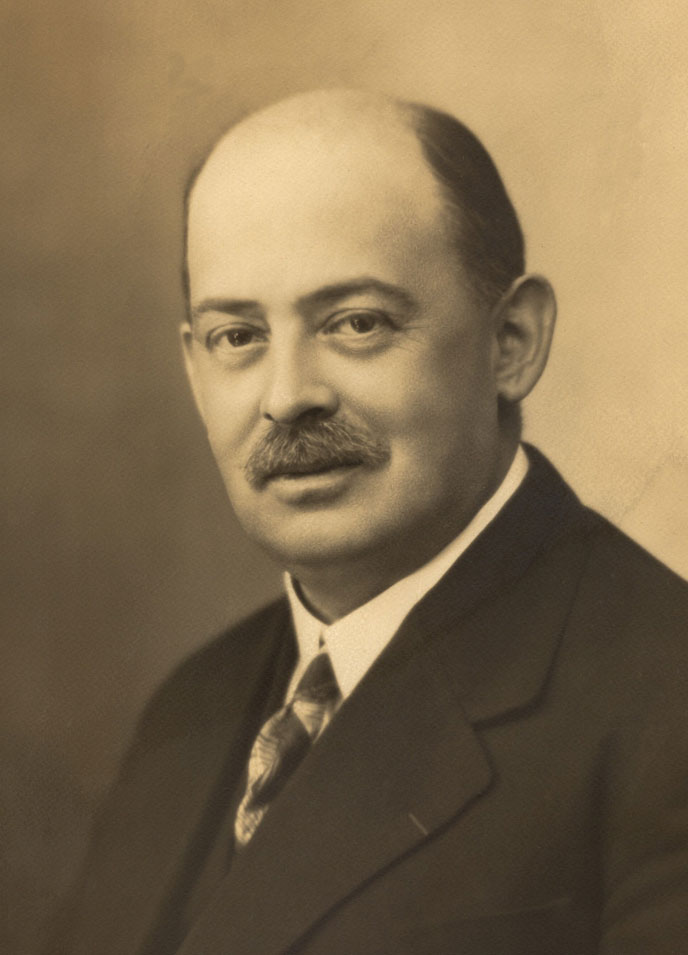
René Jeannel s-a născut într-o familie cu tradiţie medicală şi, urmând profesia tatălui şi bunicului său, a fost student al Facultăţii de Medicină din Paris, unde şi-a susținut doctoratul în 1907. Anii grei ai Primului Război Mondial (1914-1918) au reprezentat singura perioadă în care a lucrat ca medic chirurg, acordând îngrijiri soldaţilor armatei franceze.
Încă din 1904-1905, Jeannel şi-a cultivat şi pasiunea pentru ştiinţele naturale, începând să exploreze nenumărate peşteri din Franţa şi apoi din Spania (în munţii Pirinei). În acest context, René Jeannel a făcut cunoştinţă cu savantul român Emil Racoviţă, de care avea să îl lege o lungă şi profundă prietenie, dar şi o intensă şi fructuoasă colaborare ştiinţifică. La scurt timp după debutul cercetărilor sale speologice, Jeannel a descoperit în peştera Oxybar, la poalele masivului Arbailles, două noi specii de coleoptere, care, în onoarea sa, au primit numele de Bathyscia Jeanneli, respectiv Aphaenops Jeanneli.
În 1907 René Jeannel a fondat, alături de Emil Racoviţă, revista ,,Biospeologica”, care a devenit un reper în domeniu. Peste un an, Jeannel şi-a obţinut şi licenţa în știinţe naturale, fiind numit preparator la laboratorul Arago din Banyuls-sur-Mer. În 1911, şi-a susţinut la Sorbona teza de doctorat în biologie, cu tema Revisions des Batysciinae. După o expediţie de cercetare în Africa tropicală, alături de savantul Charles Alluaud, René Jeannel a fost angajat şi a lucrat pentru câţiva ani ca bursier la Institutul Pasteur de la Paris. În 1919, la sfârşitul Primului Război Mondial, a fost numit conferenţiar la Facultatea de Ştiinţe a Universităţii din Toulouse, la disciplina zoologie. Jeannel nu a rămas pentru multă vreme în mediul academic francez, pentru că Emil Racoviţă, devenit profesor titular de biologie şi director al Institutului de Speologie la nou-înfiinţata universitate românească din Cluj, l-a rugat să i se alăture în România.
Din ianuarie 1920, René Jeannel a fost angajat la Facultatea de Ştiinţe de la Cluj ca profesor titular de biologie generală şi director adjunct al Institutului de Speologie. El s-a stabilit şi a lucrat în România până în 1927, când a fost numit director al Vivariumului de la Jardin des Plantes din Paris. În pofida acestei funcţii de răspundere din Franţa, Jeannel a continuat să vină la Cluj în calitate de profesor invitat, predându-şi cursul de biologie generală la universitate până în 1931.
Pe perioada şederii sale la Cluj, René Jeannel a defăşurat o prodigioasă activitate ştiinţifică şi de cercetare. Aici a redactat importanta sa lucrare La faune cavernicole de la France (1926), precum şi volumul Cours de biologie générale, l'évolution et l'hérédité (1930), apărut în versiune română, sub îngrijirea lui Valeriu Puşcariu, unul dintre asistenţii de la Institutul de Speologie. Alături de Emil Racoviţă, dar şi de alţi savanţi străini renumiţi (P.A. Chappuis, A. Winkler, Louis Fage etc.) René Jeannel a efectuat numeroase campanii de explorare speologică în Munţii Apuseni şi în Munţii Carpaţi. Rezultatele acestor expediţii s-au concretizat în peste 19 articole şi studii publicate în revista ,,Buletinul Societăţii de Ştiinţe din Cluj”, care au descris din punct de vedere sistematic, biogeografic şi al filogeniei fauna cavernicolă din regiunea Bihorului, dar şi din alte zone ale Transilvaniei.
După întoarcerea în Franţa, René Jeannel a participat la multe expediţii de cercetare şi colectare de material biologic şi speologic în Statele Unite ale Americii, Africa Orientală, în insulele sub-antarctice franceze (Marion, Crozet, Kerguelen, Saint-Paul, Amsterdam), dar şi în alte ţări din Europa. În 1951 a deţinut funcţia de director al Muséum national d'histoire naturelle de la Paris.
Opera sa ştiinţifică numără 511 titluri (cărţi de autor, articole, rapoarte de explorare etc.), dintre care amintim: Monographie des Trechinae (1926-1930) ; Un cimetière d'éléphants (1934); Monographie des Catopidae (1936); Les Calosomes (1940); Au seuil de l'Antarctique (1941); Coléoptères carabiques (1941 et 1942); La genèse des faunes terrestres (l942); La marche de l'évolution (1950); Quarante années d'explorations souterraines (1950).
Pentru activitatea sa deosebită, René Jeannel a fost distins de statul român cu Medalia ,,Răsplata muncii pentru învăţământ”, clasa I (decembrie 1930), iar de către statul francez cu titlul de comandor al Legiunii de Onoare (în 1951). În 1909 a primit premiul Constant, iar în 1921 premiul Passet al Societăţii entomologice din Franţa. În anul 1928 a fost ales membru corespondent al Academiei Române, fiind reconfirmat în această poziţie în 1965. În semn de omagiu, numele lui René Jeannel a fost acordat staţiunii de ecologie experimentală de la Moulis (Franţa), unui platou vulcanic al insulei Possession din Antarctica, precum şi unei alei din Jardin des Plantes de la Paris.
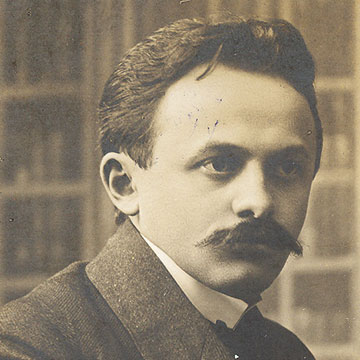
IOAN LUPAŞ
Historian, priest, politician, university professor of Romanian history and history of Transylvania at the University of Cluj between 1919-1946, founder and co-director of the National History Institute of Cluj (1920-1945), member of the Romanian Academy.
IOAN LUPAŞ
(born 9 August 1880 in Sălişte, Sibiu county– died 3 July 1967 in Bucharest)
Historian, priest, politician, university professor of Romanian history and history of Transylvania at the University of Cluj between 1919-1946, founder and co-director of the National History Institute of Cluj (1920-1945), member of the Romanian Academy.
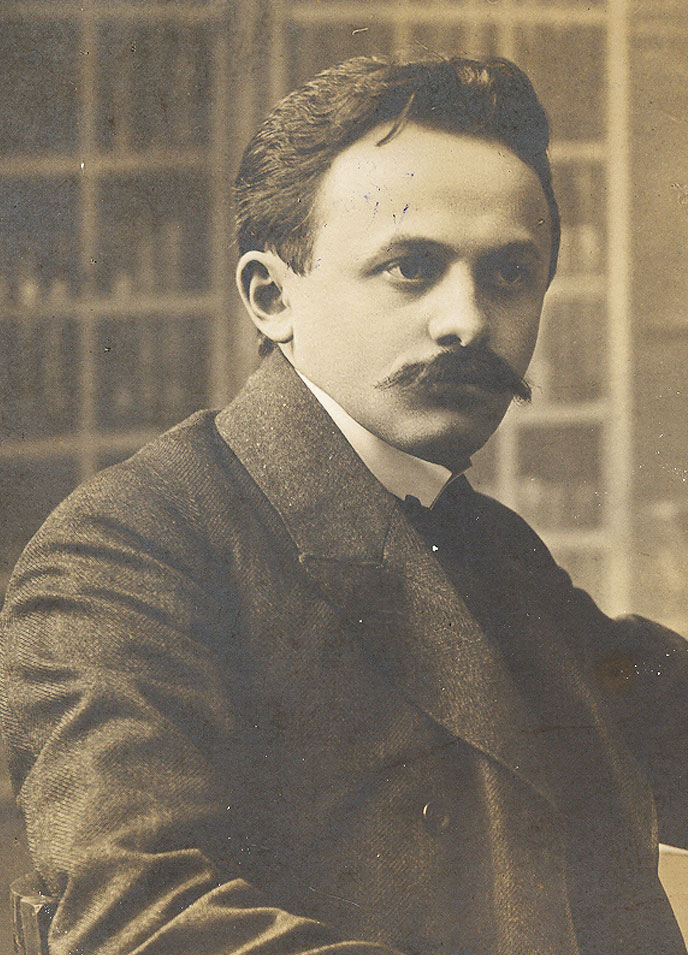
Following high school studies in Sibiu (1892-1899) and Brașov (1899-1900), Ioan Lupaș attended the Faculty of Letters and Philosophy of the University of Budapest (1904). He received his PhD title in 1905 with a thesis on the Orthodox Church of Transylvania and the religious union of the eighteenth century.
Ioan Lupaș began his career as a professor of church history and Romanian history at the Andreian Theological Seminary in Sibiu (1905-1909). He taught the new history of the Romanians and the history of Transylvania, then the history of the Romanians at the University of Cluj (1919-1946). Together with Alexandru Lapedatu, Ioan Lupaş established the Institute of National History in Cluj in 1920. He led this institute until 1945, publishing ten yearbooks.
Ioan Lupaș has performed various administrative functions such as: Secretary of Cults and Public Instruction of the Conducting Council of Transylvania (1918-1920); deputy of Sălişte; Minister of Health and Social Welfare (1926-1927), Minister of Cults and Arts (1937-1938); deputy at the National Church Congress in Bucharest and in the Synod of the Diocese of Cluj; member of the “Commission of the 15” for preparing the draft law on the unification of the church constitutional organization and member of the Commission for the preservation of historical monuments. He was also appointed archpriest of Sălişte (1919-1920).
Ioan Lupaș was among the founders of the “Luceafărul” magazine (1902) and was interested the history of the church. Some of his published works: An attempt to reunite the Romanian Churches of Ardeal in 1798 (1913); Contributions to the History of Transylvanian Romanians (1915); Church History of the Transylvanian Romanians (1918; 1995); History of the Romanian Union (1921; 1993); Horea's Revolution (1924); The uprising of the peasants of Transylvania in 1784 (1931); Romanian chroniclers and historians of Transylvania (1933); The beginning of the reign of Matei Basarab and his relations with Transylvania (1933); La chute de la Monarchie austro-hongroise et la libération de la Transylvanie (1934); L'empereur Joseph II et Horea (1935); Transylvanian Historical Documents (1940); La Transilvania nel quadro geografico e nel ritmo storico romeno (1942).He also wrote monographs: The Mission of Bishops Gherasim Adamovici and Ioan Bob at the Court of Vienna in 1792 (1912); George Bariţ (1913); Transylvanian Prince Acațiu Barcsai and Metropolitan Sava Brancovici. 1658-1661 (1913); Bishop Vasile Moga and Professor Gheorghe Lazăr (1915); From the History of Romanian Journalism (1916); Metropolitan Andrei Șaguna. Commemorative writing at the centennial celebration of his birth (1921); Avram Iancu (1924); Ioan Bogdan (1930); Bishop Nicholae Popea (1933); Dr. I. Piuariu Molnar. His life and work 1749-1815 (1939); Un martyr transilvain: le pasteur St. L. Roth (1939).
Member of the Romanian National Party of Transylvania, then of the National Peasant Party, Ioan Lupaș later joined the People's Party, and between 1933-1944 he was a member of the Christian National Party. In 1950 he was arrested and imprisoned, without conviction, at the Penitentiary in Sighet, where he was detained until 1955.
Among the awards and distinctions that he received: “V. Adamachi” Award of the Romanian Academy (1910); Professor Emeritus (1967).
Ioan Lupaş was elected correspondent member of the Romanian Academy (1914), member of the Romanian Academy (1916) and then president of the Historical Section (1932-1935) of the Romanian Academy, and member of the board of directors and chairman of the Historical Section of “Astra”.
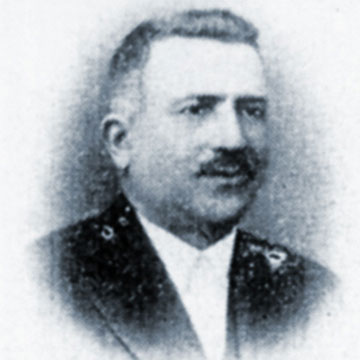
AUGUSTIN MAIOR
Physicist, inventor, pedagogue, tenured professor (1919-1947) at the Faculty of Sciences of Cluj, founder of the School of Theoretical Physics at the University of Cluj, member of the Romanian Academy. A complex personality that had a substantial contribution to the field of physics through his avant-garde views and the objectives pursued, being one of the pioneers of Romanian electronics and telecommunication.
AUGUSTIN MAIOR
(born 21 August 1882 in Reghin – died 3 October 1963 in Cluj-Napoca)
Physicist, inventor, pedagogue, tenured professor (1919-1947) at the Faculty of Sciences of Cluj, founder of the School of Theoretical Physics at the University of Cluj, member of the Romanian Academy. A complex personality that had a substantial contribution to the field of physics through his avant-garde views and the objectives pursued, being one of the pioneers of Romanian electronics and telecommunication.
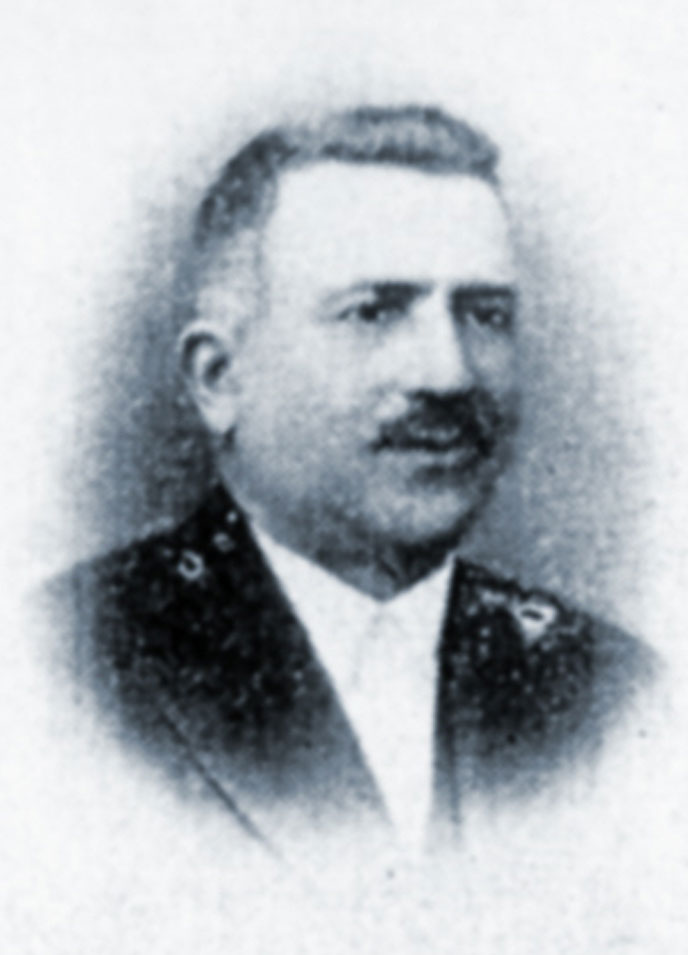
Augustin Maior attended secondary studies at Reghin, Târgu-Mureş and Budapest, and between 1900-1904 he attended the Faculty of Mechanics of the Polytechnic Institute in Budapest. During 1905 he pursued a series of postgraduate courses in mathematics and physics in Vienna, Munich and Göttingen.
In 1905 he started working as an engineer at the Experimental Station of the Hungarian Post Office in Budapest where by the end of 1906 he succeeded to transmit for the first time five simultaneous telephone conversations without interference over a 15 km telephone line.
After World War I and the unification of Transylvania with Romania, Augustin Maior moved to Sibiu in August 1919, where he initiated the reorganization of the Post Office and Telecommunications Services in Transylvania. In April 1919, he established the first Telegraph and Telephone School in Transylvania, and during the same month he was appointed main director of the Post, Telegraph and Telephones in Transylvania and Banat.
In July 1919 he was appointed tenured professor of theoretical and technological physics at the Institute of Theoretical and Technological Physics of the Faculty of Sciences in Cluj, and in October he was appointed director of this institute.
He was a tenured professor (1919-1947), consultant professor (1947-1956), vice-dean and dean (1929-1930; 1946-1947). At the initiative of Augustin Maior the first Romanian school of theoretical physics was founded in Cluj in January 1920, where the physicist taught the first class on theoretical and applied physics at the University of Cluj. During the same period he changed the name of the institute to ‘Institute of Theoretical and Applied Physics’. He taught courses that included many modern ideas such as Electricity and Magnetism or Acoustics and Optics, which he published in various editions.
He invented multiple telephony, whose theoretical foundations were presented in 1907 in the Elektrotechnische Zeitschrift magazine (Berlin) and then in paper on “The Use of High-Frequency Alternating Currents in Telegraphy, Telephony and for Power Transmission” published in the The Electrician magazine (London). The results of his research soon came to be well known. In 1909, E. Weinberg of Washington confirmed the validity of Augustin Maior's conclusions and experiments and proposed the use of his method in the realization transatlantic telephony.
Among his relevant scientific papers published in important foreign journals are: “Zur Mehrfachtelephonie” (1909); “Multiplex Telephony” (1911); “Sur la télégraphie et la téléphonie multiple avec des courants de haute fréquence” (1921); “Über Strahlung in Gravitation Felde” (1932) and others. Among his works: On the minimal kinetic energy of a moving body (1925); On Gravity Field Radiation (1931); Quantum Statistics (1933) and others.In 1923 together with a group of colleagues he built the first radio to broadcast in Cluj.
He was tenured member of the Academy of Sciences beginning 21 December 1937, and in 2012 he was elected post-mortem member of the Romanian Academy.
In 1930 he was awarded the “First Class Honor for Education” medal and was appointed member of the Order of the Crown of Romania with the rank of Commander. The most important international recognition of Augustin Maior's activity came from the French Academy of Sciences during the meeting on 19 June 1950, when Louis de Broglie, the founder of quantum mechanics and a Nobel Prize laureate, presented the work of the Romanian physicist entitled “Gravitational field and magnetism”.
He was buried in the Cluj-Napoca Central Cemetery (Hajongard)
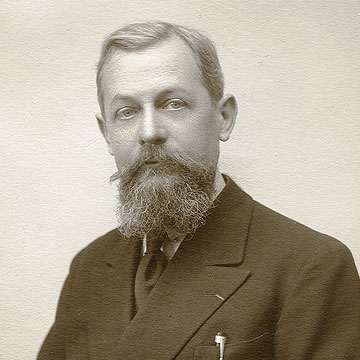
EMMANUEL - LOUIS EUGÈNE DE MARTONNE
French geographer, from 1909 professor at Sorbonne University (Paris, France). In 1912 he was elected corresponding member of the Romanian Academy. After 1919 he was visiting professor at the University of Cluj where he helped create the Romanian school of geography. He maintained very close scientific relations with all the other academic and higher education institutions in Romania.
EMMANUEL - LOUIS EUGÈNE DE MARTONNE
(born 1 April 1873, Chabris – died 24 July 1955, Sceaux, France)
French geographer, from 1909 professor at Sorbonne University (Paris, France). In 1912 he was elected corresponding member of the Romanian Academy. After 1919 he was visiting professor at the University of Cluj where he helped create the Romanian school of geography. He maintained very close scientific relations with all the other academic and higher education institutions in Romania.
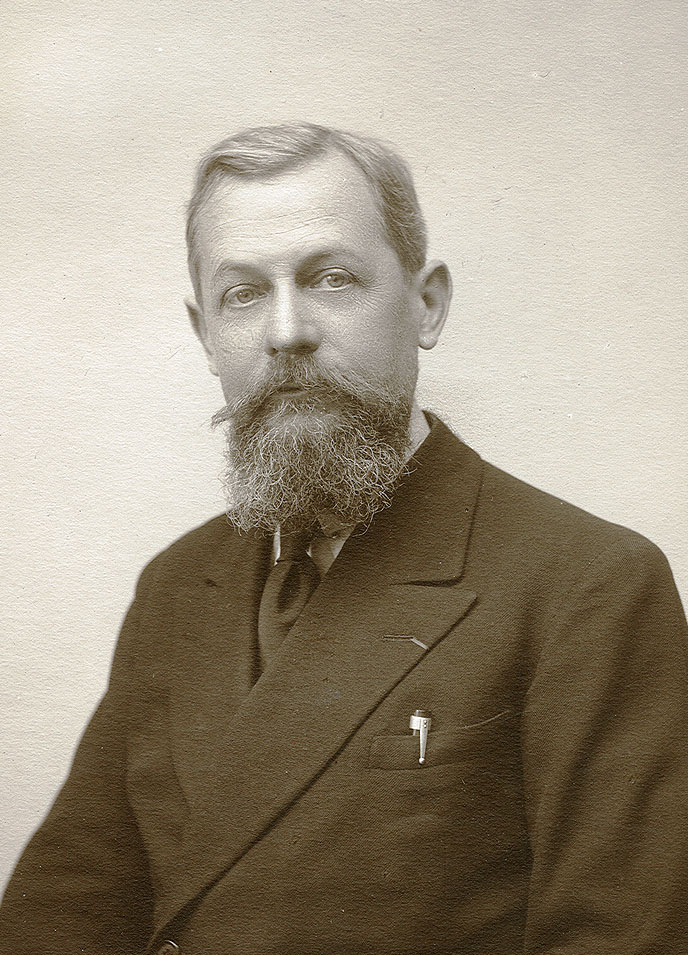
He studied at the École Normale Superieure in Paris where he obtained a degree in geography and history in 1895 and in 1897 a BA in science. In 1898, Emmanuel de Martonne began his scientific work in Romania. Together with Professor Ludovic Mrazec of the University of Bucharest and Professor Gyula Szádeczky-Kardoss of the Hungarian University of Cluj, Emmanuel de Martonne researched the Parâng Mountains, confirming the presence of glacial landforms here.
In 1899, Emmanuel de Martonne was appointed associate professor of geography at the University of Rennes. Here, he founded a geography laboratory that still works today. In 1902, de Martonne obtained a doctorate in letters with the thesis La Valachie: essai de monographie géographique, describing in detail, for the first time, a vast natural region of Romania with all its characteristics. Another paper, published in 1903, Recherches sur la distribution géographique de la population en Valachie, highlighted the relations between the distribution of the population of Wallachia and the natural conditions.
Between 1905-1908 the French scientist worked at the University of Lyon, first as associate professor and then a professor. During this period he wrote and defended a second PhD thesis in science. His research, entitled Recherches sur l'évolution morphologique des Alpes de Transylvanie (Karpates méridionales), was completed in 1907 and singled itself by the identification of mountain erosion platforms (Borescu, Ses River, Gornovita), a scientific discovery still valid until today.
In 1909 he moved to the Sorbonne University in Paris, where he led the geography department for several decades. In the same year, Emmanuel de Martonne published Traité de géographie physique, a book with numerous editions that made him a renowned specialist of physical geography. Between 1926 and 1944 the professor also led the general geography laboratory at the École Pratique des Hautes Études.
In 1912, de Martonne was elected a corresponding member of the Romanian Academy. In 1913, Emmanuel de Martonne met at the Sorbonne the Romanian scholar George Vâlsan, with whom he had a long and close friendship. At the end of the First World War, professor de Martonne was one of the experts consulted by the Paris-Versailles Peace Conference on the issue of tracing the new frontiers of Central and Eastern Europe. After the establishment of the Romanian University in Cluj in the autumn of 1919, George Vâlsan was appointed a professor of physical geography at the new institution and invited Emmanuel de Martonne to help create the school of geography in Cluj. In 1921, professor de Martonne taught for a semester geography courses at the University of Cluj. At the same time, he organized for the students and professors of the University of Cluj several practical study trips, which took the participants throughout Romania where they investigated all the landforms encountered. Emmanuel de Martonne continued his regular visits to Cluj until the 1936-1937 academic year, delivering each time conferences and courses in geography and ethnography.
He also received numerous students and doctoral students from Cluj, such as the geographer Tiberiu Morariu, in his department at Sorbonne University. Emmanuel de Martonne also drew the attention of many young French specialists to Romania, coordinating doctoral theses that studied different aspects of our country's geography. One of the most important such research papers, dedicated to the Apuseni Mountains, was developed by Robert Ficheux, future honorary member of the Romanian Academy. One can state that professor Emmanuel de Martonne has contributed in a decisive manner to the development of close and long-term cooperation between the Cluj and the French geographers. His merits were recognized in his being granted the title of Doctor Honoris Causa of the University of Cluj (in 1930), as well as through the fact that one of the streets in downtown Cluj, close to the university, bears his name.
Emmanuel de Martonne's scientific work counts over 200 specialized books and scientific articles, more than 70 works being dedicated to Romania. Among these we mention: Sur l'histoire de la vallée de Jiu (1899); Les tremblements de terre de la Roumanie et leur rapport avec les lignes directrices de la géographie physique (1902); Recherches de La Dobroudja (1918); La nouvelle Roumanie dans la nouvelle Europe (1922) etc.
Professor de Martonne has held prestigious positions in many international scientific bodies: he was Secretary General (1931-1938) and then President (1938-1949) of the International Geographical Union, President of the French Meteorological and Climate Society, Secretary General of the International Geographical Congress in Paris (1931), member of geographical societies in Bucharest, Budapest, New York, Rome, London, Berlin, Stockholm, Copenhagen. He also became a member of the French Academy of Sciences in 1942.
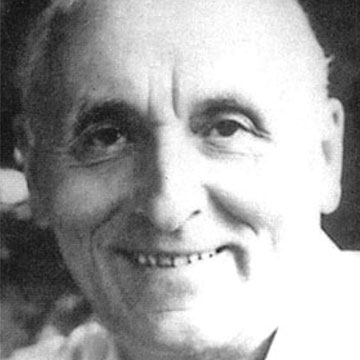
NICOLAE MĂRGINEANU
Romanian psychologist with a prodigious activity that includes studies of psychology centered on people, science, mathematics and applied psychology in the big industry, associate university professor and director of the Institute of Psychology at the University of Cluj, member of the Romanian Academy. Nicolae Mărgineanu is considered a pioneer in introducing work psychology into the management of enterprises and human resources.
NICOLAE MĂRGINEANU
(born 22 June 1905 in Obreja – died 13 June 1980 in Cluj-Napoca)
Romanian psychologist with a prodigious activity that includes studies of psychology centered on people, science, mathematics and applied psychology in the big industry, associate university professor and director of the Institute of Psychology at the University of Cluj, member of the Romanian Academy. Nicolae Mărgineanu is considered a pioneer in introducing work psychology into the management of enterprises and human resources.
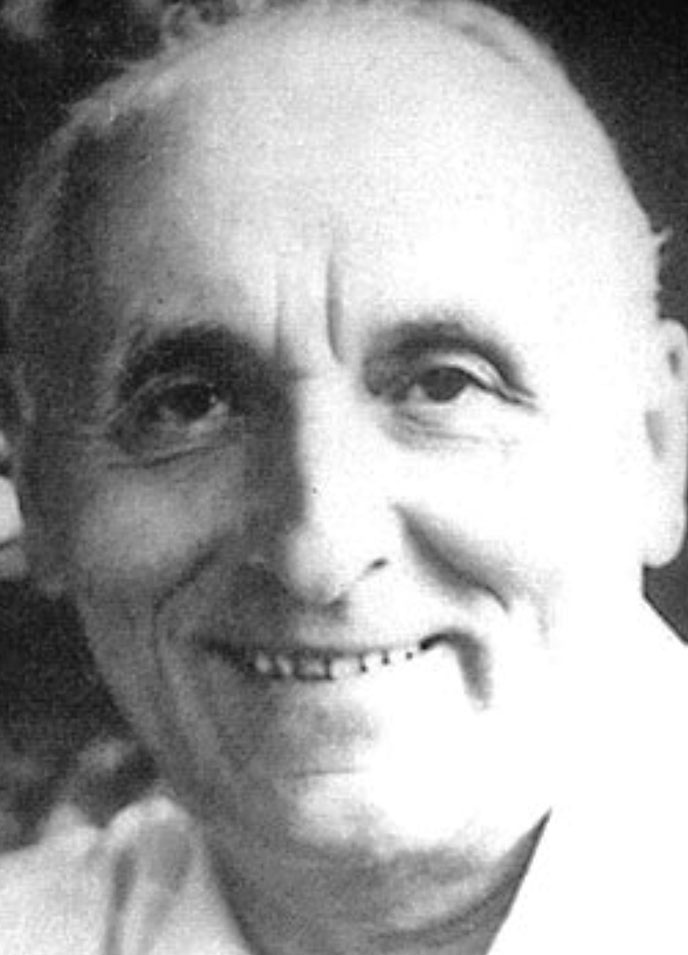
Nicolae Mărgineanu attended secondary studies at Blaj and Orăștie and then attended the Faculty of Letters and Philosophy of the University of Cluj. In 1927 he obtained his degree in psychology, two years later he defended his doctoral thesis. During this period he completed post-graduate mobilities at several universities abroad (Germany, France, etc.). After obtaining his PhD degree he became associate professor in Psychology (1931) and then he was appointed assistant at the Institute of Psychology of the University of Cluj, where he remained until the end of 1931 when he received a scholarship in psychology from The Rockefeller Foundation. As a scholarship recipient of this foundation, he spent two years in the United States, attending several internships as a scientific researcher, alongside famous professors from the Harvard, Yale, Chicago, and Columbia universities. In 1934, Mărgineanu returned to Europe and continued his training at the University of London, Sorbonne and Collège de France.
After returning to the country, Nicolae Mărgineanu was appointed lecturer at the Institute of Psychology of the University of Cluj (1936-1938), and from 1938 until 1947 he taught as associate professor of applied psychology at the Faculty of Philosophy and Letters. Between 1938 and 1942 he was substitute professor of psychology and director of the Institute of Psychology and later director of the Psychotechnical Institute of Cluj (1941-1943). Over the years, the professor taught numerous courses of applied psychology, statistics, technical psychology, and work psychology, becoming one of the best specialists in this field. Arrested in 1948 and accused of high treason, he was sentenced to 25 years in prison, of which he did 16.
After being released from prison he was reintegrated into activity in 1969, working as a senior scientific researcher, second degree, at the Institute of Pedagogical Sciences, Cluj subsidiary (1969-1971). Between 1971 and 1980 he returned to the Department of Psychology of the Faculty of History and Philosophy of the Babes-Bolyai University in Cluj as a substitute professor responsible with the scientific research.
In the last period of his life (1971-1980), he taught at German (Bonn and Hamburg) and American (Harvard) universities as visiting professor. Diagnosed with cancer in the United States, he returned to the country where he died on 13 June 1980.Together with the diplomat Vasile Stoica, he was vice-president of the Romanian-American Association. In 2012 he was declared a post-mortem member of the Romanian Academy.
Among the books published by Nicolae Mărgineanu: Psychology of Exercising (1929); Psychology of Learning (1930); Contemporary German Psychology (1930); Contemporary French Psychology (1932); Psychometry Elements (1938); Psychology of the Person (1940); Psychotechnique in the Big Industry (1942); Nature of Science (1968); Under the Sign of Human Kindness (1969); Psychology and Literature (1970); The Human Condition (1973); Psychology, Logic and Mathematics (1975); Amphitheaters and Prisons (1991) and others. He also published considerably in foreign languages: Beiträge zur Psychologie der Übung (1931); La théorie des facteurs (1934); Les facteurs psychologiques (1934) and others.
Nicolae Mărgineanu was one of the first researchers in the field of work psychology. He was also involved in the psychologically-based organization of re-education centers and he organized the first network of vocational schools. He wrote several memoirs on the years spent in detention. His son is the well-known film director Nicolae Mărgineanu jr.
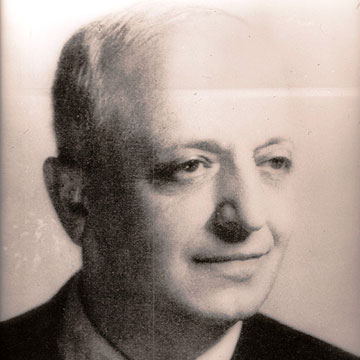
TIBERIU I. MORARIU
Professor of geography at the University of Cluj between 1931-1973, member of the Romanian Academy.
TIBERIU I. MORARIU
(born 26 September 1905 in Salva, Bistrița-Năsăud county – died 30 November 1982 in Cluj-Napoca)
Professor of geography at the University of Cluj between 1931-1973, member of the Romanian Academy.
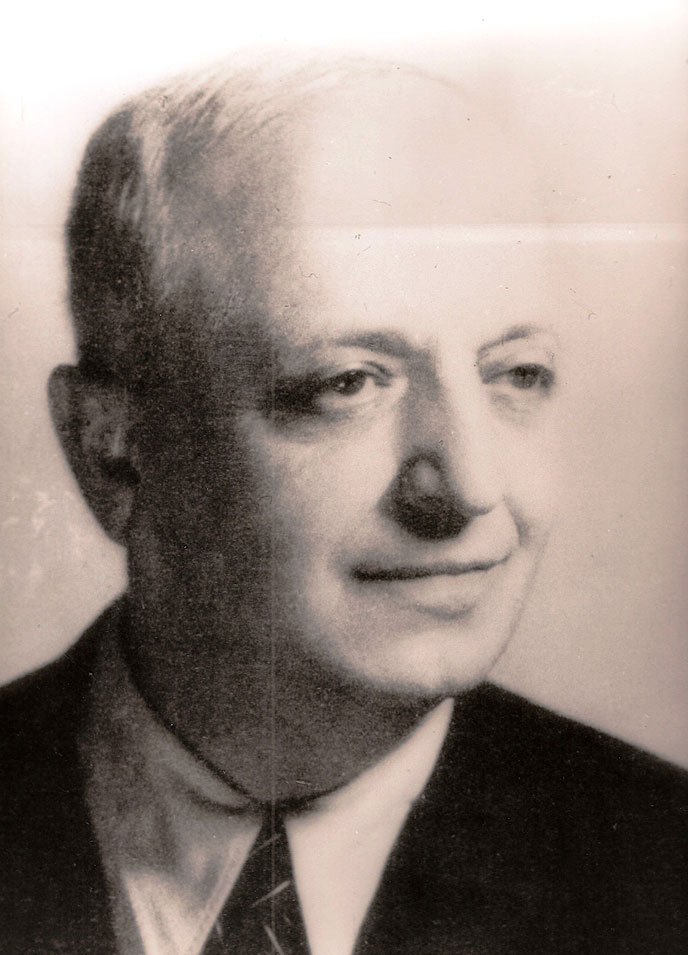
Following high school studies in Năsăud, Tiberiu Morariu attended the Faculty of Sciences in the Geography with Natural Sciences specialization, at the University of Cluj, between 1925-1929. After graduating from the faculty, he went to Paris for further specialization; here he attended, among others, the classes of professor Emmanuel de Martonne (1929-1930), and he was granted the Higher Education Diploma. In 1935 he became doctor of science at the University of Cluj. His doctoral advisors were professors George Vâlsan and Emmanuel de Martonne, who were acknowledged as founders of the geographic education of the Romanian university in Cluj in 1921.
He began teaching at the University of Cluj in 1931, after returning from Paris, although he began working at the University since the end of his first year of study; his activity at the Institute of Geography of the University of Cluj began as graduate assistant (1 October 1927 - 1 December 1928), substitute assistant (1 December 1929 - 15 October 1932), during which he was assistant at the Ethnographic Museum of Transylvania, lecturer (1932-1938), substitute professor (1939-1940) and a tenured teacher from 1 October 1942 to 15 September 1973, when he retired, but continued to work as an Emeritus professor. He taught various university courses: hydrology, climatology, geomorphology, field research methodology, etc. For a long time, he was the only doctoral coordinator in Romania in the field of geography. At the Faculty of Biology and Geography he was head of the Geography Department (1947-1973) and dean (1962-1971). Tiberiu Morariu was responsible for the relocation of the Faculty of Geography in the building where it currently operates. Together with professor Romulus Vuia, he participated in the organization of collections at the Astra Museum in Sibiu and especially at the Ethnographic Museum of Transylvania in Cluj. He donated 2,500 works to the library of the geography department of the University of Cluj, thus providing the T. Morariu book fund, intended for the scientific documentation of the future students.
Between 1942-1947 he served as director of the Geography Institute in Cluj, and between 1947-1973 he was head of the Geography Section of the Cluj Subsidiary of the Romanian Academy. In 1944 he participated in the founding of the Institute of Geographic Research of Romania, and following 1958 he succeeded in establishing a subsidiary in Cluj. He was also a correspondent member of the Romanian Academy since 1955, president of the National Geography Committee, president of the Ethnography and Folklore Society of Cluj, member of the Romanian Geographical Society, as well as a member of international institutions: Paris Society of Ethnography, International Union of Geography, Hungarian Hydrology Society. In November 1969 he was granted the doctor honoris causa distinction by the University of Strasbourg.
His scientific activity, spanning over half a century, encompasses over 360 publications in the following specializations: physical, human, historical, economic and applied geography, history of geography, morphography, ethnography, folklore, geographical toponyms, etc. Adding to these, he wrote geographical and travel descriptions, textbooks, courses, atlases, maps, scientific communication, and dissemination publications.He initiated and organized the first National Symposium of Applied Geography. He was part of the Editorial Committee of the National Geographic Atlas and contributed to Volume I of the Geography Treaty, two essential works of the Romanian geographical studies. He has worked as editor for several journals such as: “Studia Géomorphologica Carpatho-Balcanica” (Cracow), “Revue Roumanie de Géologie, Géophysique et Géographie. Série de Géographie, Terra” (Bucharest), “Studia Universitatis Babeş-Bolyai. Geographia”.
He received the Romanian Academy Award for his doctoral paper of 1935 - Pastoral Life in the Rodna Mountains. Some of his most cited works among his numerous publications are: The geographical distribution of the population of Transylvania, Banat, Crişana and Maramureş (1940); The Germanic element in Transylvania (1942); General Hydrology (1962, 1970, in collaboration); Géographie de la Roumanie (1969); Principles and methods of research in physical geography (in collaboration,, 1971); Romania: Land of the Carpathians and the Danube (1973).
Tiberiu Morariu has been awarded several important distinctions for his activity, of which the most important is “Scientist Emeritus” (1969). The Faculty of Geography at the University of Bucharest awarded him posthumously the medal and the “Diploma of Excellence Simion Mehedinţi” in recognition of his leadership in the national geography.
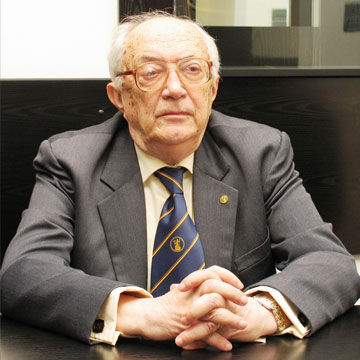
CAMIL BUJOR MUREŞANU
Historian. Corresponding member (13 November 1990) and full member (9 June 2000) of the Romanian Academy; President of the Cluj-Napoca branch of the Romanian Academy (2006-2010). Dean of the Faculty of History (1968-1976, 1981-1989) and director of the ‘George Bariţiu’ History Institute of the Romanian Academy in Cluj-Napoca (1 July 1995 - 31 October 2007)
CAMIL BUJOR MUREŞANU
(born 20 April 1927 in Turda – died 21 February 2015 in Cluj-Napoca)
Historian. Corresponding member (13 November 1990) and full member (9 June 2000) of the Romanian Academy; President of the Cluj-Napoca branch of the Romanian Academy (2006-2010). Dean of the Faculty of History (1968-1976, 1981-1989) and director of the ‘George Bariţiu’ History Institute of the Romanian Academy in Cluj-Napoca (1 July 1995 - 31 October 2007)
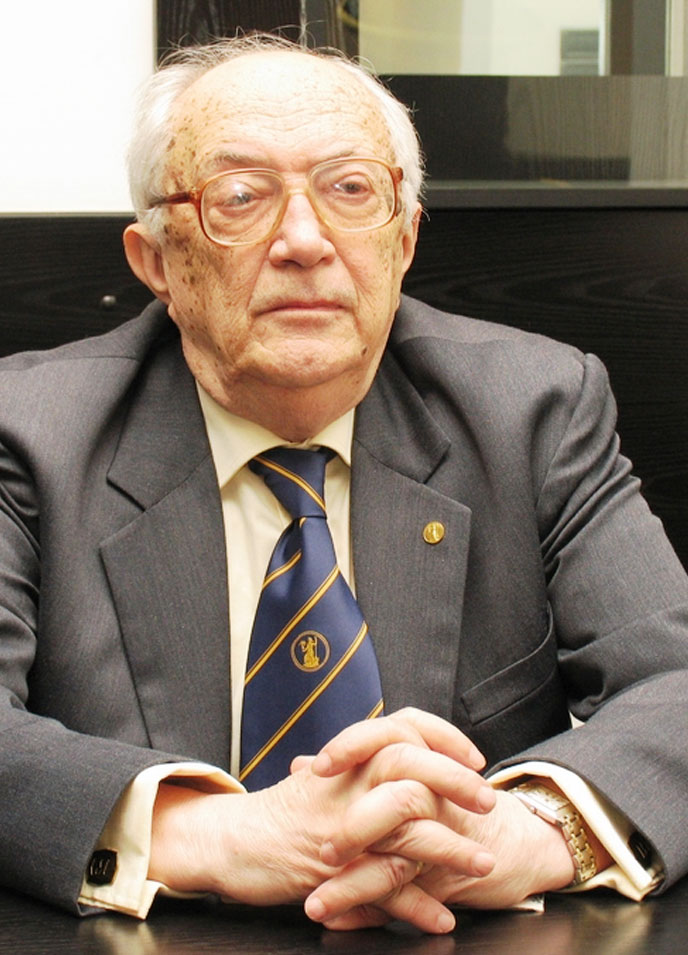
He was born in an intellectual family; his father, Teodor Murăşanu, was priest and poet. He attended high school in Turda and university (Faculty of History) in Cluj (1946-1950). In 1971 he received his PhD in Historical Sciences. In 1966 he furthered his studies in Paris.
He was a graduate assistant, teaching assistant, assistant professor (1952-1961), associate professor (1962-1975) and from 1975 to 1997, professor at the Faculty of History and Philosophy of the University of Cluj-Napoca, teaching various subjects: ancillary sciences of history, medieval history of Romania, universal medieval history, universal modern history.
In his research he had a wide range of concerns: from issues of medieval history of Romania (Iancu de Hunedoara and his time, 1957), to issues of universal modern history (Fire protected by waters. Revolution in the Netherlands, 1960; The Bourgeois Revolution in Britain, 1964; The British Empire. A Short History, 1967, President in the White House, 1974, Simon Bolivar 1783-1830, 1983; 10 Downing Street, 1984; Presidents of France, 1991; History of the Press, 1995; Nation, Nationalism, Evolution of Nationalities, 1996; Modern Europe, 1997; In the Temple of Janus, Studies and Thoughts on the Past and the Future, 2002) and others.
They are joined by more than 300 studies and articles published in scientific journals in the country and abroad, addressing various issues on international relations in the first half of the seventeenth century, the formation of European nations, the Age of Enlightenment, the history of the press in the modern era, and so on. His work also included dozens of books, school and university textbooks.
He translated: Georg Simmel, Religion (from German, 1999) and Publius Syrus, Aphorisms (from Latin, 2002).
He collaborated for many compendiums and synthesis volumes on the historical evolution of the Romanian space, such as: From the History of Transylvania, vol. I-II, 1960-1961; Historical Atlas of Romania, 1971; Military History of the Romanian people, vol. I-IV, 1984-1988; History of the Romanians, vol. IV, 2001, and others. He also edited several volumes of writings, papers and documents dedicated to well-known Transylvanian historians, such as George Bariţiu, Ioan Lupaş, Alexandru Lapedatu.
He was a well-known and acknowledged author of textbooks, with subsequent editions, some of which were also translated into other languages. He contributed to editing the collection of Documents on the history of Romania. C. Transylvania and the volume of the Romanian National Movement from Transylvania between 1849-1851. Documents (8 August 1849 - 31 December 1951), 1996.
In 1978 he was visiting professor at Columbia University in New York, and between 1995-2002 he worked as an adjunct professor at Banatul University in Timişoara and Deva.
He received the title of Doctor Honoris Causa of the universities of Oradea (1999), Timişoara (2002), and Alba-Iulia (2007).
He was the Honorary President of the Association of Greek Catholic Church Researchers, President of the Romanian Party in the Joint Romanian and Hungarian History Commission, under the aegis of the Romanian Academy and of the Hungarian Academy of Sciences, member of the Romanian National History Committee, corresponding member of ‘Süd-Ost Europa Gesellschaft’ in Munich and Berlin (2002) and of the Academy of Pedagogical Studies in Belgrade.
He was awarded the State Prize of the Romanian Academy (1976) and the National Order ‘For Merit’ as Officer (2000). At the age of 80, Professor Camil Mureșan received the ‘Academic Merit’ diploma from the Romanian Academy.
His prestigious work also earned him the title of honorary citizen of Cluj-Napoca, Turda, and Blaj (1997-1999).
Legitimate successor of the great Cluj historians Ioan Lupaș and Alexandru Lapedatu, Camil Mureşanu was one of the renowned specialists of the University of Cluj in the 20th century.
He was buried in the (Hajongard) Central Cemetery in Cluj-Napoca.
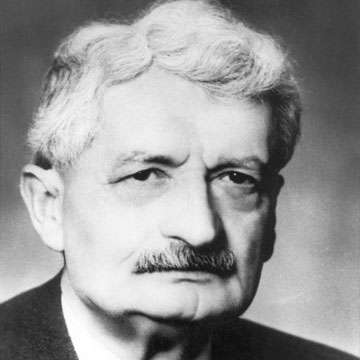
HERMANN OBERTH
Scientist, physicist, mathematician and inventor, pioneer of cosmic flights. Post-mortem member of the Romanian Academy (31 January 1991). He established the theoretical bases of space navigation. Graduate in Physics at the University of Cluj (1923). Doctor Honoris Causa in Physical Sciences of Babeş-Bolyai University in Cluj-Napoca (1972). He published numerous volumes, making an important contribution to the emergence and development of building missiles, which were the precursors of modern times missiles.
HERMANN OBERTH
(born 25 June 1894 in Sibiu – died 28 December 1989 in Feucht, Germany)
Scientist, physicist, mathematician and inventor, pioneer of cosmic flights. Post-mortem member of the Romanian Academy (31 January 1991). He established the theoretical bases of space navigation. Graduate in Physics at the University of Cluj (1923). Doctor Honoris Causa in Physical Sciences of Babeş-Bolyai University in Cluj-Napoca (1972). He published numerous volumes, making an important contribution to the emergence and development of building missiles, which were the precursors of modern times missiles.
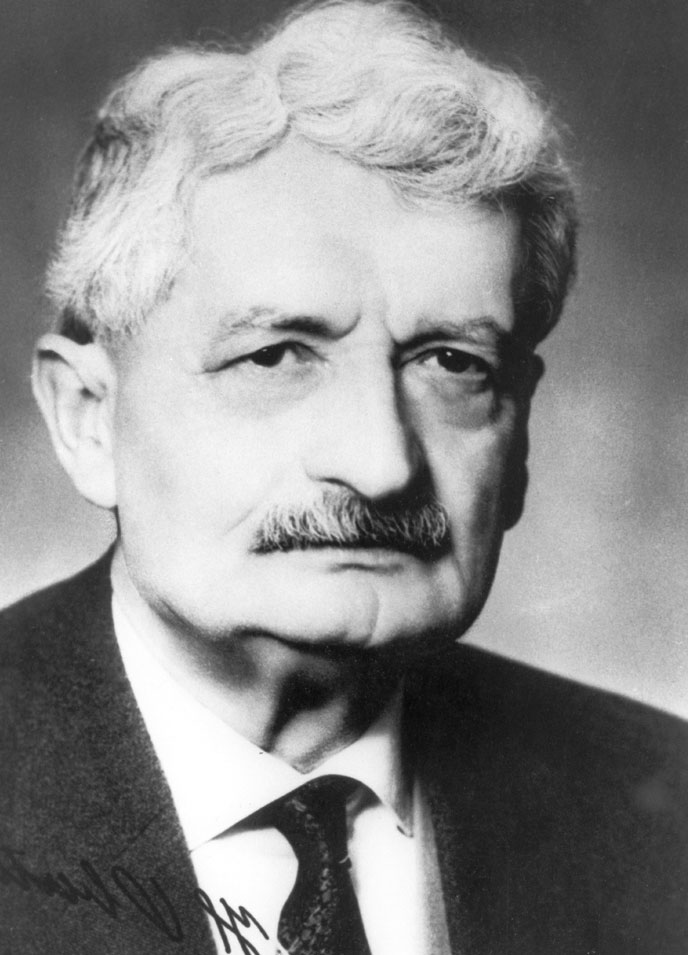
He attended secondary education in Sighişoara (graduated in 1912) and during this time he concentrated on various inventions and the study of the cosmic flight. From 1913 Hermann Oberth began studying medicine at the University of Munich, and during the First World War he was a military doctor. After the war, Oberth gave up medicine and focused on the study of physics, mathematics and astronomy at the University of Cluj, Munich, Göttingen and Heidelberg.
In 1922 he concluded his diploma thesis at the University of Heidelberg on rocket theory, but it was rejected. A year later, on 18 May 1923, he submitted the same work entitled Rocket to Interplanetary Spaces (coordinated by professor Augustin Maior) to the University of Cluj. The defense was met with success, and Hermann Oberth received the title of physics professor. With the support of Augustin Maior, Oberth was named member of the Society of Sciences of Cluj. The Rocket to Interplanetary Spaces was published in Munich the same year.
He was a teacher in Sighișoara between 1922-1924, then in Mediaș (1925-1938), where he taught physics, mathematics and chemistry at the ‘Stephan Ludwig Roth’ high school. In 1930, following a meeting with King Carol II, Hermann Oberth received approval to experiment in the workshops of the Aviation Military School in Mediaş, and started to build functional prototypes of liquid propellant rockets. During this period he held conferences in almost all the cities of Transylvania, then in Bucharest and abroad (Hungary, Germany, etc.).
Between 1928 and 1930, he worked in Berlin as a scientific consultant for the film Woman in the Moon by director Fritz Lang (first screening on an astronautics-related topic).
From 1938 on, he carried out technical activities at the Polytechnic institutes in Vienna (1938-1939) and Dresden (1940-1941). Between 1941-1944 he worked at the experimental resort at Peenemünde. Towards the end of the war (1943-1945), the scientist Hermann Oberth moved to the WASAG complex, where he built solid-propellant rockets for air defence.
Between 1948-1950, he worked as an independent consulting engineer and writer in Switzerland. In the following period (1950-1953) he worked in Italy because he had been asked by the Italian navy to build a solid-propellant rocket. Between 1953-1955 he carried out research at Feucht, and in the following years he was a scientific adviser at Redstone Arsenal in Huntsville, Alabama, USA. For three years (1958-1961), he returned to Feucht, conducting scientific activities and being involved in numerous conference tours in Austria and Germany. At the beginning of the seventh decade of the twentieth century, Hermann Oberth returned to the USA, this time as a consulting engineer at a San Diego firm.
In 1962 he retired permanently. He continued to write and work at his home in Feucht, near Nuremberg. At the same time, he supported over 300 conferences on cosmic flight related topics in Austria and the Federal Republic of Germany. Along with C. E. Ţilokovski and R. Goddard, Hermann Oberth was considered a pioneer of cosmic flights.
Oberth's name is connected with the design of the first long-distance ballistic missiles in the world (1942). In 1947, he designed a three-stage rocket plan for space exploration and sketched designs of space shuttles propelled by solar-powered electricity. He registered invention 26 “Rapid Combustion Process and Device” (“The Oberth Effect”, 1931) with the Romanian Office for Inventions and Trademarks, and in the same year was launched the first liquid-propellant rocket, built according to his design. He founded the construction and use of rocket engines in astronautics and military technology, being considered a founder of astronautics.
The results of his research can be found in a series of works: The Ways of Space Navigation (1929); From fireworks rocket to spaceship. Fields of rocket application (1929); Rocket Flight and Vacuum Flight (1932); Of multi-layered rocket optimization (1949); Orbital spaces (1952); Menschen in Weltraum (1954, translated into English, French, Italian, Japanese, Dutch, Spanish and Croatian); Cosmic Mirror (1978) and others.
He was a member of over 30 scientific and astronautics societies, receiving numerous scientific awards for his long-standing activity. He was also an honorary member of the Space Exploration League in Breslau (Wroclaw), the British Interplanetary Society, the American Society for Radiotechnics, the German Academy of Sciences, and honorary president of the Space Exploration Society in Stuttgart.
For his contributions to the study of cosmic space, but also for his connections to the Transylvanian academic environment, Babeş-Bolyai University of Cluj-Napoca awarded him the title of Doctor Honoris Causa in June 1972. In 1974, he was honored with the First Class Scientific Merit Order.
He was buried in the Feucht New Cemetery.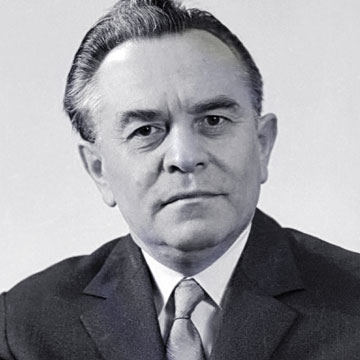
ŞTEFAN PASCU
Istoric cu o remarcabilă activitate în domeniul istoriei medii şi moderne a României, precum şi în cel al editării izvoarelor. Membru corespondent (21 martie 1963) şi titular (1 martie 1974) al Academiei Române. Preşedinte al Secţiei de Ştiinţe Istorice a Academiei Române (1974-1990). Rector al Universităţii "Babeş-Bolyai" (1968-1976). Preşedinte al Filialei Cluj a Academiei Române (1995-1998). Directorul Institutului de Istorie şi Arheologie din Cluj-Napoca (1973-1990).
ŞTEFAN PASCU
(n. 14 octombrie 1914, Apahida, jud. Cluj – d. 2 noiembrie 1998, Cluj-Napoca)
Istoric cu o remarcabilă activitate în domeniul istoriei medii şi moderne a României, precum şi în cel al editării izvoarelor. Membru corespondent (21 martie 1963) şi titular (1 martie 1974) al Academiei Române. Preşedinte al Secţiei de Ştiinţe Istorice a Academiei Române (1974-1990). Rector al Universităţii "Babeş-Bolyai" (1968-1976). Preşedinte al Filialei Cluj a Academiei Române (1995-1998). Directorul Institutului de Istorie şi Arheologie din Cluj-Napoca (1973-1990).
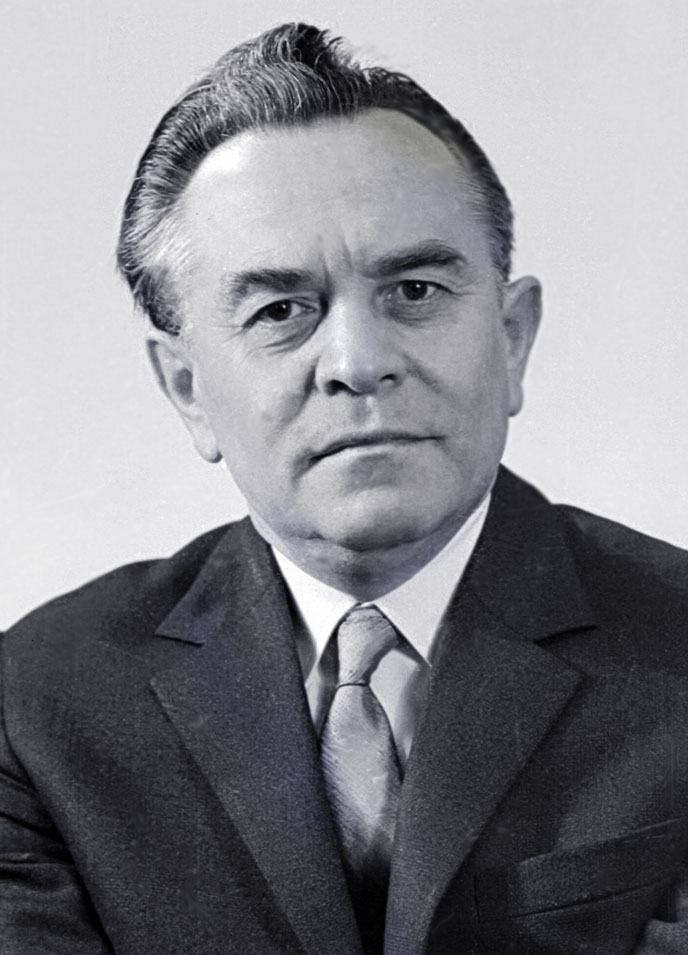
Ștefan Pascu a făcut studii secundare şi superioare – Facultatea de Litere şi Filosofie (1934-1938) – la Cluj. Între 1939-1942 a fost bursier al Şcolii Române din Roma, iar în 1942 a devenit laureat al Şcolii de Paleografie, Diplomatică şi Arhivistică de la Vatican. În 1942 a obţinut titlul de doctor în istorie şi filosofie (doctor docent din 1963) cu o teză intitulată Petru Cercel şi Ţara Românească la sfârşitul secolului al XVI-lea.
A fost asistent (1943), conferenţiar (1948-1962), profesor (din 1962) la Catedra de istorie medie a României, la Facultatea de Istorie a Universităţii „Babeş-Bolyai” din Cluj şi decan al acestei facultăţi (1962-1968). În paralel, a fost cercetător, director adjunct şi director (din 1973) al Institutului de Istorie şi Arheologie din Cluj.
Ștefan Pascu este autor a numeroase cărţi, studii, articole, comunicări, prelegeri, manuale privitoare la diverse aspecte ale istoriei medii şi moderne a României (perioada feudalismului timpuriu, mişcările ţărăneşti, proprietăţile feudale şi vechile instituţii româneşti). Între lucrările cele mai importante amintim: Istoria Transilvaniei, 1944; Răscoalele ţărăneşti în Transilvania, 1947; Meşteşugurile în Transilvania până în sec. XVI, 1954; Bobâlna, 1963; Formarea naţiunii române, 1967; Voievodatul Transilvaniei (4 vol.), 1972-1987; Formarea statului unitar român (2 vol.), 1983; Revoluţia lui Horea, 1984 ş.a.
A fost şi autorul unor lucrări referitoare la instituţii de cultură din România (Istoricul Academiei Române. 125 de ani de la înfiinţare, 1992) şi coautor al unor lucrări de sinteză: Istoria României; Compendiu la Istoria României; Din istoria medie a României; Din istoria Transilvaniei; Bibliografia istorică a României (5 vol.); Populaţie şi societate; Atlas Istoric al României ş.a.A acordat atenţie editării de documente (Documente privind istoria României. C. Transilvania; Documenta Romaniae Historica. C. Transilvania; Documente privitoare la Revoluţia de la 1848 din Transilvania; Izvoarele Răscoalei lui Horea), a unor volume de corespondenţă (Timotei Cipariu, Corespondenţă primită; George Bariţ şi contemporanii săi, 7 vol.) şi a unor ediţii critice (Al. Papiu-Ilarian, Istoria românilor din Dacia Superioară; G. Bariţ, Părţi alese din istoria Transilvaniei) ş.a.
A lăsat lucrări despre viaţa şi activitatea unor personalităţi ale istoriei românilor: Petru Cercel şi Ţara Românească la sfârşitul sec. XVI (1944); Avram Iancu. Un erou şi un martir (1972) ş.a.
A fost preşedinte al Societăţii de Ştiinţe Istorice din România, iar din 1980 până în 1994 şi preşedinte al Comitetului Naţional al Istoricilor din România. De asemenea, a fost membru al Academiei Portugheze de Ştiinţe Istorice, al Universităţii Columbus (SUA), al Academiei de Litere şi Arte Moderne din Roma, al Academiei Medicea din Detroit, al Comisiei Internaţionale de Demografie Istorică.
Profesor universitar emerit, om de ştiinţă emerit a fost distins cu Premiul Academiei în 1947 şi 1956 şi cu premiul I al Ministerului Educaţiei şi Învăţământului în 1944 şi 1961.
A fost înmormântat în Cimitirul Central (Hajongard) din Cluj-Napoca.
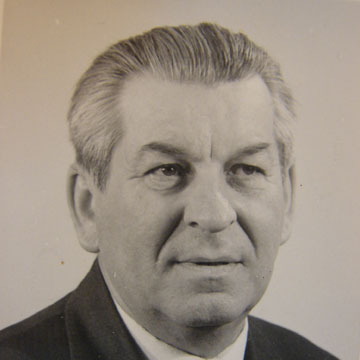
ŞTEFAN PÉTERFI
Botanist, biochimist, fitofiziolog, algolog de naţionalitate maghiară. Membru corespondent (2 iulie 1955) şi membru titular (21 martie 1963) al Academiei Române; vicepreşedinte al Academiei Române (1 martie 1974-6 mai 1978). Creatorul şcolii româneşti de algologie. Profesor la Catedra de Anatomia şi Fiziologia Plantelor la Universitatea din Cluj (1943-1976). Decan al Facultăţii de biologie-geografie (1946-1948) şi prorector al Universităţii ,,Babeş-Bolyai" (1946-1948; 1959-1976).
ŞTEFAN PÉTERFI
(n. 8 martie 1906, Deva – d. 6 mai 1978, Mexico City, Mexic, înhumat în ţară)
Botanist, biochimist, fitofiziolog, algolog de naţionalitate maghiară. Membru corespondent (2 iulie 1955) şi membru titular (21 martie 1963) al Academiei Române; vicepreşedinte al Academiei Române (1 martie 1974-6 mai 1978). Creatorul şcolii româneşti de algologie. Profesor la Catedra de Anatomia şi Fiziologia Plantelor la Universitatea din Cluj (1943-1976). Decan al Facultăţii de biologie-geografie (1946-1948) şi prorector al Universităţii ,,Babeş-Bolyai" (1946-1948; 1959-1976).
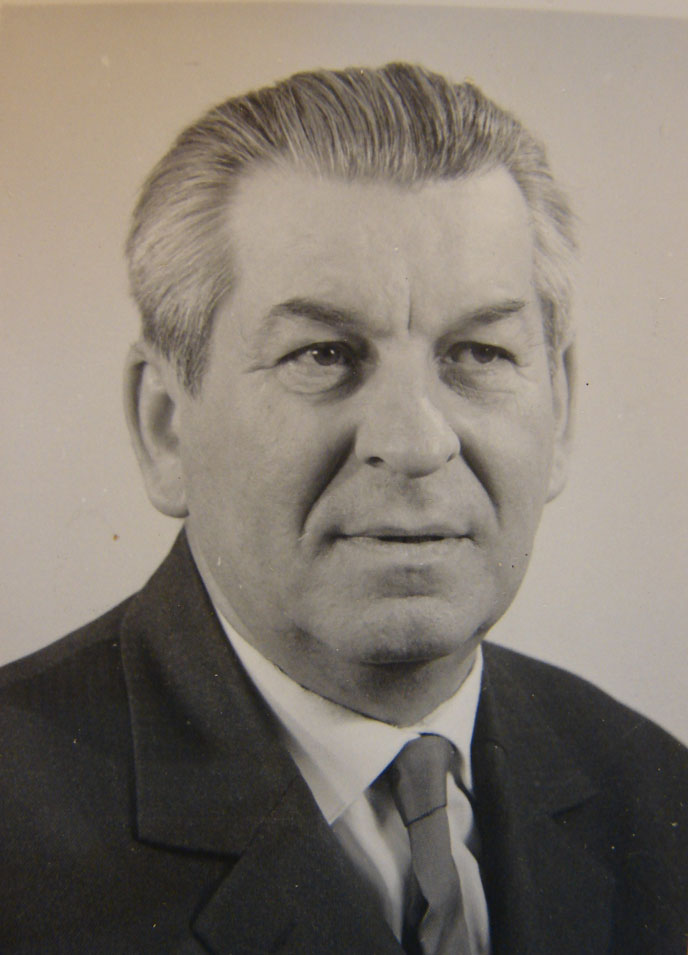
Ștefan Péterfi a făcut studii liceale (1921-1929) şi universitare (Facultatea de Ştiinţe, Secţia Ştiinţele Naturii, 1929-1933) la Cluj, unde, în 1937, şi-a susţinut şi teza de doctorat în ştiinţe biologice, în specialitatea morfologia şi fiziologia plantelor. Lucrarea sa de doctorat s-a intitulat Contribuţiuni la morfologia şi fiziologia algei verzi Microthamnion Küntzingianum Naeg. Planctonul de apă dulce.
A fost preparator (1929-1935), asistent (1936-1941), şef de lucrări (1941-1943), apoi profesor la Catedra de anatomia şi fiziologia plantelor la Facultatea de Ştiinţe a Universităţii din Cluj (1943-1976), ţinând cursuri de fiziologia plantelor şi genetică, dar şi cursuri speciale de algologie, dezvoltarea plantelor şi fotosinteză.
Paralel cu activitatea didactică, a desfăşurat o intensă muncă de cercetare ştiinţifică, consacrându-se, în special, studiului algelor. A descoperit şi prezentat specii şi genuri noi, printre care Chlorophaeoclonium și Euglena Sphagnicola, şi a cercetat influenţa sărurilor minerale şi a diferitelor substanţe asupra creşterii şi dezvoltării unor specii de alge. A urmărit să explice fiziologic şi biochimic diferenţa dintre creşterea şi dezvoltarea plantelor cu flori (Manual de fiziologia plantelor, 1957; Fiziologia plantelor, 1972). S-a preocupat intens de fiziologia plantelor superioare, de creşterea şi nutriţia acestora, lucrările sale în domeniu devenind opere de referinţă.
Rezultatele cercetărilor sale se regăsesc într-un mare număr de lucrări precum: Contribution à l'étude des algues vertes en Roumanie (1932); Elemente de fiziologie vegetală (1937, în colab.); Cercetări morfologice şi biochimice în planta Physalis alkenkengi (1955); Flora algologică a unor lacuri din Câmpia Transilvaniei (1960); Despre flora şi vegetaţia algologică a Munţilor Retezat (1963, în colab.); Pomologia Republicii Populare Române (vol. III, 1964, în colab.); Nutriţia plantelor (1969); Algele. Biologia şi utilizarea lor (1977) ş.a. A fost redactor şi coautor la primul Tratat de algologie, vol. 1-4 (1976-1981) din România. A fost membru în colectivele de redacţie ale mai multor reviste academice şi, mulţi ani la rând, redactor-şef adjunct al revistei „Studia Universitatis Babeş-Bolyai”.
S-a aplecat şi asupra biografiei unor savanţi (Emil Pop, Emanoil C. Teodorescu). A coordonat Filiala Cluj a Comisiei Monumentelor Naturii. A fost membru în consiliile naţionale pentru I.B.S., U.N.E.S.C.O., I.U.B.S., membru al Societăţii Internaţionale de Ficologie şi al Societăţii Scandinave de Fiziologia Plantelor şi al altor societăţi ştiinţifice. Ştefan Péterfi a deţinut şi funcţii publice importante: vicepreşedinte al Consiliului Naţional al Cercetării Ştiinţifice şi vicepreşedinte al Consiliului de Stat (1967-1978).
A fost distins cu premiul „Emil Racoviţă” (1956) şi cu Premiul Ministerului Educaţiei şi Învăţământului clasa I (1972).
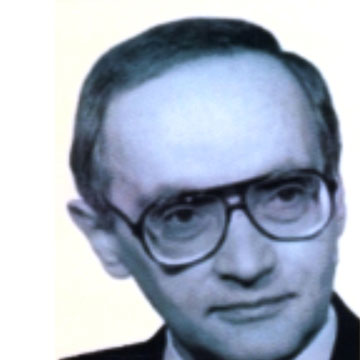
LIVIU PETRESCU
Literary critic and theorist, professor of comparative literature at Babeş-Bolyai University between 1964-1999.
LIVIU PETRESCU
(born 17 December 1941, Râmnicu Sărat – died 5 July 1999, Cluj-Napoca)
Literary critic and theorist, professor of comparative literature at Babeş-Bolyai University between 1964-1999.
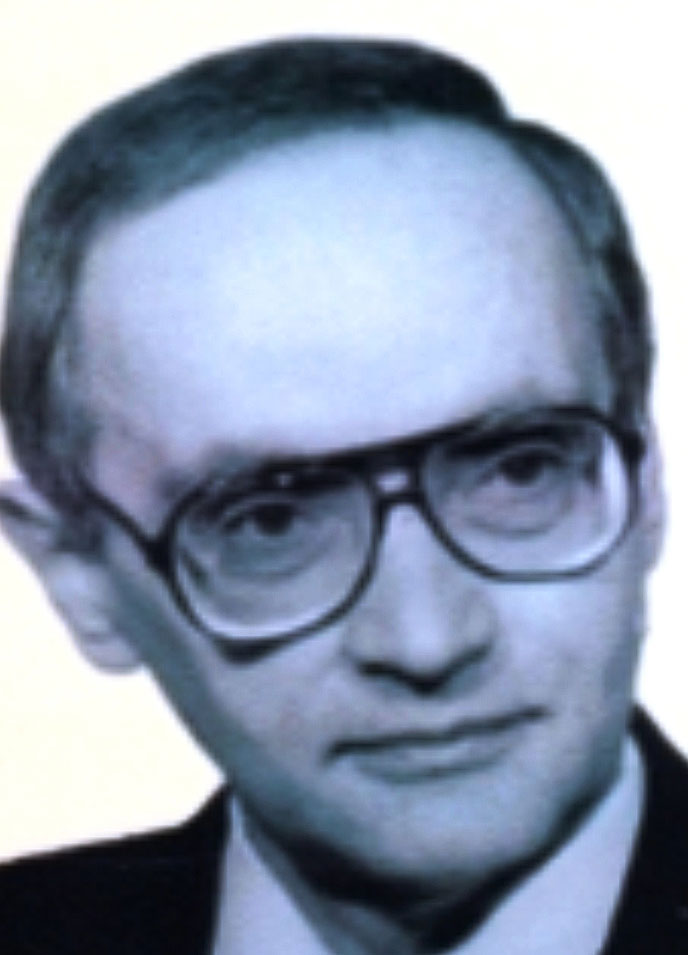
After graduating the “Gh. Bariţiu” high school in Cluj (1959), Liviu Petrescu attended the courses of the Faculty of Philology of Babeş-Bolyai University, in the department of Romanian language and literature, which he graduated in 1964. In 1977 he obtained the title of doctor with a thesis entitled The Human Condition Novel, published two years later. He spent time abroad for research: Oxford (1966), Oslo (1971) and Los Angeles University (1981-1983).
Immediately after completing his studies, he was employed as an assistant in the Department of Romanian literature, comparative literature and theory of literature, becoming a teaching assistant in 1967, and in 1977 assistant professor. In 1990 he was promoted to the rank of professor. Together with Ioana Em. Petrescu, he guided the students' activity within the Centre of Criticism and Literary Theory, of equal importance to other similar establishments in the other faculties in the country. In 1990 he was elected dean of the Faculty of Letters, a position he held until 1992.
Liviu Petrescu subsequently held other leading positions. Thus, he was director of the Romanian Cultural Center in New York (1992-1993), founder and director of the Lucian Blaga Cultural Society (1994-1999) and director of the Sextil Puşcariu Institute of Linguistics and Literary History of the Romanian Academy beginning 1 October 1998.
The list of his publications in volume includes the following titles: Reality and Romanian (1969), Dostoyevsky (1971), Romanian and Foreign Writers (1973), Ages of the Novel (1972), Poetics of Postmodernism (1996) and Transylvanian Studies (1997). Liviu Petrescu was also an active presence in the literary press publishing hundreds of chronicles, articles and essays in various publications in Cluj and in the country such as Tribuna, Steaua, Viața românească, Synthesis, Cahiers roumaines d'études littéraires. As suggested by the titles of his books, his literary preoccupations set out from applied analysis and reached wide theoretical debates. He was interested in the Romanian and European novel of the 19th and 20th centuries, especially in the introspective novel. The period he spent in the USA allowed him direct access to the study of a literally controversial concept, namely postmodernism, on which he later undertook his own synthetic analysis.
At the same time, however, he focused his critical expertise away from the universal literature to the local literature and focused on the Romanian novel in Transylvania, planning to draw some of the features that convey its individuality in the Romanian culture as a whole. His critical discourse, which combines literary history and theory with a comparative perspective, informed by philosophical and aesthetics readings, was noted for its austere character, clear articulations and detached position in relation to the analyzed subject. Critic Laurenţiu Ulici has concisely defined this style: “The sober, didactic, impersonal and nonsubjective diction is a perfect way of transmitting content that is full of ideas of theorems and analyses, which we traditionally call the academic style in criticism.” Liviu Petrescu is considered to belong to the academic tradition whose representatives include Dimitrie Popovici and Tudor Vianu.
His work as a literary critic brought him the following prizes: the prize of the Writers Association in Cluj (1969), the prize of the Romanian Writers Union (1979, 1992) and the Titu Maiorescu award of the Romanian Academy (1992).
He was buried in the (Hajongard) Central Cemetery in Cluj.
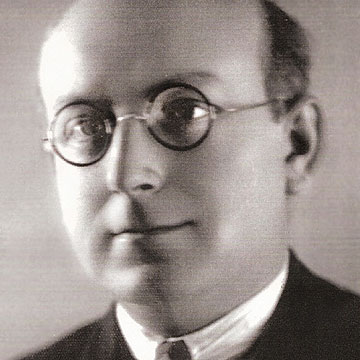
EMIL PETROVICI
Slavic philologist, linguist and folklorist, professor at the University of Cluj between 1926-1956, rector of the University of Cluj between 1945-1951, member of the Romanian Academy (from 1945).
EMIL PETROVICI
(born 4 January 1899, Toracul Mic, Serbia – died 7 October 1968, Crăciunelu de Jos, near Blaj)
Slavic philologist, linguist and folklorist, professor at the University of Cluj between 1926-1956, rector of the University of Cluj between 1945-1951, member of the Romanian Academy (from 1945).
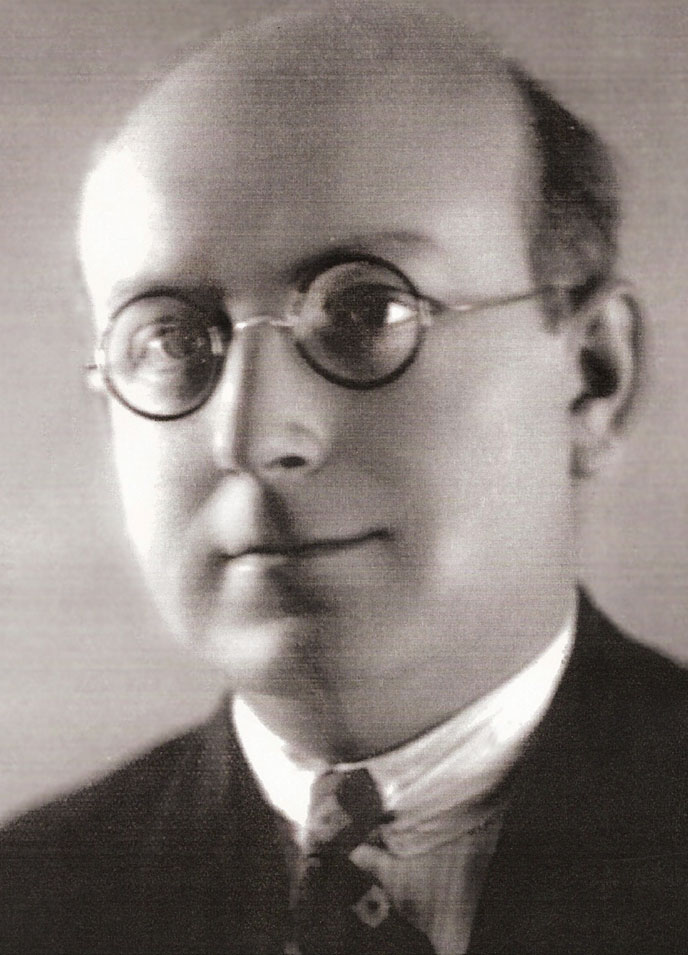
Following high school studies in Braşov, Oradea and Arad, Emil Petrovici attended the Faculty of Letters and Philosophy of the University of Cluj from 1919 to 1920 and continued his studies with a scholarship in Paris from 1920 to 1926 in several university centers: Sorbonne, École de Langues Orientales Vivantes, École Pratique des Hautes Études and Collège de France. In 1926 he obtained his bachelor’s degree in letters at the Sorbonne. In 1930 he became a doctor of philology with a thesis titled De la nasalité en roumain, which he defended at the University of Cluj where Sextil Puşcariu was his coordinator. Between 1930 and 1931 he underwent further specialization at the University of Sofia.
In 1926 he was employed as a teaching assistant in the Experimental Phonetics Laboratory of the Romanian Language Museum in Cluj, whose director he was appointed in 1931. From 1931 to 1935 he was a substitute professor in the Slavic Department of the University of Cluj, and in 1935 became a tenured professor. In 1956 he transferred to the University of Bucharest, where he founded the Department of Slavic Languages, whose head he was between 1956-1958.
Emil Petrovici was rector of the University of Cluj between 1945-1951, at a time of radical changes, both with regard to the political situation in the country, and to the level of organization of the educational system, which was substantially altered as a result of the 1948 reform. During his tenure in 1948, the University of Cluj was named Victor Babeş University.
His scientific research included a wide range of fields: dialectology, phonetics, history of Romanian language, toponymy, Slavonic, romance studies, balkanology and folklore. Emil Petrovici made a fundamental contribution to the realization of the Romanian linguistic atlas initiated by Sextil Puşcariu, coordinating the publication of 7 volumes of textual maps, 4 volumes of maps in colour and a supplement of dialectal texts. He wrote the first extensive work on Slavic-Romanian dialectology - Language of the Krashovani. Southern Slavic Dialectology Study (1935). Abiding by the principles of the phonological school of Prague, he developed his own theory on the phonological structure of the Romanian language in the Phonemic System of the Romanian Language (1956). There are also many other works published in various specialty journals. He was the founder and editor of the journals Linguistic Research (1956) and Romanoslavica (1963) journals.
Emil Petrovici was a member of several associations in the country and abroad. On 22 May 1945 he became a corresponding member of the Romanian Academy, and on 12 August 1948 he became a full member. In 1949 he became president of the Cluj Branch of the Romanian Academy, and from 1966-1968 he was head of the Philology Sciences Department of the same institution. He was the director of the Institute of Linguistics and Literary History in Cluj, as well as a founding member and president of the Slavic Association of Romania (1956-1968). Between 1956 and 1957 he was rector of the Maxim Gorki Institute in Bucharest. Internationally, he was a corresponding member of the Bulgarian Academy of Sciences and a member of the International Committee of Slavists (from 1955).For his scientific work, Emil Petrovici received many distinctions, including the title of Emeritus Scientist and State Prize (1953, 1963). His contributions in the field of Slavic studies brought him the Bulgarian distinction ‘The Cyril and Methodius Order’ and the Golden Plaque of Josef Dobrovský from of the Academy of Sciences in Czechoslovakia.
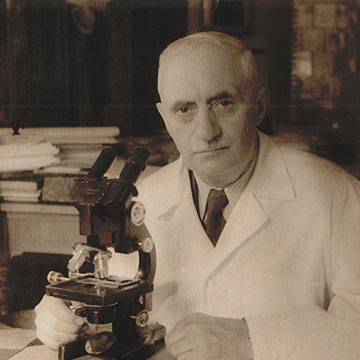
EMIL POP
Professor of botany at the University of Cluj between 1920-1967. Member of the Romanian Academy (from 1955).
EMIL POP
(born 13 April 1897, Bucerdea Vinoasă, Alba county – died 14 July 1974, Cluj)
Professor of botany at the University of Cluj between 1920-1967. Member of the Romanian Academy (from 1955).
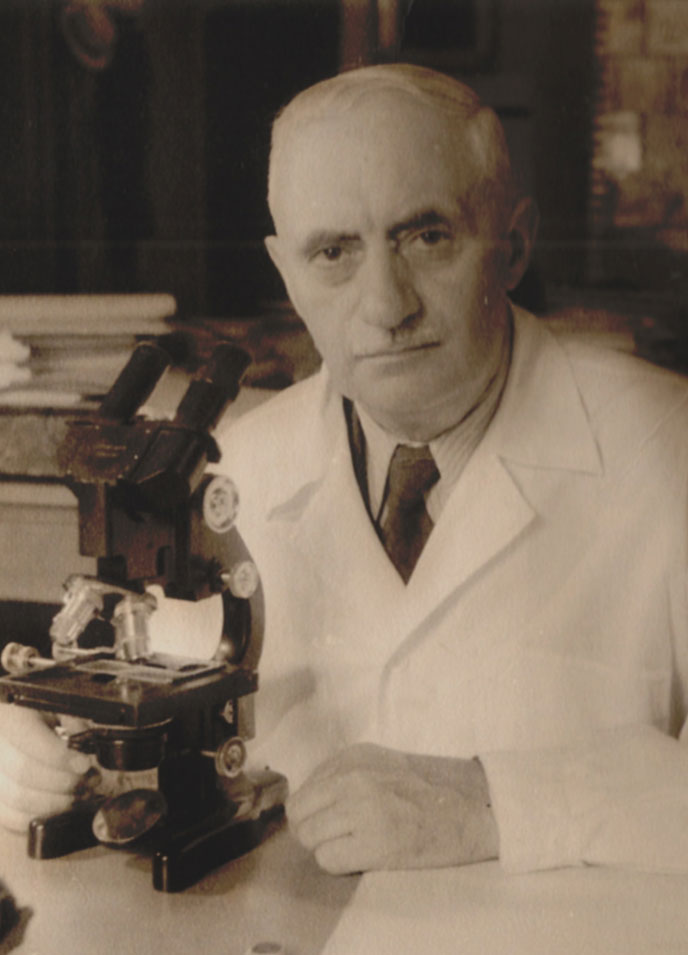
After completing secondary education in Alba Iulia and Brașov in 1915, he attended the Theological Seminary of Sibiu and the Faculty of Sciences of the University of Budapest (1918) and then the University of Cluj (1919-1922). In 1928 he was awarded the title of Doctor of Science with the paper Pollen Analyses in the Peat of the Oriental Carpathians (Dorna-Lucina), coordinated by Professor Alexandru Borza, a paper which was proposed by professor Emil Racoviță without any reserve for the Gheorghe Lazăr Award of the Romanian Academy, which he was granted in 1929. In 1932 he was granted the docent academic title.
On 1 November 1920 he was employed as a graduate assistant at the Botanical Institute of Cluj, following all stages of the university hierarchy: assistant (since 1922), lecturer (since 1926), docent, associate professor (1938), and then professor (1939-1967) at the Department of Plant Anatomy and Physiology at the University of Cluj.
During 1928-1930, when professor Alexandru Borza served as head of the Ministry of Education and Religious Affairs, Emil Pop took over from him the systematic botanical course and the management of the Botanical Garden. Between 1920-1948 Emil Pop, together with Professor Borza, drafted the first Romanian botanical bibliography published in the Botanical Garden of Cluj Bulletin. In 1931-1932 he held at the Faculty of Sciences in Cluj the first course of geobotany in the country. His preoccupations for the renewal of the university curriculum materialized also in publishing course handbooks, such as the Plants Physiology Manual (2 vol., 1957-1960, multiple authors). On 25 May 1967, Emil Pop completed his university teaching career at the Department of Plant Physiology at the Faculty of Biology in Cluj, and on this occasion he held his final course titled “The Evolution of Biological Sciences with a Focus on Molecular Biology”.
His research in the field of plant biology was very diverse, including: plant teratology, plant anatomy, history of Romania vegetation, evolution of the vegetation in the Carpathians in the post-glacial era, where he identified the so-called “phase of hornbeams,” etc. He is considered the founder of the Romanian school of palynology and one of the most important phyto-geographers. His activity also leaned towards the conservation of vegetation in Romania, many nature reserves in the country being founded upon his initiative. A relevant work in this respect is Monuments of Nature in Romania (1965). His research focused considerably on the study of forest ecosystems in Romania, as showcased by several publications on this topic: Our forests and our national destiny; New perspectives in research and nature protection; The forest in the action of nature and landscape protection; Praising the Carpathians.
It is estimated that the number of his works in the field of biology is over one hundred. Many of them were published in the specialized journals of the Romanian Academy, in the “Studia” journal of the Babeș-Bolyai University or in the Cluj Botanical Garden journal - “Botanical Contributions”. From 1958 he was editor of the “Biology Studies and Research” journal, published in Cluj. He also published in prestigious foreign journals such as: “Protoplasma” (Vienna), “Flora” (Jena), “Zeitschrift für Pflanzenphysiologie” (Stuttgart), “Physiologia plantarum” (Sweden), and others. Besides these contributions, he also sent on several occasions abstracts from various Romanian periodicals to the “Biological Abstracts” journal in Washington.
Besides studies showcasing his research and works of synthesis and popularization of biology, Emil Pop drafted a series of monographs dedicated to Romanian personalities in the field of natural sciences: Şt. Emilian, Ioan Popp, Ştefan Micle, Pavel Vasici. Also, in Portraits of Romanian Botanists (1967), he wrote portraits of other prominent scholars. Throughout his career, Professor Pop participated in numerous international conferences and lectured at universities abroad as visiting professor.
In 1958 he founded the Centre for Biological Research in Cluj, which he led until 1970. He became a tenured member of the Romanian Academy on 2 July 1955 and was president of the Biological Sciences Section (1963-1974). He was chairman of the Cluj Subcommittee for Natural Monuments. He was also a member of the Romanian Committee for History and Philosophy of Science, and internationally a member of the Academy of Sciences of Budapest, of the Leopoldina Academy in Halle, of the International Academy of the History of Science in Paris, of the International Association for Quaternary Research, of the International Association for the Study of Peat and Bog, of the Vanamo Botanical and Zoological Society in Finland and the Botanical Society of Leningrad.
For his work he was awarded the following distinctions: the First Class Order (1957), the First Class Scientific Merit Order, the Emeritus Scientist (1964).
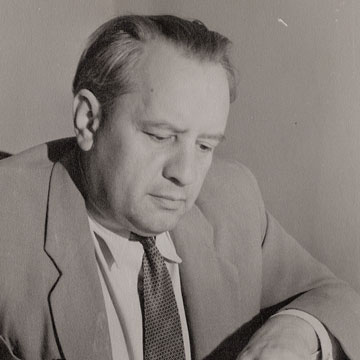
TIBERIU I. POPOVICIU
Professor of mathematics at the University of Cluj, 1933-1936, 1946-1975, member of the Romanian Academy.
TIBERIU I. POPOVICIU
(born 16 February 1906 in Arad – died 29 October 1975 in Cluj-Napoca)
Professor of mathematics at the University of Cluj, 1933-1936, 1946-1975, member of the Romanian Academy.
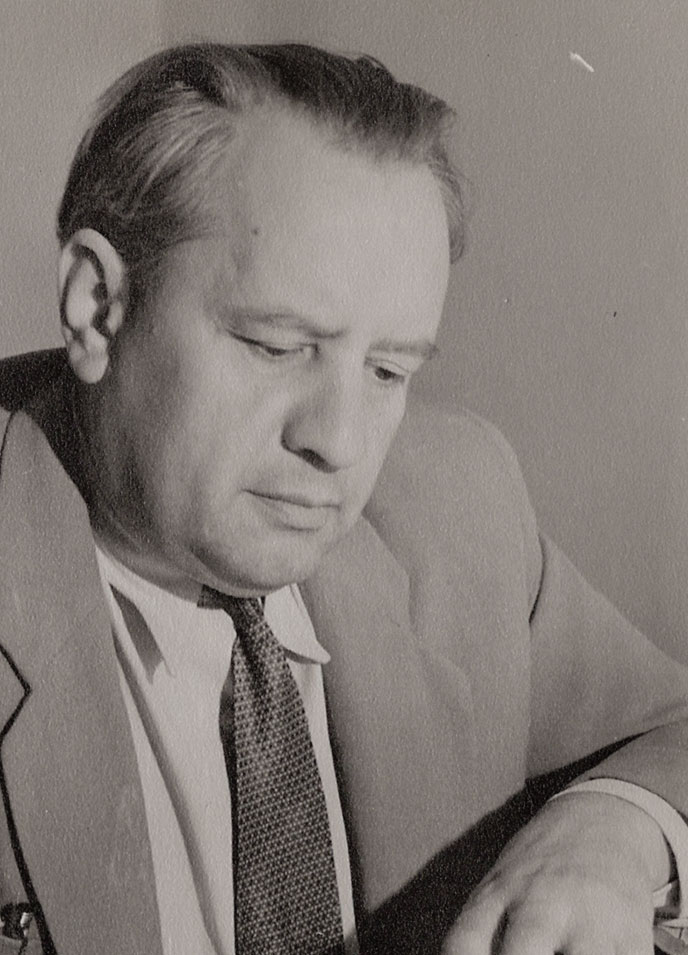
Following primary and high school education in Arad, where he took his baccalaureate in 1924, Tiberiu Popoviciu attended the Faculty of Sciences of the University of Bucharest, which he graduated in 1927. Between 1927-1933 he was a student of the Upper Normal School In Paris, where he obtained a second degree in mathematics (1928) and where he also defended his PhD thesis entitled Sur quelques propriétés des fonctions d'une ou deux variables réelles (1933). In 1933 he started working at the Faculty of Sciences of the University of Cluj; for one year he was secretary of the Mathematics Seminar affiliated to the Faculty of Sciences, and then he worked as assistant of the Seminar between 1934-1936. After a period of ten years of moving between the University of Chernivtsi (1936-1940), the University of Bucharest (1940-1942), and the University of Iași (1942-1946), Tiberiu Popoviciu returned to Cluj as a tenured professor of advanced algebra and number theory at the Faculty of Mathematics and Physics, where he remained from 1946 to 1975. In 1947 he set up the Numerical Analysis and Approximation Theory Seminar at the University of Cluj. During his teaching period he also took on administrative responsibilities: he was the head of the Mathematical Analysis Department in 1948 and the Dean of the Faculty of Mathematics and Physics of ‘Victor Babeș’ University (1950-1953).
He is considered the creator of the Romanian school of numerical analysis and the founder of the school of mathematical analysis of Cluj. He had a significant scientific contribution in the following fields: mathematical analysis, numerical analysis, functional analysis, algebra, number theory and approximation theory. In the course of studies on functional equations, he introduced such an equation (1938) which today bears his name. The list of his studies includes: On the best approximation of continuous functions by polynomials (1938); Les fonctions convexes (1944); Delimitation of calculation errors in polynomial interpolation and numerical differentiation and integration applications (1965); Numerical Analysis (1975). He led the “Mathematica” Journal in Cluj, whose publication was resumed in 1959 upon his initiative. Other journals that he coordinated were: “Mathematical Studies and Research” (of the Institute of Calculus of the Romanian Academy) and “Revue d'Analyse Numérique et la Théorie de l'Approximation,” founded in 1972.
On 2 November 1948 he became a correspondent member of the Romanian Academy, and on 21 March 1963 he became a tenured member. He was secretary of the Cluj subsidiary of the Academy (1948-1951), head of the Department of Mathematics (1951-1957) and, starting 1957, head of the Institute of Numerical Calculus in Cluj, where he created several specialized seminars. The Computing Machinery Department was established, where two computers were built: the first one - in 1957, called MARICA which operated on the basis of electromagnetic relays, the second one - in 1963, called DACICC-1, with transistors and ferrite-core memory. For this reason, Tiberiu Popoviciu is also considered the forerunner of the IT industry in Cluj. Abroad he was a member of the French Mathematical Society.
He was buried in the Cluj-Napoca Central Cemetery (Hajongard).
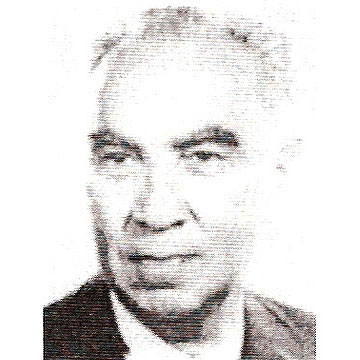
EUGEN A. PORA
Professor of animal physiology at the University of Cluj between 1946-1972. Member of the Romanian Academy (from 1948).
EUGEN A. PORA
(born 13 June 1909, Bunești, Brașov county – died 28 October 1981, Cluj)
Professor of animal physiology at the University of Cluj between 1946-1972. Member of the Romanian Academy (from 1948).
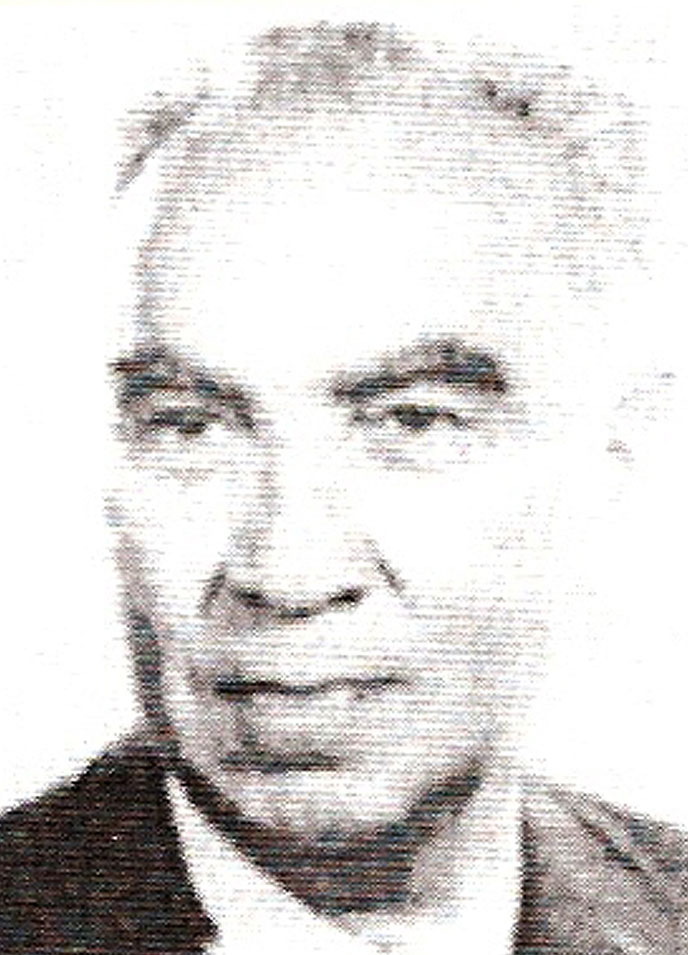
Graduate of Gh. Bariţiu high school in Cluj (1927), Eugen Pora attended the Faculty of Sciences, in the Natural Sciences Department of the University of Cluj, where he obtained his graduation degree in 1932. In the following years, he carried out several internships in France, at first in Paris (1934-1935) in the Department of Animal Physiology of Sorbonne and at the Institute of Oceanography, then at the Biological Station Cove in Roscoff (1935-1936). In 1938 he obtained the title of doctor with the thesis The Effects of Continuous Electrical Stimulation on branchial permeability of fish. Metabolism of minerals in the body.
In 1944 he started working in the Department of Animal Physiology at the University of Iași. In 1946 he was transferred to the equivalent department of the University of Cluj. Through a substantial donation of books and periodicals made in 1979, Eugen Pora made a considerable contribution to the development of the library collections on animal physiology of the University of Cluj.
As a zoologist, ecophysiologist and oceanographer, he has published more than 500 specialized works. During his research, he developed the following scientific concepts: ‘physiological species’, representing the stage preceding the emergence of morphological differentiation, "rhope" and "homeorhope", regarding ionic equilibrium of animals. He also introduced new methods of laboratory research. His teaching and research work includes: Animal physiology course, 4 vol. (1949-1950); Course of animal cytohistophysiology (1960, et al.); Limnology and Oceanography (1974, multiple authors); Pollution Physiology (1973); Man and Nature (1975); Monographie du chinchard de la Mer Noire (1979); Current Issues of Biology, Vol. I-III (1975-1978); Biology des eaux saumâtres de Mer Noire (1977, et al.). He contributed to the compilation of the Health Dictionary (1978). He was part of the editorial board of several journals: Studia Universitatis Babeş-Bolyai. Biology Series, Biology Studies and Research. Zoology Series, Marine Biology, etc. He published numerous articles in specialized journals in the country and abroad. All these are listed in the Memorandum of Titles and Works, published on the occasion of his 70th birthday (1979).
He became a corresponding member of the Romanian Academy on 1 November 1948, and on 21 March 1963 he became a full member. He was a member of the International Association of Limnology (1956), the Association of Physiologists (1957), the International Society of Chronobiology (1958), the International Society for the Study of Biorhythms, the European Society of Comparative Endocrinology, the European Society of Radiobiology (1967), the Academy of Sciences of New York, and he was vice-president (since 1968) and president (since 1970) of the Mediterranean Association of Marine Biology and Oceanography.
In 1964 he was awarded the title of Emeritus Scientist and in 1969 he became Professor Emeritus. In 1974 he received the title of Doctor Honoris Causa of the University of Lyon.
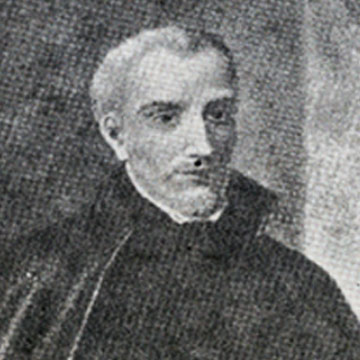
ANTONIO POSSEVINO, SJ
Catholic priest, member of the Jesuit Order, theologian, diplomat in the service of the Holy See, teacher, major figure of the Counter-Reformation. He played an important role in certain projects aimed at reinforcing the position of Catholics in Poland and Transylvania, namely the establishment of the Ruthenian Catholic Church.
ANTONIO POSSEVINO, SJ
(born 12 July 1533 in Mantua – died 26 February 1611 in Ferrara)
Catholic priest, member of the Jesuit Order, theologian, diplomat in the service of the Holy See, teacher, major figure of the Counter-Reformation. He played an important role in certain projects aimed at reinforcing the position of Catholics in Poland and Transylvania, namely the establishment of the Ruthenian Catholic Church.
In 1583 he organized from a teaching and administrative point of view the Pontifical and Royal Jesuit Seminary in Cluj, one of the institutions that laid the foundations of higher education in Transylvania.
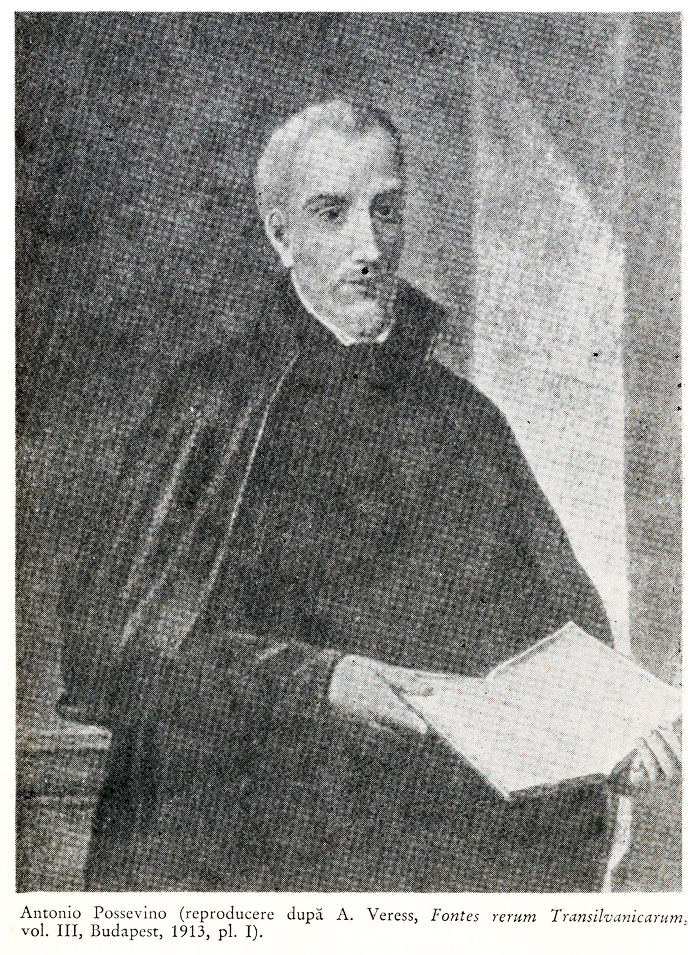
Antonio Possevino studied in Rome and Padua, then worked as the secretary to Cardinal Ercole Gonzaga and as a professor for his nephews. In 1559 he joined the Jesuit Order, and in 1561 he was ordained priest. From 1560 he worked as a diplomat and missionary in several European countries. He thus participated in missions to combat movements deemed to be heretical by the Catholic Church (Waldensians, Calvinists, Huguenots) in Piedmont, Savoy, France. Between 1573-1577 he was secretary to the provost of the Jesuit Order. Between 1578-1580 he participated twice in diplomatic missions in Sweden, as papal legate, and succeeded in converting King John III to Catholicism.
From 1580 he worked in Poland and Russia mediating the peace treaty between the two countries, during which he became the confidant of Stephen Báthory, King of Poland. After 1587, Possevino devoted himself to teaching, becoming a professor in the Jesuit colleges of Padua and Venice. In Padua he had among his disciples Francis de Sales, who later became one of the saints of the Jesuit Order. Throughout his life, Possevino has achieved several diplomatic missions of the Holy See.
In October 1581, Stephen Báthory spoke to Antonio Possevino for the first time about his intention to found a theological seminary of the Major Jesuit College in Cluj. Along with the Major Jesuit College the new seminar in Cluj was meant to revive Catholicism in Transylvania. The seminar was to be founded and funded equally by the Roman Curia and by Stephen Báthory. Funding from both sources would have made it possible for a large number of seminarians to study here.
On 13 February 1583 Stephen Báthory issued the diploma establishing the Pontifical and Royal Jesuit Seminary in Cluj. Antonio Possevino was entrusted with the realization of the seminary project. He developed the operating regulation and organised the teaching and administrative aspects of the educational institution. Possevino reached Cluj in early March 1583 and left in the autumn. During this period he went on a trip to Transylvania. The result of his trip was a detailed report dedicated to Pope Gregory XIII which contained in fact a description of the geographical, historical, ethnic, religious and political life of Transylvania, which was published only in 1913 by Andrei Veress, a historian from Cluj.
Antonio Possevino left behind polemical texts of theology based on his practical experience as a missionary and didactic papers. Among his works: Atheismi Lutheri, Melanchthonis, Calvini, Bezae et al. nostri temporis haereticorum, a book of theological polemics printed in Vilnius in 1586 and the paper Bibliotheca selecta, qua agitur de ratione studiorum in historia, in disciplinis, in salute omnia procuranda (published in Rome in 1593, in two volumes), used by generations of Jesuit teachers as an excellent textbook which provided a comprehensive and systematic knowledge.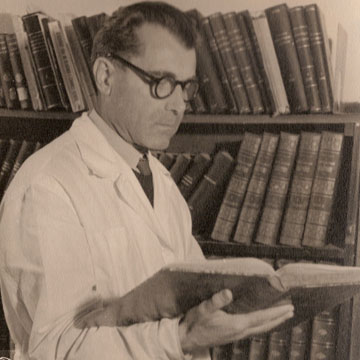
DAVID PRODAN
Historian, professor at the University of Cluj (1948-1962), member of the Romanian Academy.
DAVID PRODAN
(n. 13 martie 1902, Cioara, azi Săliște, jud. Alba – d. 26 iunie 1992, Cluj-Napoca)
Historian, professor at the University of Cluj (1948-1962), member of the Romanian Academy.
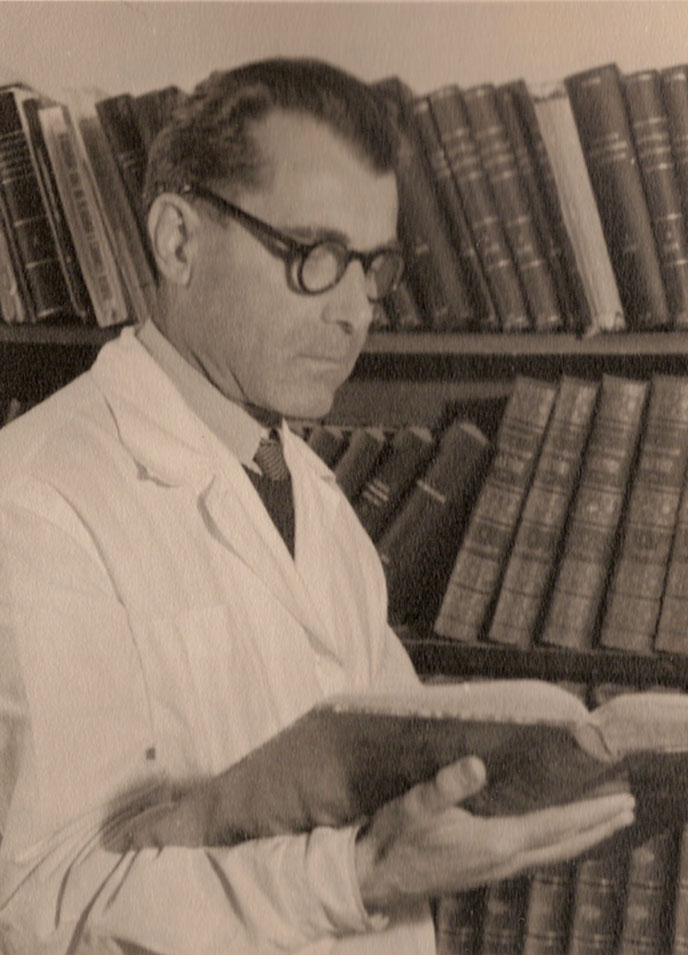
After graduating from primary and secondary school in Orăștie, David Prodan became a student at the Faculty of Letters and Philosophy of the Romanian University of Cluj, where he obtained his degree in history and archeology in 1924. He became doctor in history in 1938 with a thesis on The Uprising of Horea in the county of Cluj and Turda, a work that will later provide the basis of one of his most famous publications, with a similar title.
He began by working as an archivist at the State Archives of Cluj (1924-1937), then worked as a principal librarian (1938-1941) and chief librarian (1941-1948) at the University Central Library in Cluj. Between 1943-1948, David Prodan was a lecturer at the Cluj-Sibiu Institute of National History. As a teacher, he taught the Modern History of Romania at the Faculty of History and Geography of the University of Cluj between 1948-1962. He was also head of department at the Institute of History and Archeology of Cluj (1948-1972).
David Prodan was an acknowledged specialist in the country and abroad in the following fields of research: social structure in medieval Transylvania, serfdom, urban issue, Romanian emigration from Wallachia and Moldavia to Transylvania, the great peasant risings from 1784-1785, the political emancipation struggle of the Romanians from Transylvania.
Among his works: The uprising of Horea in the counties of Cluj and Turda (1938); Contemporary lyrics about the Uprising of Horea (1942); The Immigration Theory of the Romanians in the Romanian Principalities to Transylvania in the 18th Century (1944); Supplex Libellus Valachorum (1948, 1967, 1998); The serfdom in the Baia de Arieș area in 1770 (1948), Iron production on the Hunedoara domain in the 17th century (1960); Domain of the Șiria Citadel in 1525 (1960); Boyars and serfs in the Făgăraș County in the 16th-17th centuries. (1963); The judge of the serf village in Transylvania in the 17th-18th century (1963); The domain of Beiuș in 1600 (1964); The domain of Ciucea Citadel in 1553 (1966); The Serfdom in Transylvania in the 16th century (1967-1968); Urban Regular Settlement of Banat in 1780 (1969); Another Romanian Supplex Libellus 1804 (1970); The issue of serfdom in the Transylvanian Diet in 1790-1791 (1970); The Urban areas of Făgăraș County (1970, 1976); Supplex Libellus Valachorum or the Political Struggle of the Romanians in Transylvania during the 18th century (1971); The Uprising of Horea, Cloșca and Crişan 1784 (1983); The Uprising of Horea (1984); The Peasant Ultimatum addressed to the Nobility (1984), The Issue of Serfdom in Transylvania 1700-1848 (1989); From the history of Transylvania. Studies and Works (1991); Transylvania and Transylvania again. Historical considerations (1992, 1996, 2002); Memoires (1993).
Corresponding member (1948) and tenured member (1955) of the Romanian Academy. Between 1991-1992, David Prodan was honorary president of the Center for Transylvanian Studies in Cluj-Napoca.
He was buried in the Cluj-Napoca Central Cemetery (Hajongard)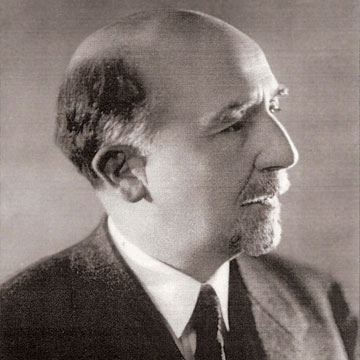
SEXTIL PUŞCARIU
Linguist, University Professor of Romanian Language and Literature in Cluj between 1919-1944, Rector of the Romanian University of Cluj (1919-1920, 1940-1941), member of the Romanian Academy.
SEXTIL PUŞCARIU
(born 4 January 1877 in Braşov – died May 5 1948 in Bran)
Linguist, University Professor of Romanian Language and Literature in Cluj between 1919-1944, Rector of the Romanian University of Cluj (1919-1920, 1940-1941), member of the Romanian Academy.
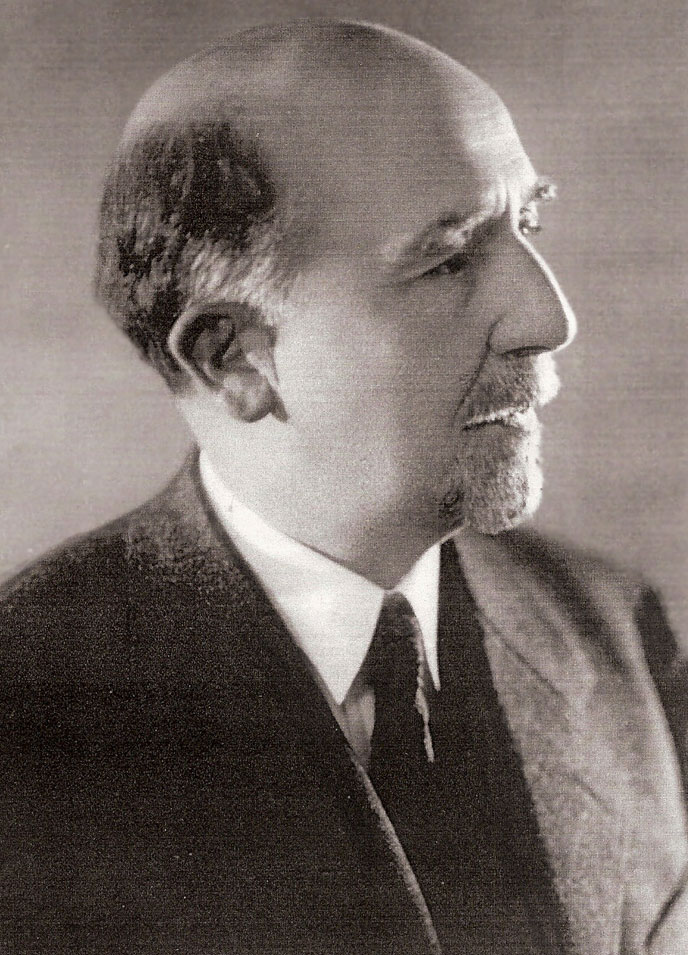
Sextil Puşcariu was born in a well-known family of Romanian intellectuals. His father, Iosif Pușcariu, was a renowned journalist, and his uncle Ioan knight of Pușcariu, a jurist and writer, was noted in the struggle for the rights of the Romanians in Transylvania, being one of the most important participants in the Blaj Assembly in May 1848.
After graduating from secondary education in his hometown, Sextil Puşcariu studied at the University of Leipzig between 1895-1899 and then he completed his doctorate in philosophy in Paris (1899-1901) and Vienna (1902-1904). On 17 August 1904 he started working as an associate professor of Roman philology at the University of Vienna, where he founded the first Romanian language seminary. In 1905 he became a correspondent member of the Romanian Academy and in 1906 he was commissioned to develop a Dictionary of Romanian Language. Between 1906 and 1918 he worked as a professor of Romanian language and literature at the University of Cernăuţi, and between 1914 and 1918 he was appointed Dean. On 19 May 1914 he became a tenured member of the Romanian Academy. In 1918 he was appointed Vice-President of the National Council in Bucovina and Secretary of State for Foreign Affairs.
After the union of Transylvania with Romania, Sextil Pușcariu was entrusted by the Ruling Council to coordinate the establishment of the Romanian University of Cluj. The Ruling Council ordered the establishment of the University Commission, whose role was to supervise the competition exams for the teaching positions. As chairman of this commission, Sextil Puşcariu presented the "Guidelines for recruitment of teachers at the University of Cluj". He was the first rector of the Cluj University (1919-1920), presiding over the official inaugurations of this new institution of higher education.
As professor of the University of Cluj he founded in 1919 the Museum of Romanian Language; he was also head of the museum and coordinated the editing of the museum’s bulletin, entitled "Dacoromania". Between 1922-1925 he was delegated to the League of Nations to work within the International Institute for Intellectual Cooperation.
During the Second World War he became rector of the University of Cluj (October 1940 - June 1941), coordinating the resuming of this institution’s activity as it relocated seeking refuge in Sibiu and Timișoara. From the summer of 1941 he was the head of the Romanian Institute in Berlin for several years. At the end of the Second World War he returned to Romania.
After the establishment of Communism he was repeatedly investigated for his activity from 1939-1945. He died on 5 May 1948, just days before the massive arrests of legionnaires and their sympathizers conducted by the Communists (May 14-15, 1948). He was buried in Braşov on 7 May in the Groaveri Cemetery, alongside other personalities whose memory is celebrated by the city.
Sextil Puşcariu was a correspondent member of the Academy of Sciences of Berlin, a member of the Romanic Committee of the German Academy in Munich, as well as of other scientific institutions in Germany. He was also a member of the Permanent International Committee of Linguists from 1936. Sextil Puşcariu was an active member of the literary section of Astra. He was also editor in chief of the Glasul Bucovinei magazine (Cernăuţi, 1918) and Culture magazine (Cluj, 1924). He was one of the founders of the Romanian Ethnographic Society and a supporter of establishing the Folklore Archives (1930) in Cluj.
He received the ‘Ion Heliade-Radulescu’ Romanian Academy Award in 1907. King Carol II awarded him the ‘Reward of Work for Education’ honour First Class in 1930 and the ‘Cultural Merit’ Order for ‘Letters and Literary Works’ in the Officer rank in 1934.
Pușcariu has written over 400 works on the history of language, dialectology, romance languages, phonetics, lexicography, but also history and literary criticism. In addition to the Dictionary of Romanian Language, his comprehensive projects included the Atlas of Romanian Language, written in ten volumes, from which three large volumes and three smaller volumes with maps were published. In the field of linguistics, he also published among many other papers a Romanian Spelling Reform Project (1929) and a series of Istro-Romanian Studies in three volumes (1906-1929). Sextil Puşcariu had an active presence abroad through papers published in foreign journals or conferences held at various European universities: Rumänische Etymologien (Halle, 1903), Etymologisches Wörterbuch der rumänischen Sprache. I. Lateinisches Element (Heidelberg, 1905), Une survivance du latin archaique dans les langues roumaine et italienne (Paris, 1927), Deutsche Kultureinflüsse auf das Rumänische Volk (Conference held in 1933 at the Berlin, Dresden, Jena universities).
His most important work on literature is the History of Romanian Literature. Old age. Vol. I (Sibiu, 1921). Sextil Puşcariu also wrote a volume of Sketches (1896), as well as memorial prose, published posthumously: Overlapping two centuries. Memories of Youth (1895-1906) and Memoires.
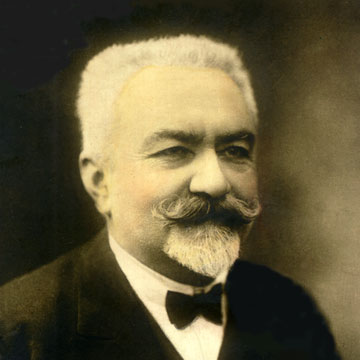
EMIL RACOVIŢĂ
Professor of Biology at the University of Cluj between 1920-1947, rector during the 1929-1930 academic year, member of the Romanian Academy.
EMIL RACOVIŢĂ
(born 15 November 1868 in Iași – died 17 November 1947 in Cluj-Napoca)
Professor of Biology at the University of Cluj between 1920-1947, rector during the 1929-1930 academic year, member of the Romanian Academy.
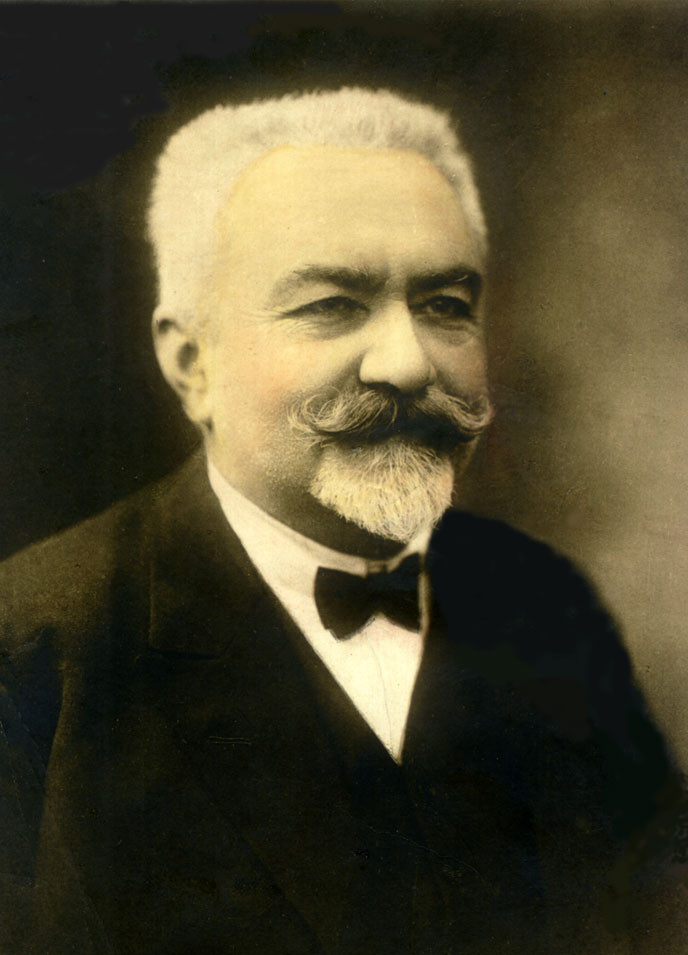
Născut într-o familie boierească din Moldova, cu origini ce urcă până în secolul al XVI-lea, Emil Born in a Moldavian boyar family, with origins going up to the 16th century, Emil Racoviţă attended primary and secondary education in Iași, where he was taught by renowned professors. His first teacher was Ion Creangă, and during high school, he was taught by A.D. Xenopol (history), Petre Poni (chemistry and physics), Grigore Cobălcescu (natural sciences). In 1886, Emil Racoviță left for Paris, where he enrolled at the Faculty of Law. He received his degree in legal science in 1889 and in the fall of the same year he became a student of the Paris School of Sciences. After only two years of study, Racoviță received a degree in natural sciences in 1891. He began his research career in France at the Roscoff laboratory, and soon he moved to Banyuls-sur-Mer within the Arago laboratory. In 1896 he defended his doctorate in natural sciences with the work Le Lobe céphalique et l'encéphale des annélides polychètes (anatomy, morphology, histology).
Between 1897 and 1899, Emil Racoviță participated in the scientific expedition to the South Pole lead by the famous Norwegian explorer Amundsen. Here he studied the life of polar animals and published an interesting paper describing his experience: La vie des animaux et des plantes dans l'Antarctique (1900). In November 1900, Racoviță was appointed deputy head of Arago Laboratory at Banyuls-sur-Mer and lecturer at the Comparative Anatomy Laboratory at Sorbonne, which he held until 1919. From 1901 on, the Romanian scientist run the journal Archives de zoologie expérimentale, together with the French scientist G. Pruvot.On 15 May 1907 he published Essai sur les problèmes biospéologiques, which laid the foundations for a new scientific discipline - Speleology. From 1905 on, Racoviță also coordinated the Biospeologica (études sur l'histoire naturelle du domaine souterrain) magazine. Up to the outbreak of World War I in 1914, Emil Racoviță explored together with G. Pruvot and R. Jeannel numerous caves from France, Italy, Spain, Algeria, exploring terrestrial and cavernous isopods. He described several groups of such living creatures, while discovering many new species such as Typhlocirolana moraguesi, Proidotea haugi, Microlista spinosissima, etc.
In 1919 he was invited to join the newly created Romanian University in Cluj, where he was granted a professor of biology tenure at the Faculty of Sciences. In 1920 Emil Racoviță established and became the head of the Institute of Speleology in Cluj, the first biospeleological cavernology research centre in the world, which he coordinated up to his death in 1947. During this period he conducted, together with foreign and Romanian fellow-researchers, intensive research of caves in Romania, but also in Europe. He was also editor-in-chief of the Travaux de l'Institut de Spéologie de Cluj (1920-1941) and Bulletin of the Society of Sciences of Cluj journals (1921-1933).
Throughout his long scientific activity, Emil Racoviță visited over 1000 caves and managed to collect about 150,000 specimens. In June 1920 Racoviță became a member of the Romanian Academy, an institution he had the honor of leading between 1926-1929.
Emil Racoviţă was rector of the University of Cluj from 1929 to 1930 and held the chairmanship of the commission that organized the 10th anniversary celebrations of the Romanian university in October 1930. On several occasions he was a senator in the Romanian Parliament either as a representative of the University of Cluj, or as a representative of the Romanian Academy.
His scientific achievements have also been recognized internationally, as Emil Racoviţă was either president or member of several French academies and associations, doctor honoris causa of the University of Lyon (1923). In 1936 he received the title of Commander of the Legion of Honour (1936).
Among his most important works we mention: Speleology (1926, 1927); L'Institut de Spéologie de Cluj (1926); Observations sur « Gheţarul de la Scărişoara » (1927); Evolution and its problems (1929), etc.
He was buried in the Cluj-Napoca Central Cemetery (Hajongard)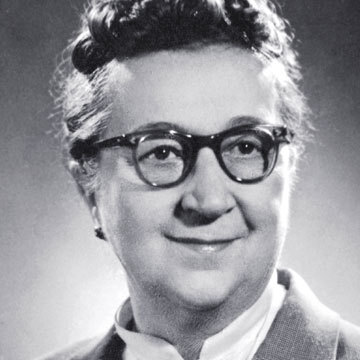
RALUCA RÎPAN
Professor of Chemistry at the University of Cluj from 1920 to 1964 and rector of Victor Babeş University from 1951 to 1956. Full member of the Romanian Academy (from 1948).
RALUCA RÎPAN
(born 27 June 1894, Iaşi – died 5 December 1975, Cluj)
Professor of Chemistry at the University of Cluj from 1920 to 1964 and rector of Victor Babeş University from 1951 to 1956. Full member of the Romanian Academy (from 1948).
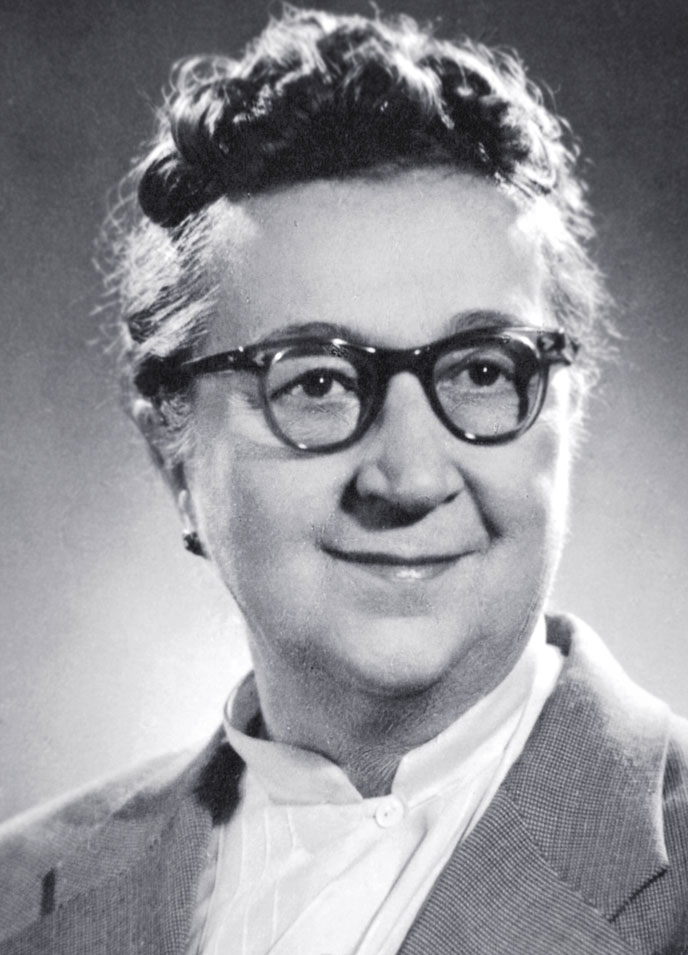
After graduating from the Faculty of Chemistry in 1919 in Iași, in 1922 she obtained the title of doctor of chemistry at the University of Cluj with the thesis The double amines corresponding to the double sulphates in the Magnesia series within Gheorghe Spacu’s doctoral school of inorganic and analytical chemistry. She was the first woman in Romania to hold a PhD in chemical sciences, the first woman who was a member of the Academy in the country and the only female rector of the University of Cluj. In 1930 she became a docent in analytical chemistry.
In 1919 she started working as a laboratory assistant at the Laboratory of Mineral Chemistry, then as an assistant at the Laboratory of Physical Chemistry of the Faculty of Sciences of the University of Iași. In 1920 she transferred to Cluj where she was appointed lecturer at the Laboratory of Inorganic Chemistry at the Faculty of Sciences. In 1925 she became a substitute associate professor at the Faculty of Medicine and Pharmacy in Cluj, where she continued her didactic activity until 1927. In 1931 she became a tenured associate professor at the Department of Inorganic Chemistry at the Faculty of Sciences at the University of Cluj and since 1942 until 1964 she worked as a professor. From 1948 she was hired by the newly established Faculty of Chemistry. Among her administrative positions she was: head of the Laboratory of Inorganic Chemistry during the refuge of the Faculty of Sciences in Timişoara (1940-1944), head of the Department of Inorganic Chemistry (1948-1964), dean of the Faculty of Chemistry (1948-1951) and rector of “Victor Babeş” University of Cluj (1951-1956).
Her research focused on inorganic and analytical chemistry. She used radioactive isotopes in laboratory experiments for the first time in Romania. She was also interested in the use of some rare elements present in the soil of the country. Among her works which amount to over 250 contributions we mention: Sels complexes de magnésium (3 vol., 1921-1922); Study on the Preparation and Constitution of Periodic Acids (1949); Study on the structure of hexametaphosphate by radioactive strontium (1957); Study of the structure of inorganic combinations using radioactive isotopes (1961); Determination of the circulation velocity through stages in the flotation of golden pirides by radioactive gold 198 (1962); Synthesis, analysis and properties of oxalato-molybdates (1975). She wrote several textbooks, some of them in collaboration with other prestigious chemists: Organic Chemistry Course. Metalloids (1954-1955); Practical Handbook on Inorganic Chemistry (1961-1962); Metal Chemistry (2 vol., 1968-1969); Treaty of Analytical Chemistry (1973) and others.
From 1951 she was the director of the Chemistry Institute in Cluj. Currently the institute bears her name. She became a full member of the Romanian Academy on 2 November 1948. Between 1957-1975 she was the president of the Cluj-Napoca Branch of the Romanian Academy. She was also a member of the Society of Chemistry in Bucharest, of the Society of Sciences in Cluj, of the Society of Industrial Chemistry in Paris and of the Society of Chemistry in Germany.
The value of her contributions as a researcher was also confirmed by the author and inventor certificates obtained with various collaborators from the Institute of Chemistry: in 1967 - for the following inventions: “Method for chemical deferrization and whitening of kaolin” and “Ore Flotation Enhancement Process”; in 1968 - for the “Method of Gold Separation from Gold Minerals”; in 1969 - for two other inventions on the separation and recovery of gold and in 1970 - for “Shiny liquid gold formula for the decoration of household glass and the process for obtaining it.”
For her work she received several distinctions: the State Prize (1954), Emeritus Scientist (1964) and First Class Scientific Merit (1966). In 1963 she was awarded the title of Doctor Honoris Causa of the Nicolaus Copernicus University in Torun (Poland).
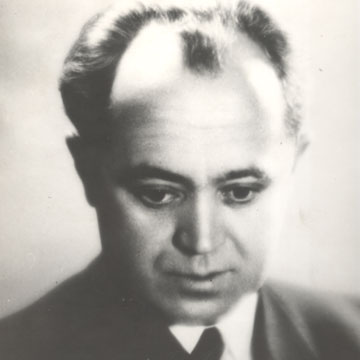
DUMITRU D. ROŞCA
Professor of philosophy at the University of Cluj from 1929 to 1965, member of the Romanian Academy.
DUMITRU D. ROŞCA
(born 11 February/ 29 January 1895 in Săliştea Sibiului – died 25 August 1980 in Cluj-Napoca)
Professor of philosophy at the University of Cluj from 1929 to 1965, member of the Romanian Academy.
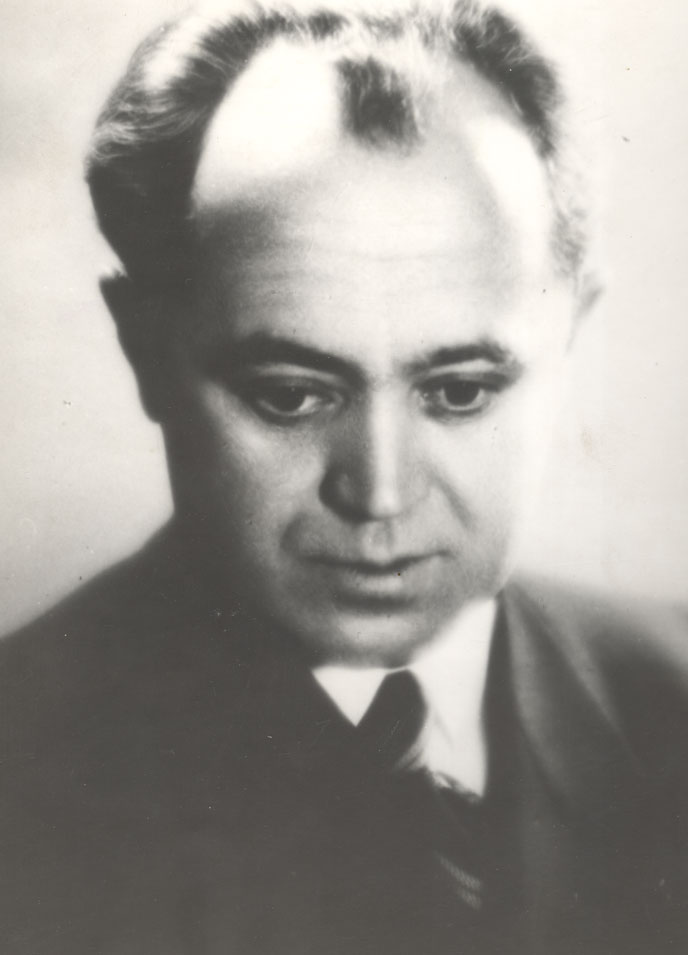
Following the completion of the primary school studies in his native village, D.D. Roșca continued his high school studies in Sibiu, and then at the Romanian high school in Brașov, where he met Lucian Blaga, with whom he had a long lasting friendship maintained by their common interest in philosophy. In the autumn of 1914 the two men met again at the Theological Institute in Sibiu, where they enrolled to be exempt from army service. After three years of theological studies, during which they focused on philosophical readings, D.D. Roșca and Lucian Blaga decided to study philosophy at the University of Vienna. After three semesters in Vienna they returned to the country in the fall of 1918, in the difficult context created by the withdrawal of Central Powers' armies. Lucian Blaga managed to return to Vienna, but D.D. Roșca abandoned this idea and went to Bucharest, where he enrolled at the Faculty of Philosophy and Letters in the third year. After finishing his studies in Rome, he finally arrived in Paris in November 1919 together with a group of friends. Since in France only his baccalaureate was acknowledged, D.D. Roșca enrolled at the Faculty of Letters and Philosophy at the Sorbonne in order to obtain a state diploma, which he received in July 1921. He then went on with his doctoral studies on Hegel's influence on Taine having Lucien Lévi-Bruhl as thesis advisor, who was forced to retire. He was replaced by professor Émile Bréhier, who was up to the end very skeptical about the subject of the thesis, but admitted, upon the public defence of the thesis in 1928 that D.D. Roșca has deconstructed what had been a legend of French philosophical studies up to that point. The secondary thesis consisted of a French translation of Hegel's work - Vie de Jésus.
In 1929 D.D. Roșca returned to the country and applied for an associate professor position at the department of philosophy at the Faculty of Letters and Philosophy of the University of Cluj. Here he taught introduction to philosophy and history of eastern philosophy with the purpose of familiarizing students with a systematic and rigorous method of thinking through specific philosophical terminology. In 1937 he became a tenured professor. Between 1951 and 1957, respectively after the temporary transfer of the Faculty of Philosophy from Cluj to Bucharest, D.D. Roșca remained in Cluj, teaching a general pedagogy course and an elementary course of logic. As a member of the ‘University Extension’, he has held numerous conferences in Brașov, Sibiu, Deva and other cities. He was a correspondent member of the Romanian Academy beginning 21 March 1963 and a tenured member of the Romanian Academy beginning 1 March 1974.
D.D. Roșca’s doctoral thesis, L'influence de Hegel sur Taine, théoricien de la connaissance et de l'art (1928), has become upon its publishing a landmark of French and universal philosophy. It was translated in Romanian in 1968. Another representative study, published in 1934 and awarded by the Romanian Academy with the Asachi Prize in 1935, is The Tragic Existence. An Attempt at Philosophical Synthesis. Other important titles in his work are: The Myth of Usefulness. Lines of Orientation in Romanian Culture (1933); Present-Day Relevance of Descartes (1933); Intellectual Ethics (1943); Philosophical Foundations of the National Idea (1943). Apart from the papers published in numerous journals and in two important collections of articles - Philosophical Studies and Essays (1970) and People and Climates (1971), D.D. Roşca also had an impressive contribution as a translator of Hegel's works into Romanian. Throughout the fourteen years devoted to this work, he managed to translate twelve of the eighteen volumes of the first printed edition of the works of the German philosopher. His translations of Hegel include: Encyclopedia of Philosophical Sciences (1962-1971); Lectures on the History of Philosophy (1963-1964); Science of Logic (1967); Philosophical Studies (1967); Lectures on the Philosophy of Religion (1969).
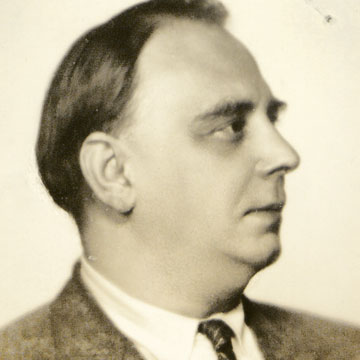
PETRE SERGESCU
Mathematician and historian of sciences, professor at the Faculty of Sciences of the University of Cluj between 1926-1943, corresponding member of the Romanian Academy.
PETRE SERGESCU
(born December 5/17, 1893, Turnu Severin – died December 20, 1954, Paris, France)
Mathematician and historian of sciences, professor at the Faculty of Sciences of the University of Cluj between 1926-1943, corresponding member of the Romanian Academy.
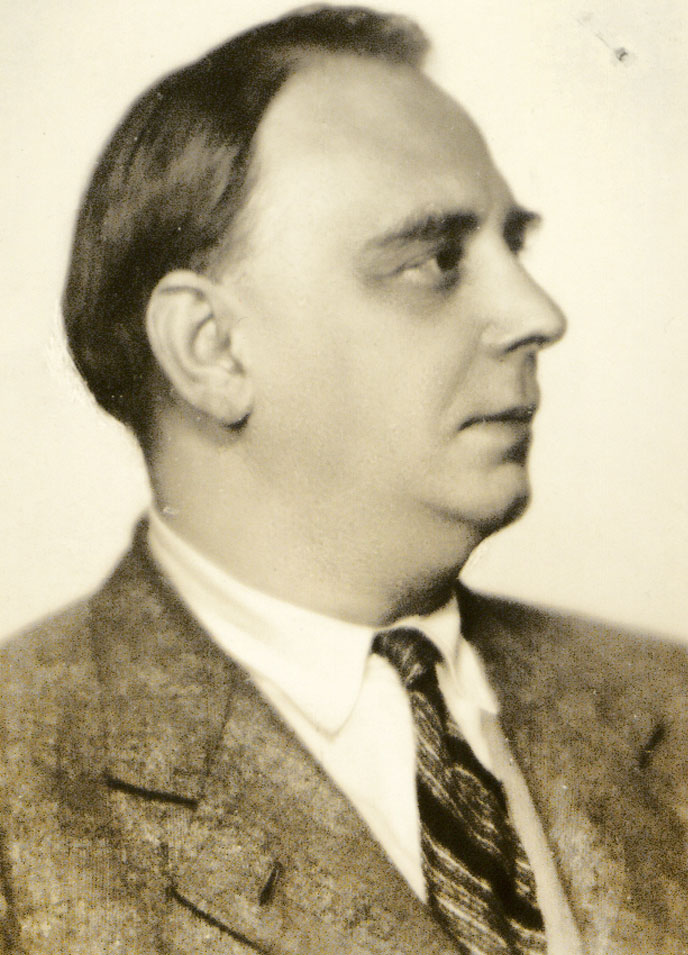
Petre Sergescu was born into an elite Romanian family, among his ancestors being the Pasoptist revolutionary Popa Şapcă. After high school in his hometown, Petre Sergescu enrolled in 1912 as a student in Bucharest, following in parallel the courses of the Faculty of Sciences, the Mathematics section, those of the Faculty of Philosophy and those of the Conservatory of Music. In 1916 he obtained a degree in mathematics, as well as a degree in philosophy and a degree in Bel Canto from the Conservatory. Shortly after graduation, in the difficult context of the First World War, Sergescu was taken prisoner by German troops. who had occupied Romania in 1917 and was taken to Bulgaria, where he remained interned in a camp for 18 months.
After the end of hostilities, he was sent as a fellow to Paris, where he remained from 1919 to 1923, to complete his studies. Here he took courses at the Faculty of Science, the École Normale Supérieure and the Collège de France, obtaining a French degree in mathematics, and in the same time preparing his doctorate. He returned to the country and in November 1923 defended his doctoral thesis, entitled "Sur les noyaux symétrisables", at the University of Bucharest, in front of a committee chaired by the famous professor David Emmanuel.
Sergescu began his university career in 1924, as a substitute teacher at the University and the Polytechnic School of Bucharest, from 1926, becoming a substitute associate professor of mathematical analysis at the Faculty of Sciences of the Romanian University of Cluj. On February 1, 1928, he was appointed associate professor of analytical geometry, and three years later, in 1931, he became a full professor in the same discipline. In 1938 he was transferred as a full professor to the Chair of Mathematical Analysis at the same university. During 1943-1946, Sergescu was a full professor of analytical and differential geometry at the Polytechnic University of Bucharest, where for a short time he also held the position of rector (December 1945-1946). In 1946 he left Romania for good, settling in Paris, where in 1952 he was employed at the CNRS.
In his scientific activity, Petre Sergescu has distinguished himself both as a researcher and as an organizer of colloquia, conferences and other specialized events. In 1929, together with other colleagues from Bucharest and Cluj, he founded the journal "Mathematica", fulfilling the function of editorial secretary of this publication. In the same year, Petre Sergescu organized in Cluj between May 9 and 12 the first edition of the Congress of Romanian mathematicians. He also coordinated the conduct of the second edition of the congress, which took place between 5 and 9 May 1932, in Turnu-Severin, his hometown.
Petre Sergescu has published over 160 scientific papers (books, papers, communications, etc.), of which we mention: On solving second degree equations (in Romanian) (1915); Monograph on algebraic equations with all real roots (in Romanian) (1924); Noyaux symétrisables (théorème de Laguerre) (1927); Sur les modules des racines des équations algébriques (1929); Quelques propriétés des polynômes (1932); Lessons on recent research on the theory of polynomials (in Romanian) (1934); On the roots of the equations where the coefficient xp has the highest absolute value (in Romanian) (1935); Remarques pratiques sur l'intégration de certaines équations différentielles linéaires (1937); Dernières batailles pour le triomphe du calcul infinitésimal (1938) etc. Many of his texts have focused on history and the evolution of mathematical sciences in Romania and France: Mathematical Thinking (in Romanian) (1928) - volume awarded with the Prize of the Romanian Academy; Les sciences mathématiques en France (1933) - part of the collection dedicated to the development of science in France, work that received the prize of the Academy of Sciences of Paris; Mathematics in Romania (1934); Les mathématiques à Paris au Moyen-Âge (1939); Sur l'identité des auteurs de quelques articles mathématiques, insérés dans "Le Journal des Savants" 1684-1703 (1942); On the ethical value of science (in Romanian) (1943); Descartes mathématicien (1950) etc. In 1941 Petre Sergescu was commissioned by the Romanian Academy to compile annually the Romanian Mathematical Bibliography.
Petre Sergescu was a member, vice-president (1937-1940), president (1947-1950) and then perpetual secretary (since 1950) of International Academy of Sciences, Member of the "Masaryk" Academy in Prague, Lima Academy of Sciences (Peru), corresponding member of the Romanian Academy (elected in 1937). He was also a member of mathematical societies in many countries, such as Belgium, France, Poland, etc. In 1947 Professor Sergescu was commissioned to lead the publication "Archives internationales d’Histoire des Sciences". He was awarded the title of Knight of the Legion of Honor (1939).
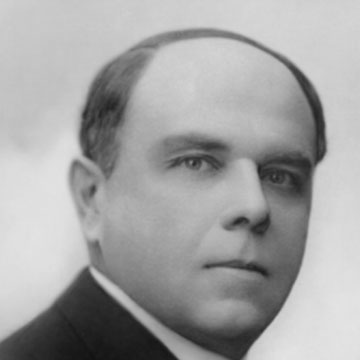
GHEORGHE SPACU
Professor of Chemistry at the University of Cluj between 1919-1940, rector of the University of Cluj between 1925-1926. Member of the Romanian Academy (from 1936).
GHEORGHE SPACU
(born 5 December 1883, Iași – died 23 July 1955, Bucharest)
Professor of Chemistry at the University of Cluj between 1919-1940, rector of the University of Cluj between 1925-1926. Member of the Romanian Academy (from 1936).
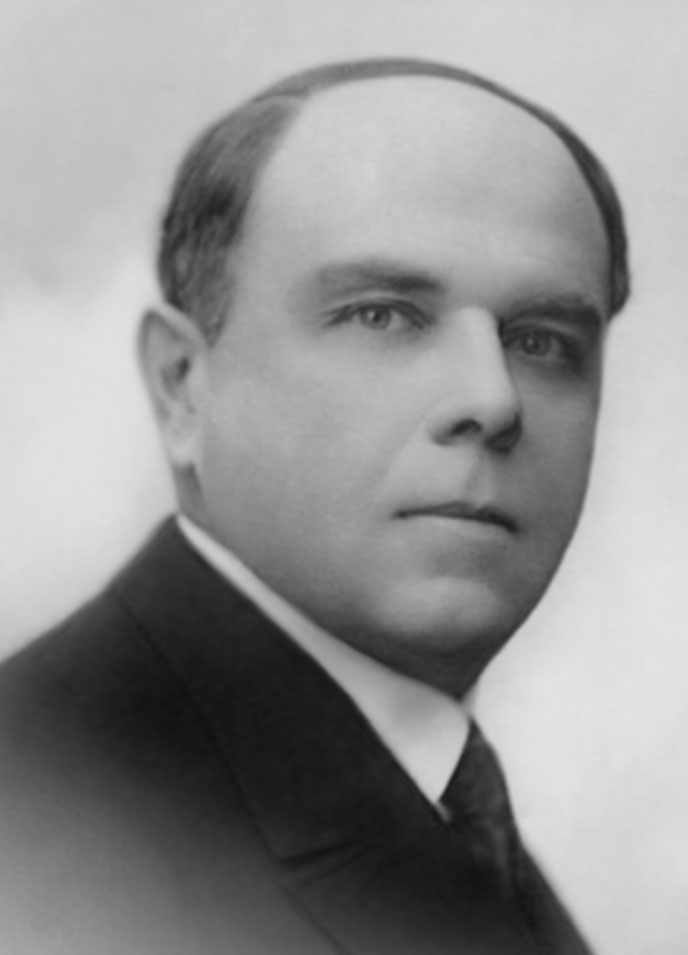
After graduating from the Faculty of Sciences, in the field of Physics and Chemistry in Iași, he further specialized in the field of analytical chemistry at the Polytechnic School in Vienna, as well as in the field of organic chemistry at the University of Berlin (1906). In 1916 he defended his doctoral thesis entitled Complex Ferrous Combinations in Iași, becoming the second doctor in chemistry in Romania.
Between 1907-1916 he was employed by the University of Iași in the Department of Mineral Chemistry. In 1919 he became a professor at the Faculty of Sciences of the University of Cluj, being the first professor of inorganic and analytical chemistry in Romania and the founder of this school. During the time he spent in Cluj-Napoca, he advised 16 doctors in chemistry and many other chemists, who went on to gain their own reputation. Among the most prestigious we mention: Raluca Ripan, Ilie Murgulescu, Petre Spacu, Coriolan Drăgulescu, C. Gh. Macarovici, E. Popper, V. Armeanu. He was Dean of the Faculty of Sciences in 1924-1925 and rector of the University of Cluj between 1925-1926.
In 1940 Gheorghe Spacu transferred to the Faculty of Sciences in Bucharest, where he remained until 1955. Thus he was the only professor in the first half of the previous century who taught for a long time at all three major university centers in the country. Raluca Ripan, who became a tenured professor in the Department of Organic Chemistry in 1940, was the one who continued the research initiated by professor Spacu in Cluj after his departure in Bucharest.
His name is linked, in the area of laboratory research, to one of the reagents he introduced in the complexometric methods of analysis, namely mercaptobenzthiazole, also known as the ‘Spacu reagent’, and to the reaction to determine copper and persulphates, called the ‘Spacu reaction’. His experiments have resulted in the synthesis of over a thousand new substances and the development of new methods of chemical elements analysis.
Of the 274 studies published throughout the career, more than two thirds were written during the period he spent in Cluj. His publications include over 120 titles in the field of inorganic chemistry and over 130 analytical chemistry studies. Among these we mention: Sur une nouvel méthode microchimique pour le dosage du cuivre (1922); Sur les amines des sels doubles (1923); Une nouvelle réaction pour l'acide persulfurique (1923); Deux nouvelles réactions très sensibles pour le cuivre (1925); Sur une nouvelle classe d'amines. Les sélénocyanamines (1930); Contribution à l'étude des sels complexes homogènes et hétérogènes en solutions (1931); Nouvelles contributions à l'étude des cobaltoxalates complexes (1935); Contributions to the constitution of potassium antimonate. On amines. Hexahydro-antimoniatoamines (1949); A new precise and fast gravimetric method for dosing bismuth (1955). He also collaborated or was part of the editorial board of important journals abroad, especially in Germany: ‘Zeitschrift für analytische Chemie’ (München), Zeitschrift für anorganische und allgemeine Chemie’ (Leipzig), ‘Die Chemische Analyse’ (Stuttgart), ‘Makrochemie und Mikrochimika’ (Vienna) and others.
Gheorghe Spacu was one of the founding members of the Society of Sciences in Cluj, founded in 1921 and managed by Emil Racoviță, where he worked as general secretary from 1923 on. Between 1921-1939, this society published one of the most prestigious scientific journals of the interwar period, namely ‘Bulletin de la Société de Sciences de Cluj’. The papers published by professor Spacu and his collaborators were subsequently gathered in an annual volume titled Travaux du laboratoire de chimie analitique et anorganique de l'Université de Cluj, that was also available abroad.
Gheorghe Spacu was a corresponding member of the Romanian Academy beginning 7 June 1927 and became a full member on 25 May 1936. Between 2 June 1944 and 1 June 1948, he was vice-president of this institution. He was also a member of the Italian Academy of Sciences, the Academy of Sciences and Arts of Geneva, of the chemistry societies of Bucharest, Berlin, Paris, Washington and of the International Commission for the Establishment of the Annual Tables of Constants and Numerical Data in Paris, whose president was the French scientist Frédéric Joliot-Curie.
Among others he was awarded the First Class Labour Order and the State Prize (1952, 1954).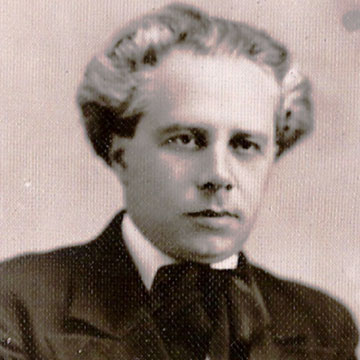
EUGENIU SPERANTIA
Professor of Philosophy of Law and Sociology at the University of Cluj between 1934-1948.
EUGENIU SPERANTIA
(born 6/18 May 1888 in Bucharest – died 11/12 January 1972 in Bucharest)
Professor of Philosophy of Law and Sociology at the University of Cluj between 1934-1948.
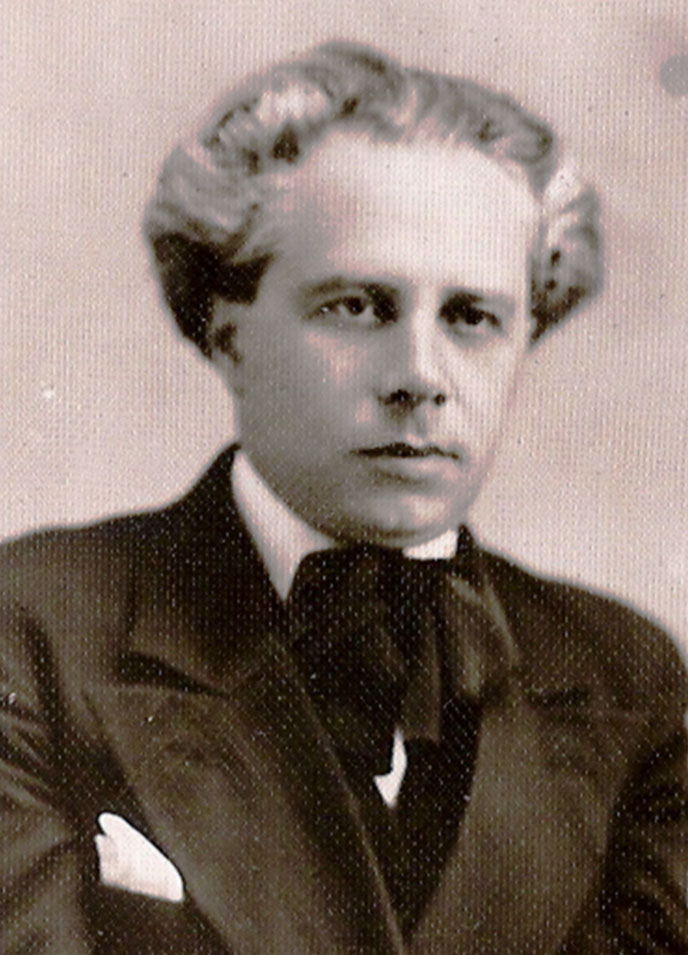
Eugeniu Sperantia is the son of the writer Theodor D. Sperantia, a descendant of the famous Nădejde family. After graduating at the University of Bucharest (1906-1910) the Faculty of Law and Letters and Philosophy, Eugeniu Sperantia received his doctoral title in letters and philosophy in 1912 with the thesis Pragmatic Apriorism. Between 1913-1914 he attended further specialisation at the University of Berlin.
He began his teaching career during his student years, as a secondary school teacher. In 1919 he was appointed civil service specialist at the Instructional Institute of Cluj in the Department of Higher Education where he was director from the spring to the autumn of 1921. In September 1921 he was appointed substitute associate professor of philosophy of law at the Law Academy in Oradea. In 1923 he succeeded to introduce the study of sociology at the Department of Philosophy of Law. In 1927 he became a tenured associate professor. In 1931 he became an aggregate professor, and in 1934 he became a tenured professor. Between 1924 and 1934 he was professor of philosophy at the Academy of Orthodox Theology in Oradea. During this period Eugeniu Sperantia was president of the Association of Secondary Teachers in Oradea (1921-1925) and vice-president of the Cultural Meeting ‘The Three Criș Rivers’.
In 1934, as a result of the merging of the Faculty of Law in Oradea with the Faculty of Law in Cluj, Sperantia moved to the University of Cluj as a tenured professor of Philosophy of Law, where he remained until 1948 when he was retired from education. In 1945, when the University of Cluj took refuge in Sibiu, he held the position of Dean of the Faculty of Law. During the years he spent in Cluj-Sibiu Sperantia became an acknowledged researcher and sociologist having published a series of valuable papers.
He was a member of the Romanian Society of Philosophy since 1915 and a member of the Society of Romanian Writers since 1916. His professional qualities were acknowledged as he was offered membership in several international societies: Internationale Vereinigung für Rechtsphilosophie in Berlin in 1928, Institut International du Droit et de Sociologie Juridique in 1937 and Permanent Committee of International Congresses of Aesthetics and Science of Art, also in 1937.
Eugeniu Sperantia was an encyclopaedic spirit, whose contributions cover several fields: philosophy, law, sociology, psychology, pedagogy, aesthetics, musicology, literature and memoirs. Titles such as: Contributions to the Philosophy of Magic (1916); Fundamental Principles of Legal Philosophy (1936); Introduction to the Philosophy of Law (1944), Problems of Contemporary Sociology (1933); The Psychology of Thought (1922); The Psychological Resorts of Human Evolution (1947); Concepts and Perspectives in Current Pedagogy (1929) attest to the diversity of his scientific concerns. Among these, sociology was his most important area of research. His fundamental work in this field is Introduction in Sociology, 2 vol. (1939). He also published in the field of philosophy in specialized publications and he attended national and international conferences. His law papers had both a research and didactic concern.
His publishing activity, however, began ever since he was nine and he was publishing poetry in school magazines. His literary contributions remained a significant constant throughout his career. His volume of symbolic poems The Step of Shadows and the Eternity (1930) brought him the Prize of the Romanian Writers Society. He was part of the poet Alexandru Macedonski’s poetry society and was a constant collaborator to Ovid Densuşianu's magazine ‘Vieața nouă’ (The New Life) thoughout the two decades when magazine was published. His interest in art theory is reflected in such volumes as ‘Papillons’ by Schumann (1934), for which he received the Academy Award in 1935, or Musical Medallions (1966). His writings on contemporary personalities were assembled in the volumes University Personalities (1967) and Memoirs of the Literary World (1967).
The legacy of this polyvalent personality is summed up most expressively by the poet Eugeniu Sperantia himself:Books, books, books,
Between the world’s four corners.
Books, like the stars,
Scattered like beads,
I see them shining,
I hear them whispering
and declaring:
The roads of fate,
The meaning of death,
The Covenant of Judgment
and of Eternity...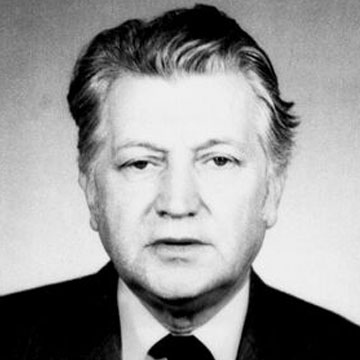
POMPILIU TEODOR
Istoric, cercetător, profesor universitar de istorie medie şi istoriografie la Universitatea Babeș-Bolyai, membru corespondent al Academiei Române (din 1990).
POMPILIU TEODOR
(n. 19 iulie 1930, Ilia, jud. Hunedoara – d. 7 septembrie 2001, Cluj-Napoca)
Istoric, cercetător, profesor universitar de istorie medie şi istoriografie la Universitatea Babeș-Bolyai, membru corespondent al Academiei Române (din 1990).
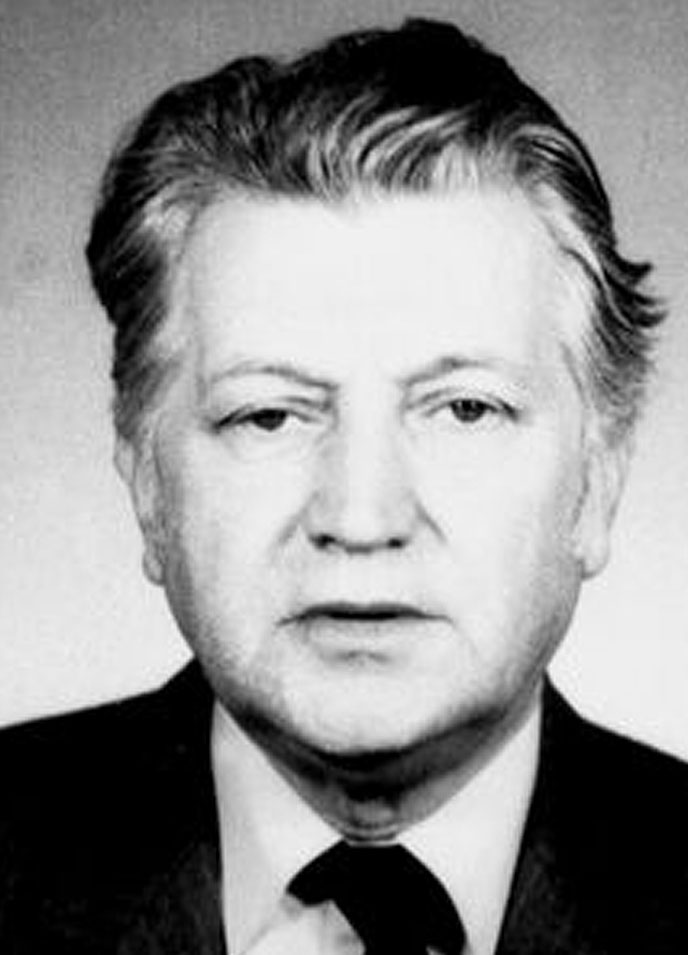
Pompiliu Teodor a parcurs studiile liceale la Deva (1941-1949) și a absolvit Facultatea de Istorie a Universității ,,Victor Babeş” din Cluj (1954). Și-a continuat specializarea la Universitatea din Viena. În anul 1970 a obținut titlul de doctor cu lucrarea Samuil Micu istoric.
Cercetător la Biblioteca Academiei Române, Filiala Cluj (1955-1963), apoi la Institutul de Istorie și Arheologie al Academiei Române din Cluj (1963-1966), Pompiliu Teodor a activat ulterior în calitate de lector (1966-1970), conferențiar (1970-1977) și profesor (din 1977) la Catedra de Istoria României a Facultăţii de Istorie a universităţii clujene. De asemenea, a fost profesor invitat la Universitatea din Illinois, Urbana (1972-1973).
A fondat Catedra de istorie medievală și istoriografie, Institutul de Istorie Central-Europeană, Institutul de Studii Iudaice, precum și două publicații de specialitate: revista ,,Colloquia” și ,,CaieteleDavid Prodan”. Profesorul Pompiliu Teodor este cel care a relansat studiile de specialitate în domeniul istoriei artei la universitatea clujeană, iar în cadrul Academiei Române (al cărei membru corespondent a devenit în 1990) a pus bazele Comisiei Istorice Mixte Româno-Slovace. Împreună cu profesorul Doru Radosav a înființat în 1997 Institutul de Istorie Orală.
Pompiliu Teodor a îndeplinit diverse funcții în cadrul Universității Babeș-Bolyai: șef al Catedrei de istorie medie și istoriografie (1973-1977; 1990-2001), șef al Departamentului Istorie (1996-1997), director al Institutului de Istorie Central-Europeană (din 1993). De asemenea, a fost vicepreședinte al Comisiei de Istoria Relațiilor Internaționale a Comitetului Internațional de Studii Istorice (din 1995) și președinte al Comisiei Istorice Mixte Româno-Slovace a Academiei Române. Pompiliu Teodor a fost desemnat președinte al Asociației Istoricilor din Transilvania și Banat, și al Fundației „Gh. Brătianu”.
Cercetările sale s-au focalizat pe istoria Europei Centrale în secolul al XVIII-lea, istoria istoriografiei, iluminismul românesc, istoria bisericii și a vieții religioase (sec. XVIII). Dintre lucrările publicate menționăm: Ideea de unitate politică la români (1968); Evoluția gândirii istorice românești (1970); Avram Iancu în memorialistică (1972); Fragmentarium iluminist (1972, în colab.); Die Entwicklung des historischen Denkens in der rumänischen Geschichtsschreibung (1972); Interferențe iluministe europene (1984); Istorici români și probleme istorice (1993); Incursiuni în istoriografia română a secolului XX (1995). Pompiliu Teodor a fost coordonator și autor al volumelor: Sub semnul lui Clio (1974); Enlightenment and Romanian Society (1980); Stat, Societate. Națiune. Interpretări istorice (1982); Răscoala lui Horea (1784); Studii și interpretări istorice (1984); The History of International Relations in Central and Eastern Europe (1985); Lecția Yaltei/Lesson of Yalta (1998). În calitate de editor, a îngrijit următoarele lucrări: Gh. Șincai, Învățătură firească spre surparea superstițiilor norodului (1964); Samuil Micu, Scrieri filosofice (1966); Ioan Lupaș, Scrieri alese (1987); Silviu Dragomir, Studii privind istoria revoluției române de la 1848 (1985); Keith Hitchins, Conștiință națională și acțiune politică la românii din Transilvania 1700-1918 (2 vol., 1987, 1992). A colaborat la: Enciclopedia istoriografiei românești (1978); Națiunea română. Afirmare. Orizont contemporan (1984); Gh. I. Brătianu. Confluențe istoriografice românești și europene (1988); La Révolution Française et les Roumains (1989); Luther und Siebenbürgen (1985); Istoria ca lectură a lumii (1994) etc.
Pompiliu Teodor a fost editor șef al revistei „Colloquia. Journal of Central European History” și membru în comitete de redacție ale mai multor publicaţii ştiinţifice: „Anuarul Institutului de Cercetări Socio-Umane «Gh. Șincai»” din Târgu-Mureș, „Revue des Études Sud-Est Européennes”, „Revue Roumanie d'Histoire”, „Studia Universitatis Babeș-Bolyai, seria Historia”, Cluj-Napoca.
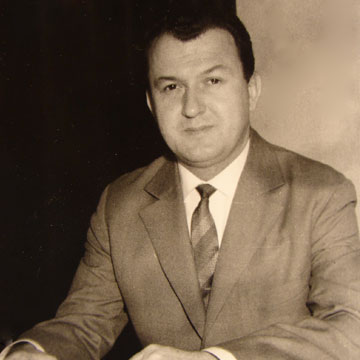
IOAN URSU
Physicist, professor, vice-rector of Babeş-Bolyai University between 1961-1968, member of the Romanian Academy (from 1963), coordinator of Romania's nuclear program.
IOAN URSU
(born 5 April 1928, Mănăstireni, Cluj county – died 16 April 2007, Bucharest)
Physicist, professor, vice-rector of Babeş-Bolyai University between 1961-1968, member of the Romanian Academy (from 1963), coordinator of Romania's nuclear program.
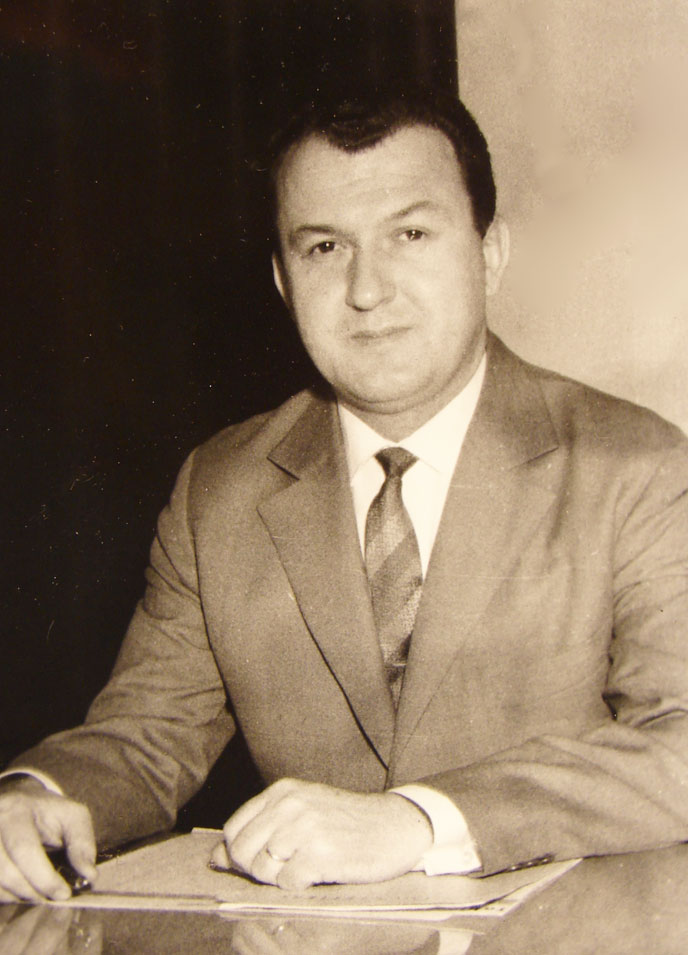
Following completion of his secondary education in Turda (1939-1940) and Cluj (1939-1946), Ioan Ursu graduated from the Faculty of Physics and Mathematics of the University of Cluj in 1950. In 1956 he obtained his PhD in Physics and Mathematics with the work titled Magnetic-Mechanical Effects on Oxygen, and in 1969 he became doctor of science. He did research in electronics and nuclear magnetic resonance at Princeton University, USA (1959-1960), USSR (1962, 1965), England (1962), Switzerland (1963), GDR (1963).
He started his academic career as a teaching assistant (1949) at Victor Babes University of Cluj. Between 1957 and 1968 he was a professor and head of the Department of Atomic and Nuclear Physics, Optics and Electromagnetics (1957-1968). He was visiting professor at the International Centre for Theoretical Physics in Trieste (from 1991) and he was an associate scientific researcher at the Institute of Atomic Physics in Bucharest.
Correspondent member (1963), then full member (1974) of the Romanian Academy, Ioan Ursu led the Department of Physics of this institution (1988-1992). At the same time, he held several leading positions: vice-rector of the Babeş-Bolyai University (1961-1968), director of the Institute of Atomic Physics (1968-1976), chairman of the State Committee for Nuclear Energy (1969-1976), president (1972-1979) and first vice president of the National Council for Science and Technology (from 1979), President of the European Society of Physics (1976-1978), President of the Balkan Union of Physics (1986-1990).
He conducted his research in the field of atomic and nuclear physics, pursuing the study of nuclear materials, solid physics, the interaction of nuclear radiation with solids, specific nuclear fuels, special alloys and structural materials of interest for nuclear energy. He studied nuclear technology issues (isotopic separations, control of the uranium and heavy water enrichment process, nuclear control and safeguards), active media technology for solid-state lasers. He discovered the effect of isotopic enrichment of uranium in magnetic resonance.
Ioan Ursu published numerous papers, including: Magnetomechanical Effects in Oxygen (1959); La résonance paramagnétique électronique (1968); Atomic Energy (1973); PracticalApplications of Nuclear Explosions (1973); Physics and Technology of Nuclear Materials (1982); Magnitnyi Rezonans Soedinenii Urana (1982); Interaction of Laser Radiation with Metal (1986); Laser Heating of Metals (1990).
He was a member of numerous societies: Society of Physics and Chemistry, American Society of Physics (1960), Scientific Council of the Joint Institute for Nuclear Research, Dubna (1965), Society of Physics in Belgium (1969), France (1969), Italy (1991), the International Society of Magnetic Resonance (1971), the American Nuclear Society (1975), the Canadian Nuclear Association (1976), Ettore Majorana Erice International Centre (1977), the European Academy of Science (1981), the American Association for Advanced Research (1989), European Society of Optics (1991).
Ioan Ursu received the First Prize of the Ministry of Education (1961) and the title of Professor Emeritus (1969).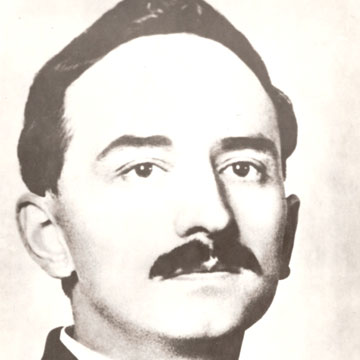
GEORGE VÂLSAN
Professor of Geography at the Faculty of Science of the University of Cluj, Department of Geography (1919-1929) where he founded a school of geography and an internationally acknowledged speciality publication, member of the Romanian Academy. Reputed professor, scholar and a man of letters, George Vâlsan is considered the founder of the Romanian geomorphology, and by introducing new methods of research in the field of geography he laid the foundations of the modern geographic education in our country.
GEORGE VÂLSAN
(born 21 January 1885 in Bucharest – died 6 August 1935 in Carmen Sylva, today Eforie Sud, Constanţa county)
Professor of Geography at the Faculty of Science of the University of Cluj, Department of Geography (1919-1929) where he founded a school of geography and an internationally acknowledged speciality publication, member of the Romanian Academy. Reputed professor, scholar and a man of letters, George Vâlsan is considered the founder of the Romanian geomorphology, and by introducing new methods of research in the field of geography he laid the foundations of the modern geographic education in our country.
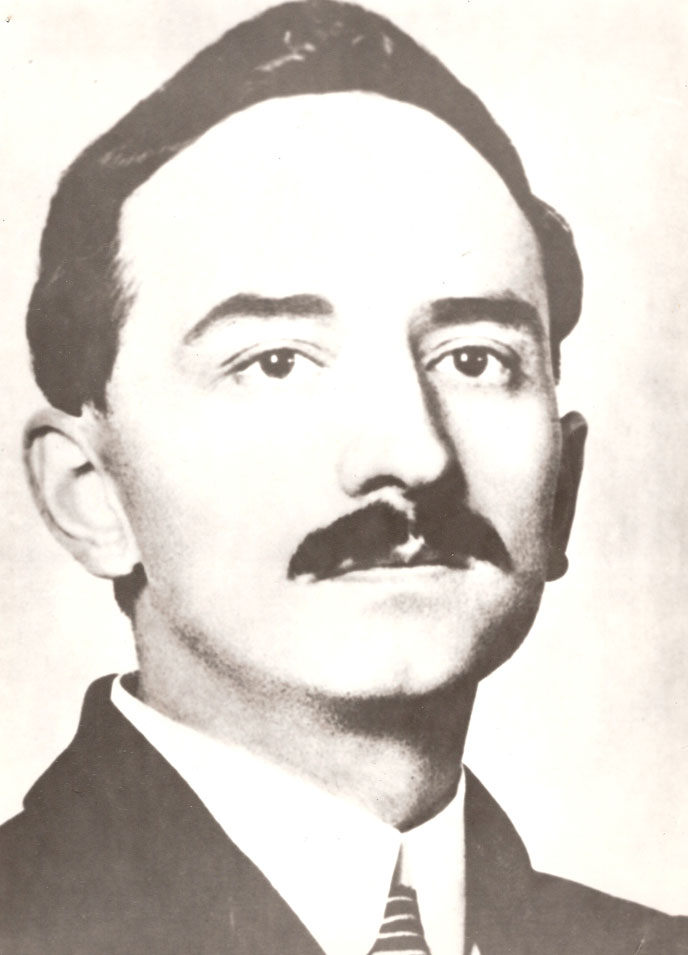
George Vâlsan attended secondary studies in Craiova, Piteşti and Bucharest (1896-1904) and university studies (Faculty of Letters and Philosophy, 1904-1908, paired with geography courses, 1908-1910) in Bucharest. Scholarship recipient of the Royal Romanian Society of Geography, he continued his education in Berlin (1911-1912) and Paris (1913-1914). In 1915 he became a doctor in geography with a doctoral thesis on the Romanian Plain. Contributions of physical geography, being the first doctoral thesis in the field of physical geography conceived on strictly scientific bases.
He started his teaching career at the University of Iași (1916-1918). From 1919 to 1929 he was a professor at the University of Cluj in the Department of Geography of the Faculty of Sciences. He contributed substantially to the development of the Romanian geography school in Cluj with the help of the French professor Emmanuel de Martonne. His intensive didactic and organizational activity was also reflected by the magazine he founded - “The Works of the Institute of Geography of the University of Cluj”. He saw that the laboratories of the Institute of Geography in Cluj were equipped with new teaching materials, books and periodicals, thus laying the foundations of a specialty library. From 1929 he moved to the University of Bucharest, where he worked for the rest of his life.
His name is tied to the founding of Romanian geomorphology. Vâlsan conducted an intensive scientific work in more than 180 papers in which he approached fields such as: cartography, climatology, hydrology, meteorology, pedogeography, geography of population and settlements, historical geography, history of geography. Among his important works: The Foundation of Bucharest (1909); Romanian Plain. Contributions of Physical Geography (1915); National Consciousness and Geography (1921); Les terrasses de la plaine Roumaine (1928); The role of the Carpathians in present Romania (1922); The spatial element in the geographical description (1929) and others.
Vâlsan was also preoccupied with the teaching process and published several textbooks: Elements of Physical Geography (1931); The spatial element in the geographical description (1929) and others, and he also published university course guides: Geomorphology Course (1926-1927); Terrestrial morphology. Course (1931); Course on Physical Geography (1932) and others.
He is regarded as the creator of the ethnographic school in geography. Together with Emmanuel de Martonne and Romulus Vuia, he was and advocate for the establishment of the Ethnographic Museum of Transylvania, for the founding of the Romanian Ethnographic Society in 1923 and for the introduction of an ethnography course at the University of Cluj. In 1923 he was elected president of the Ethnographic Society in Cluj. He was also a writer, publishing poetry and prose in the literary journals of the time: “Convorbiri literare", “Drum drept”, “Ramuri” and others. He published geographic descriptions and poetry in the volumes: The Story of a Youth (1924) and The Deserted Garden (1925).
He was a correspondent member of the Romanian Academy (5 June 1919) and beginning 1920 a member of the Romanian Academy, vice president of the Panel of Physical Geography of the International Geography Congress in Paris and chairman of the Geographic Landscape Commission at the International Geography Congress in Warsaw.
He was buried in Bucharest, in the ‘Sfânta Vineri’ (Holy Friday) cemetery.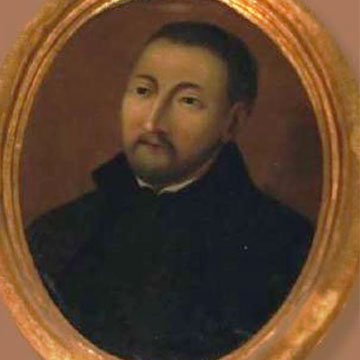
JACUB WUJEK, SJ
Member of the Jesuit Order, Catholic priest. Professor, philologist and theologian. Head of the Jesuit mission from Transylvania between 1579 and 1584. Professor and first rector of the Jesuit College in Cluj. Translator of the Bible in Polish
JACUB WUJEK, SJ
(born in 1541 in Wągrowiec, Poland – died 27 July 1597, Krakow, Poland)
Member of the Jesuit Order, Catholic priest. Professor, philologist and theologian. Head of the Jesuit mission from Transylvania between 1579 and 1584. Professor and first rector of the Jesuit College in Cluj. Translator of the Bible in Polish
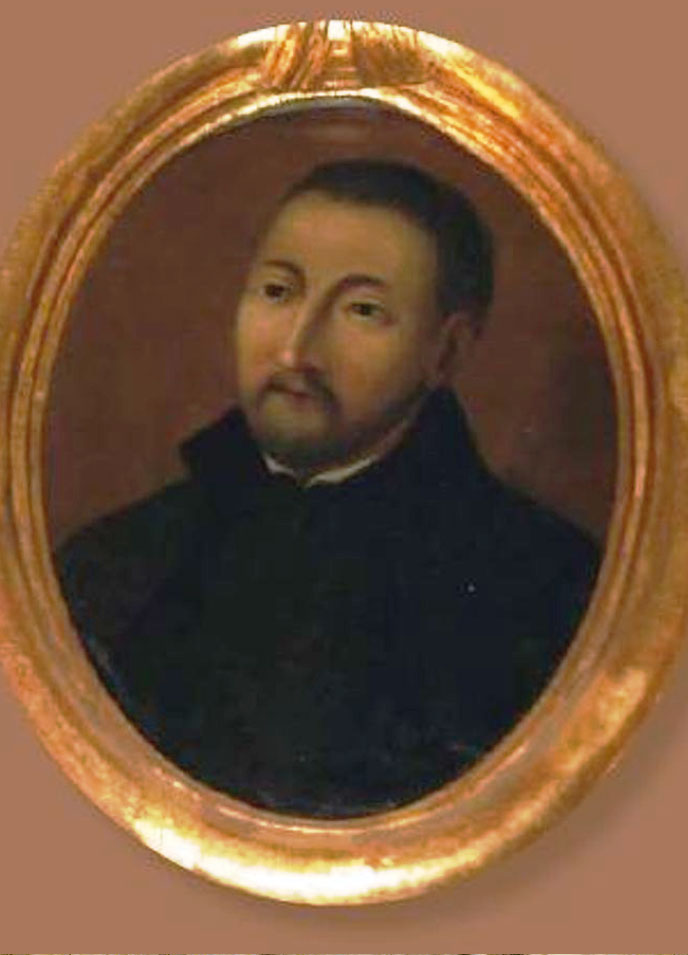
Jacub Wujek (Jakobus Vangrovitius in Latin) was born in 1541 in the town of Wągrowiec, in a wealthy Polish bourgeois family. He began his studies at the school of the Cistercian monastery in his hometown, then continued his education in Henrykow and Magdeburg. From the spring of 1558 he became a student of the Academy of Cracow. Between 1562 and 1564, urged by his mentor Bishop Jakub Uchański, the future primate of Poland, he studied at the University of Vienna, where he perfected his knowledge of philosophy, mathematics and philology, especially Greek language. In 1564 he was awarded the master's degree in liberal arts at the University of Vienna.
In 1565 he entered the Jesuit Order. He continued his studies in Rome at the Collegium Romanum. Here he received his PhD in Theology. In 1567 he returned to Poland, where he became a teacher of the Jesuit College in Pułtusk. In 1568 he was ordained as a priest.
Between 1571 and 1578 he was one of the founding professors of the Jesuit College in Poznan (an educational institution where Andrei Báthory, the future cardinal and prince of Transylvania, nephew of King Stephen Báthory, studied between 1578 and 1581).
Between 1578 and 1579 he was professor of the Vilnius Academy and the first rector of the newly established University of Vilnius. The University of Vilnius was founded by Stephen Báthory, the King of Poland, the same sovereign who ordered the establishment of the Jesuit College in Cluj.
In 1579, by the command of King Stephen Báthory, Jakub Wujek came to Transylvania, where he became the head of the newly established Jesuit mission, the first rector of the Jesuit school in Cluj-Mănăștur, and Professor of the future prince, Sigismund Báthory. Jakub Wujek was the rector of the Jesuit College in Cluj until January 1584, when political circumstances forced him to leave Transylvania. Subsequently, between 1595-1597, he returned and became head of the Pontifical and Royal Seminary of Cluj.
Jakub Wujek was the author of several volumes of theology, sermons and polemics written in Latin and Polish. In the history of literature and theology, his name is primarily related to the first translation of the Bible into Polish. He began working on the translation in 1584. The first translated edition of the New Testament was published in 1593, and the entire Bible was published in 1599. Even though the text was subsequently amended, Jakub Wujek is known as a figure who influenced the development of the Polish literary language.
Jakub Wujek died on 27 July 1597. He was buried in the church of St. Barbara in Krakow.


